2018—2024
An experiment in the techniques of awakening
Ignota Diary 2024
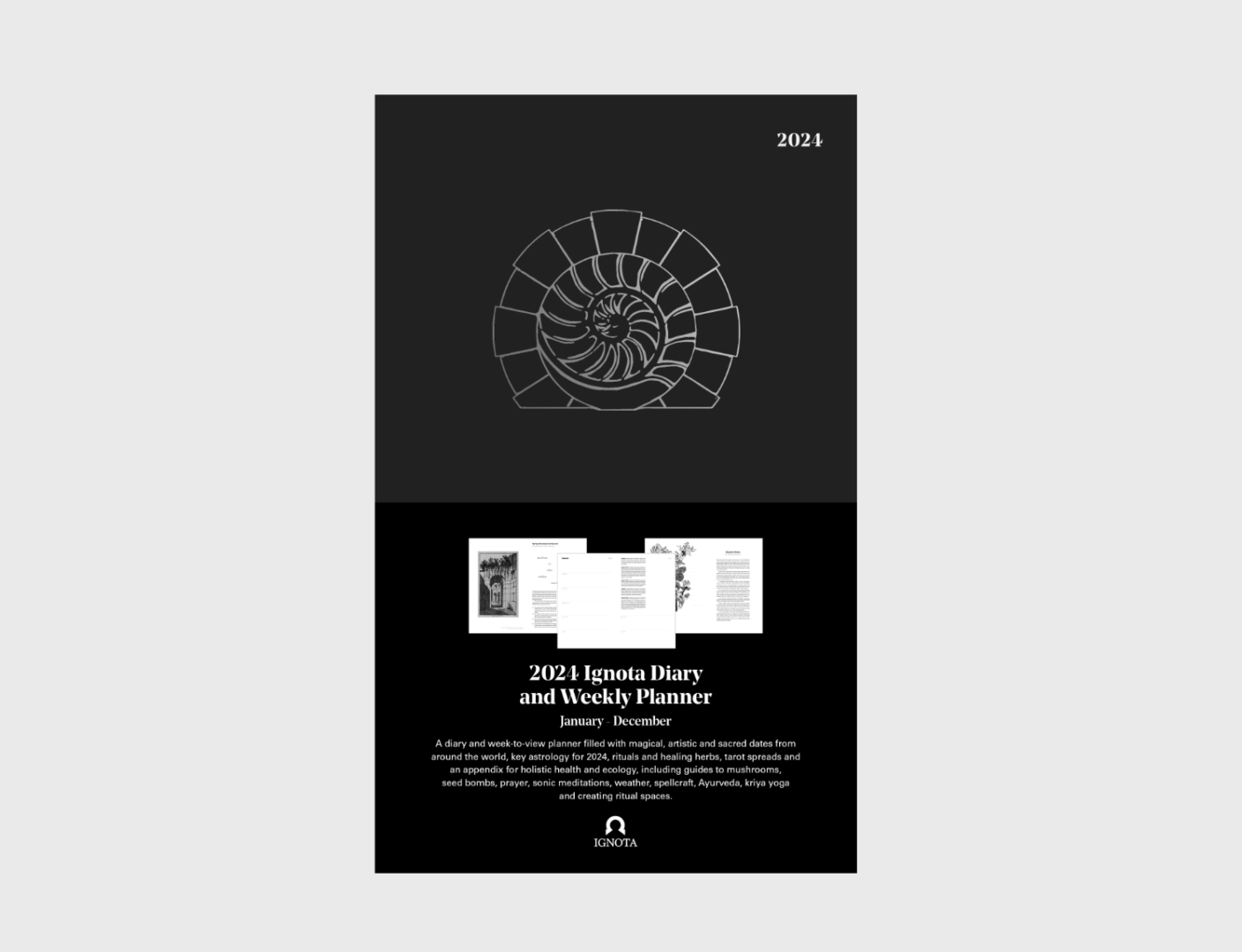
Created by Sarah Shin and Ben Vickers
Edited by Sarah Shin and Jay Drinkall
Designed by Cecilia Serafini
The Ignota Diary is a tool for discovery in the practice of everyday life.
This beautifully designed diary and week-to-view planner is filled with historically significant magical and sacred dates from around the world. Drawn from events such as the Buddha’s birthday, esoteric festivals and artistic and occult history, the diary touches on the lives of characters such as Ursula K. Le Guin, Ithell Colquhoun, Zora Neale Hurston, Carl Jung, Simone Weil, Leonora Carrington, Maya Deren, Aleister Crowley, George Bataille, Timothy Leary, Hilma af Klint, Saint Hildegard of Bingen, William Blake, W.B. Yeats and Octavia Butler.
The diary provides full astrological navigation for 2024 with an overview of the year by astrologer Gray Crawford, a birth chart template and guides to moon magic, houses, planets and symbols. A guide to key transits, retrogrades and lunar phases allows you to organise your life in alignment with the astrological weather. A global map showing sacred sites provides inspiration for transformative pilgrimages.
Rituals by artists Alexis Pauline Gumbs, Bhanu Kapil, Nisha Ramayya and Himali Singh Soin, and tarot spreads by adrienne maree brown, Sarah Faith Gottesdiener and Pam Grossman, offer guidance and space for reflection throughout the year. Additional sources of inspiration include guides to sonic meditation by Pauline Oliveros, sacred spaces by Leila Sadeghee, mushrooms by Ellen Percival, and spellcraft by Bones Tan-Jones, weather by Jay Drinkall and soji cleaning by Zen monk Shoukei Matsumoto, author of the bestseller A Monk’s Guide to a Clean House and Mind. To support a holistic approach to health and wellbeing, an appendix contains guides to sacred spaces, healing herbs, acupressure, kriya yoga and daily practice.
Contributors: Acupressure by Maria Christofi, Astrology by Gray Crawford, Herbal Remedies by Paige Emery, Kriya Yoga by Rachel Okimo, Korean Ink Illustrations by Jungran Kim, Mushroom Guide by Ellen Percival, Prayer Guide by K Allado-McDowell, Rituals by Alexis Pauline Gumbs, Bhanu Kapil, Nisha Ramayya and Himali Singh Soin, Ritual Spaces by Leila Sadeghee, Seed Bombs by Jenna Sutela, Sonic Meditations by Pauline Oliveros, Spellcraft by Bones Tan-Jones, Tarot by adrienne maree brown, Sarah Faith Gottesdiener and Pam Grossman, Weather by Jay Drinkall.
Praying Hands Candles

Ideal for meditation and devotional practice, the Ignota x Croydon Candles Praying Hands Candles come in three scents:
- Frankincense (purple) for energetic purification, protection and enhancing intuition.
- Sandalwood (blue) for calming the mind, encouraging heart-opening and relaxation.
- Oud wood (black) for cultivating peace, inner strength and eliminating negative energies.
Specially commissioned by Ignota in a highly limited edition, these soy wax candles are individually handmade by Croydon Candles in London.
Resources for Palestine
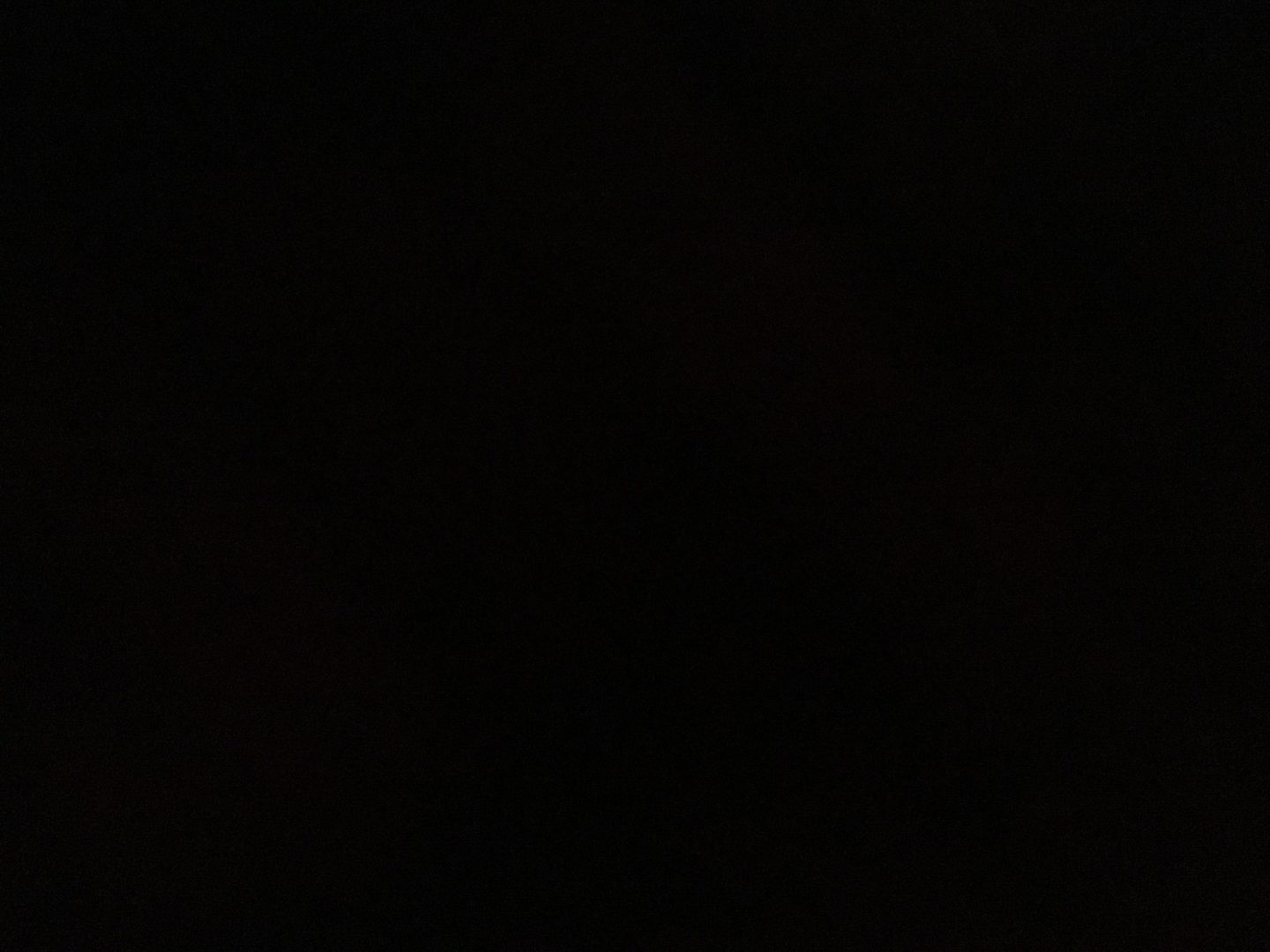
Support the Palestinian people in their struggle for liberation – collected resources below.
DONATIONS
Médecins Sans Frontières
International Committee of the Red Cross
Medical Aid For Palestinians
Alliance For Middle East Peace
LETTERS
Sign the Mosaic Rooms letter calling for cultural organisations to show solidarity to Palestine
Sign the Artists for Palestine letter of solidarity
Email your MP (UK)
RESOURCES
Reading resources by Mosaic Rooms
Read STUART issue 2, digitised for free and hosted by Mosaic Rooms
Why to boycott the Zabludowicz, e-flux
Read the87press’s call to action for fellow NPOs
BOYCOTT AND DIVESTMENT ORGS
https://boycottzabludowicz.wordpress.com/
https://bdsmovement.net/
STRIKE
Ignota will join the global strike for Palestine on Friday, 20 October. Together with artists and other organisations, we will be closed and use this time to learn and reflect together in order to work for a better future for everyone. We encourage you to join in solidarity.
Ignota Gathering: The Spiral
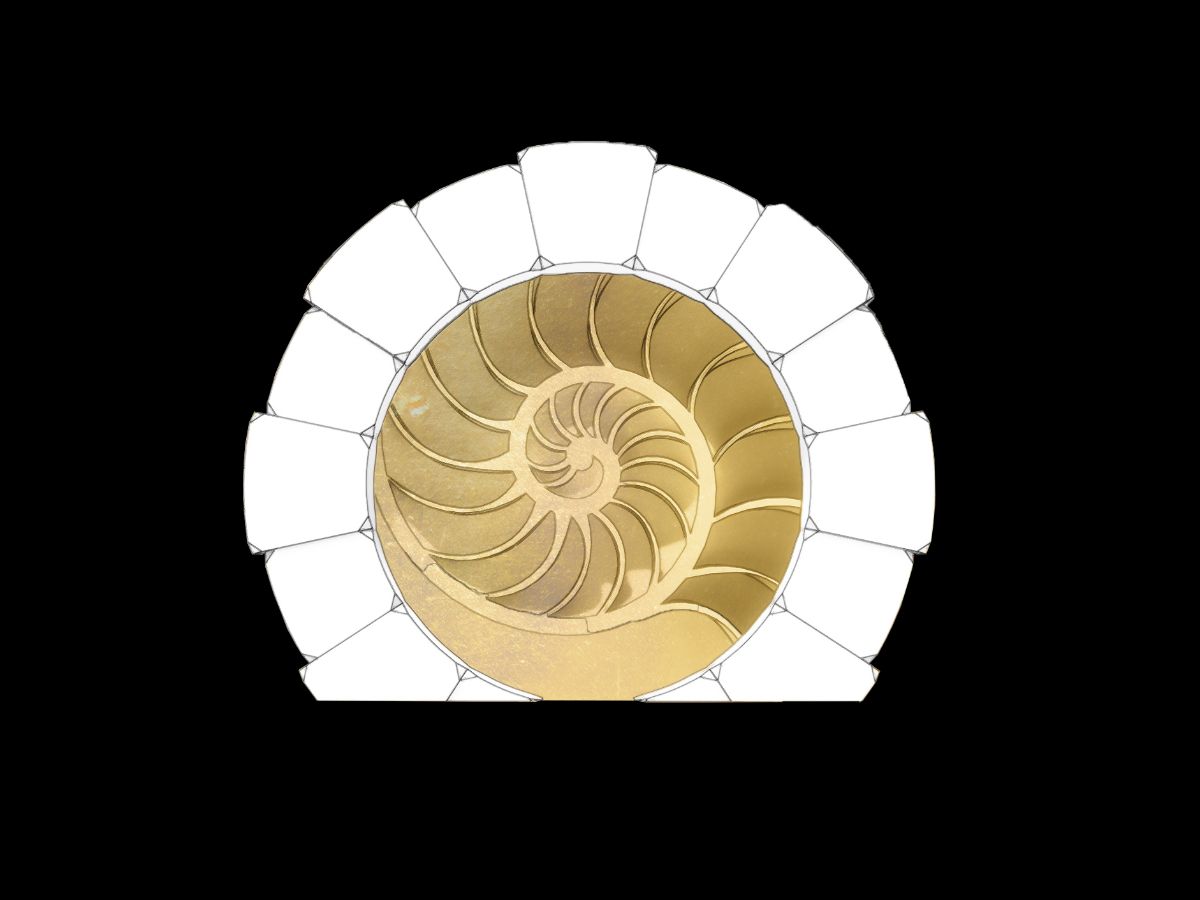
St James’s Church Piccadilly, London
Friday 13 October 2023, 13:00-22:00.
The Spiral is a turning, a gathering – a world in the making. A common pattern of nature – found across cosmic galaxies, snail shells, pine cones, flowers and DNA – the spiral symbolises the constant change and evolution of the universe. Spirals are also a structure of experience and memory: we learn and grow through repetition and return.
Join us at The Ignota Gathering: The Spiral to celebrate Ignota’s fifth birthday on Friday 13 October at St James’s Church, Piccadilly, London, with Ignota’s friends and family to explore the spiral through resonance, poetry and philosophy.
The day and evening will unfold across dialogues, collaborations and performances spiralling around psychedelic hieroglyphs, Hilma af Klint’s imagery and the spirit realm, cinematic whorls, the Endcore doom- and downward- spiral into Horny-Sad Hell, eternity and ornament, open-ended languages and more.
‘True journey is return.’ – Ursula K. Le Guin
With Shumon Basar, Federico Campagna, Jennifer Higgie, Bones Tan Jones, Bhanu Kapil, Paul Purgas, Nisha Ramayya, Himali Singh Soin, Tzekin and Flora Yin Wong for the afternoon.
And Lucinda Chua, NYX, Tai Shani and Maxwell Sterling for the evening.
Programmed by Sarah Shin and Susanna Davies-Crook.
Supported by the ICA London and SJP.
Aura Satz Spell Cards
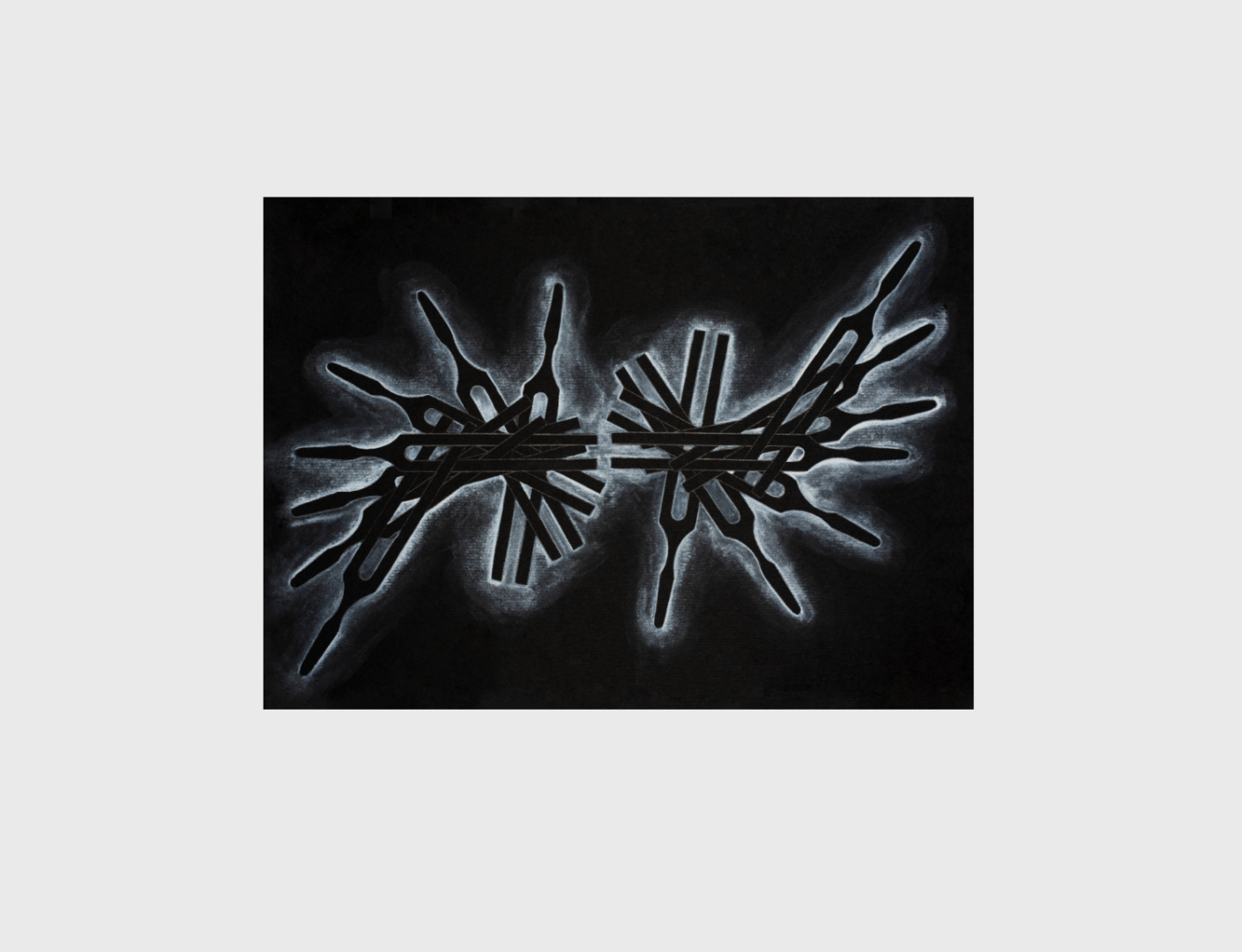
‘Our world is a complex matrix of vibrating energy, matter and air, just as we are made of vibrations. Vibration connects us with all beings and connects us to all things interdependently.’ – Pauline Oliveros
For the publication of Quantum Listening by Pauline Oliveros, artist Aura Satz has created Tuning Fork Spells, a series of drawings made through a meditative process of attention and attunement.
- 105 x 148mm
- Fine print on thick paper
- Each spell card includes a Deep Listening quote by Pauline Oliveros on the reverse
Reading Gaia
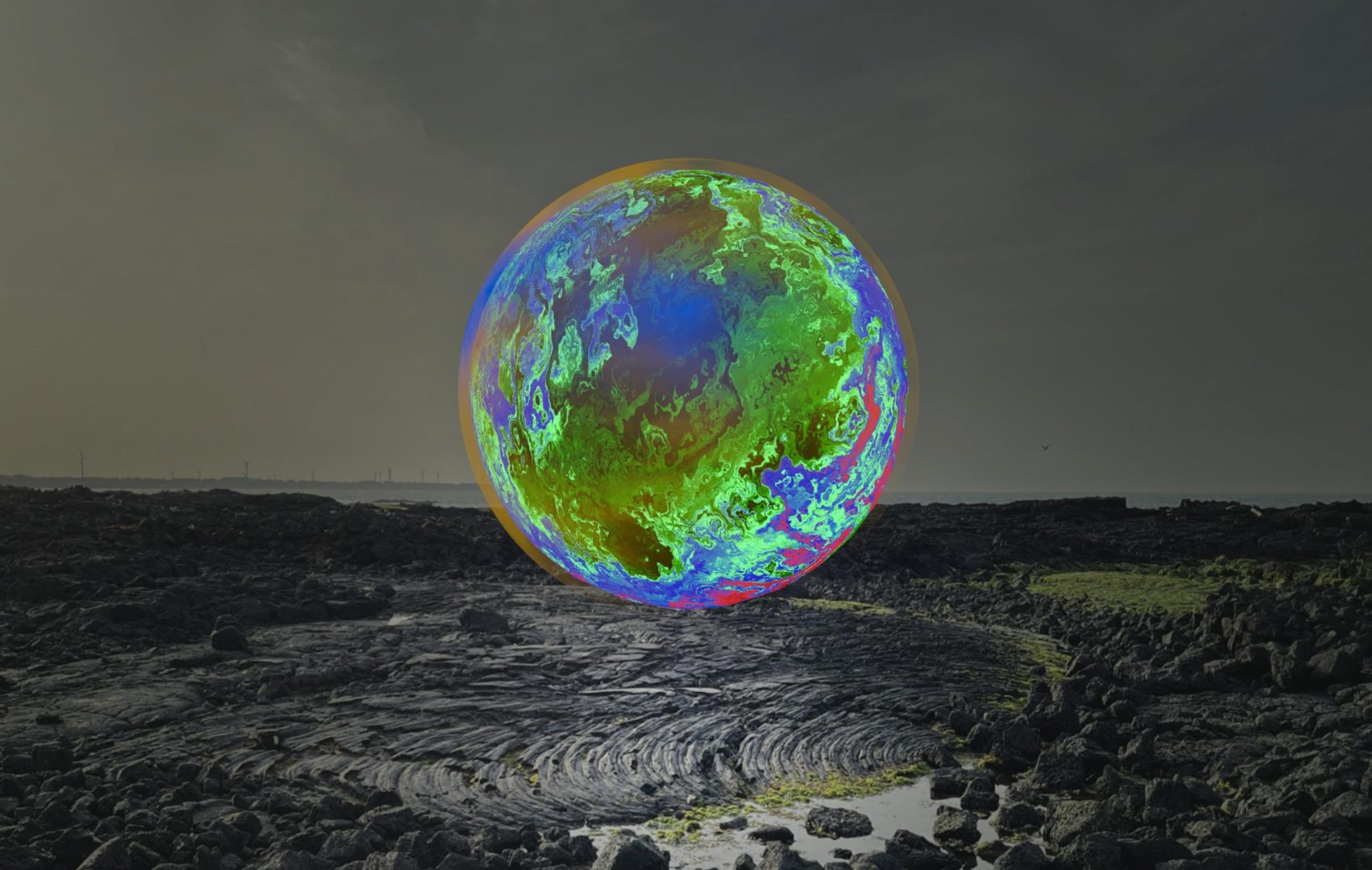
With Josh Appignanesi, Buzz Baum and Anouschka Grouse
Tuesday 12 September, Reference Point, 180 Strand, London
In this reading group and talk, we read Gaia and Philosophy by Lynn Margulis and Dorion Sagan (Ignota, 2023) and explore what Gaian ideas of interdependence, collaboration and symbiosis offer for life on Earth.
After reading from the text, filmmaker Josh Appignanesi discuss Gaia theory through the lens of activism alongside Buzz Baum from the MRC Laboratory of Molecular Cell Biology and psychoanalyst and writer Anouchka Grose. Josh’s new film My Extinction asks: What does it take for us to act on the climate crisis – especially if we’re the kind of person who should already be acting?
Gaia describes a living Earth, an idea with precedents in natural science and philosophy for 2,500 years, and longer in many indigenous belief systems. If the Gaia hypothesis has provided a basis for a new ecology, connected to rich world-views, how can we effect real change for the future of our planet? What are the alternatives to failing systems underpinned by greed and short-termism?
Gaian Worlds
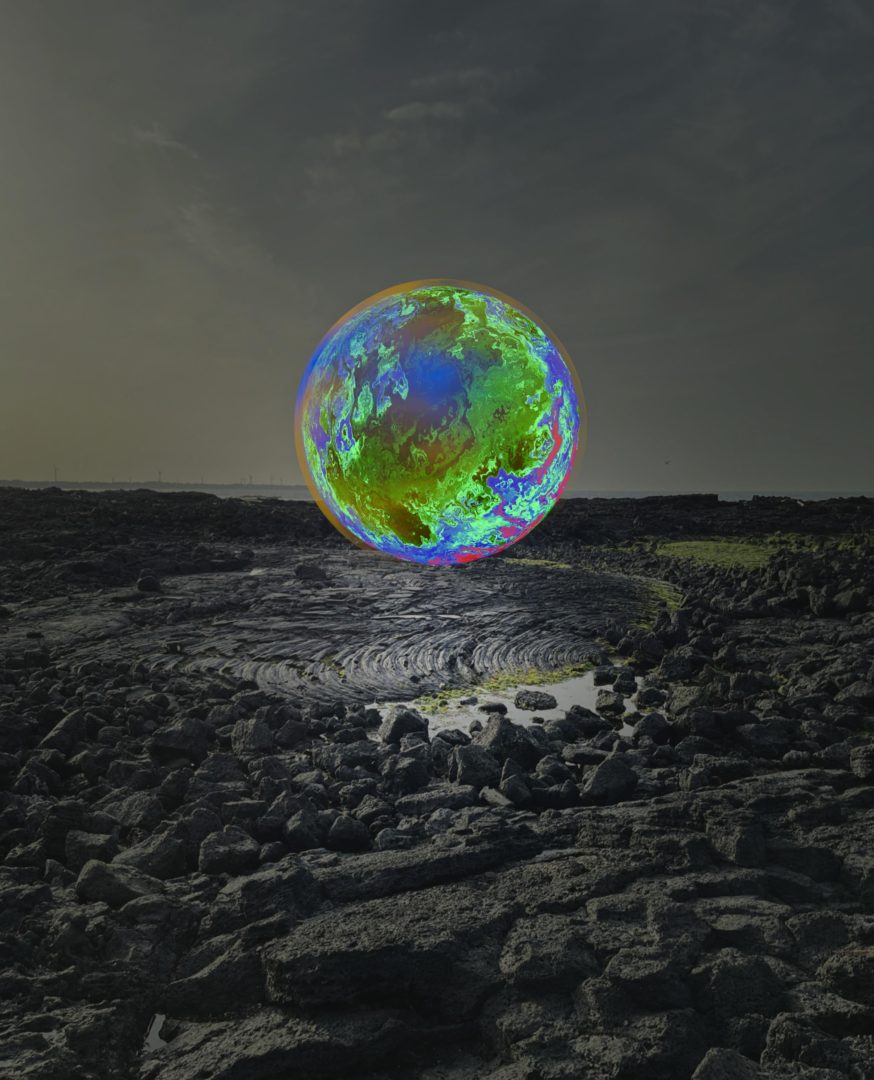
Unsound Festival, Krakow, Poland
At Unsound 2023, Ignota presents three journeys by Susanna Davies-Crook, Lyra Pramuk and Sarah Shin as a planet in the form of a body, a body in the form of a planet. These journeys take the forms of sonic choreographies, games and enquiries to explore the boundary between the internal and external. Traversing this world-skin – coming together and coming apart – they challenge the illusion of separation between individuation and collaboration, self and other.
Gaian Ecologies
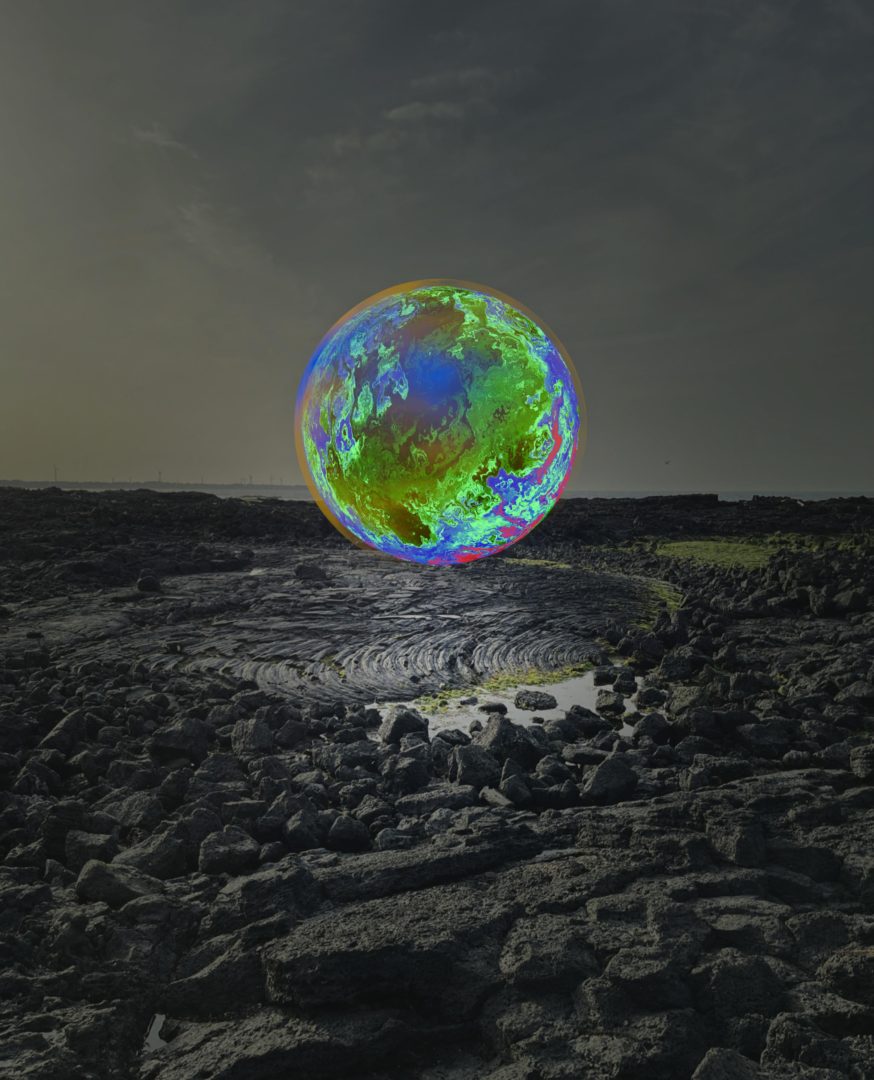
17 September 2023, 14:00–19:00
Camden Arts Centre Garden, London
‘Gaia Season: A Body in the Form of a Planet’ celebrates Gaia theory and the influence of interdisciplinary biologist Lynn Margulis’ life and work.
On this day of active research in the garden, artists, speakers and gardeners lead journeys and enquiries into organisms, slime trails and compost, and expanded ways of looking at life. Knee-deep in swamps and water, pulling up clumps of mud and silt, Margulis studied the microbial in order to understand Gaia as a whole. Ignota’s Gaia season echoes Margulis’ methods of hypothesis and experimentation to dig into the theories of Gaia and the practice of examining life on Earth.
Confirmed artists and speakers include Tamara Henderson, Taey Iohe, Tom Jeffreys, Harun Morrison, Himali Singh Soin, Wild Alchemy Lab, and more to be announced.
Programmed by Susanna Davies-Crook and Sarah Shin.
Image: Bloom by Sammy Lee.
As Above, So Below: Gaia – The Story of Science
22 April 2023, 11:30 BST
Science Gallery, Great Maze Pond, London SE1 9GU
With Sougwen Chung, Asad Raza and Gary Zhexi Zhang.
What are the legacies and utilities of Gaia theory within today’s art, culture, technology and society? In this panel discussion, artists, technologists, curators and scientists reflect on the influence of Gaia theory on contemporary ideas and practices of collaboration, mutualism and sustainability. What new models of living can be developed that prioritise ecological stewardship and economic redistribution? How do Gaian ideas support human and other-than-human creativity and explorations of consciousness?
This panel discussion took place as part of AS ABOVE, SO BELOW. The event, coinciding with the launch of Gaia and Philosophy, draws inspiration from Lynn Margulis’ creative scientific vision to illuminate the interconnectedness of life, from microbial to planetary bodies. Taking place in the context of the climate emergency and coinciding with the publication of Gaia and Philosophy by Margulis and Dorion Sagan (Ignota, 2023), the programme explores the importance of Gaia theory – not only for understanding the emergence of past life and interconnectedness of human and other-than-human existence today, but to ask what possibilities Gaia offers for shaping our future.
Curated by Sarah Shin, co-founder of Ignota Books, in collaboration with Gaia Art Foundation and Science Gallery London. Media Partner: Tank. Video courtesy Science Gallery London.
As Above, So Below: Gaia Today
22 April 2023, 11:30 BST
Science Gallery, Great Maze Pond, London SE1 9GU
With Edna Bonhomme, Daisy Hildyard, Merlin Sheldrake and Gaia Vince.
Gaia theory has inspired scientific and cultural narratives that highlight the interdependence of humans and the natural world. Drawing on biology, environmental science, climate and histories and languages of science, the panellists will explore Gaia theory as a form of scientific storytelling that weaves together different disciplines and connects them to a profound narrative about the Earth’s history and future. What is the role of science in society? What kinds of storytelling allow us to hold many sciences together at the same time?
This panel discussion took place as part of AS ABOVE, SO BELOW. The event, coinciding with the launch of Gaia and Philosophy, draws inspiration from Lynn Margulis’ creative scientific vision to illuminate the interconnectedness of life, from microbial to planetary bodies. Taking place in the context of the climate emergency and coinciding with the publication of Gaia and Philosophy by Margulis and Dorion Sagan (Ignota, 2023), the programme explores the importance of Gaia theory – not only for understanding the emergence of past life and interconnectedness of human and other-than-human existence today, but to ask what possibilities Gaia offers for shaping our future.
Curated by Sarah Shin, co-founder of Ignota Books, in collaboration with Gaia Art Foundation and Science Gallery London. Media Partner: Tank. Video courtesy Science Gallery London.
As Above, So Below
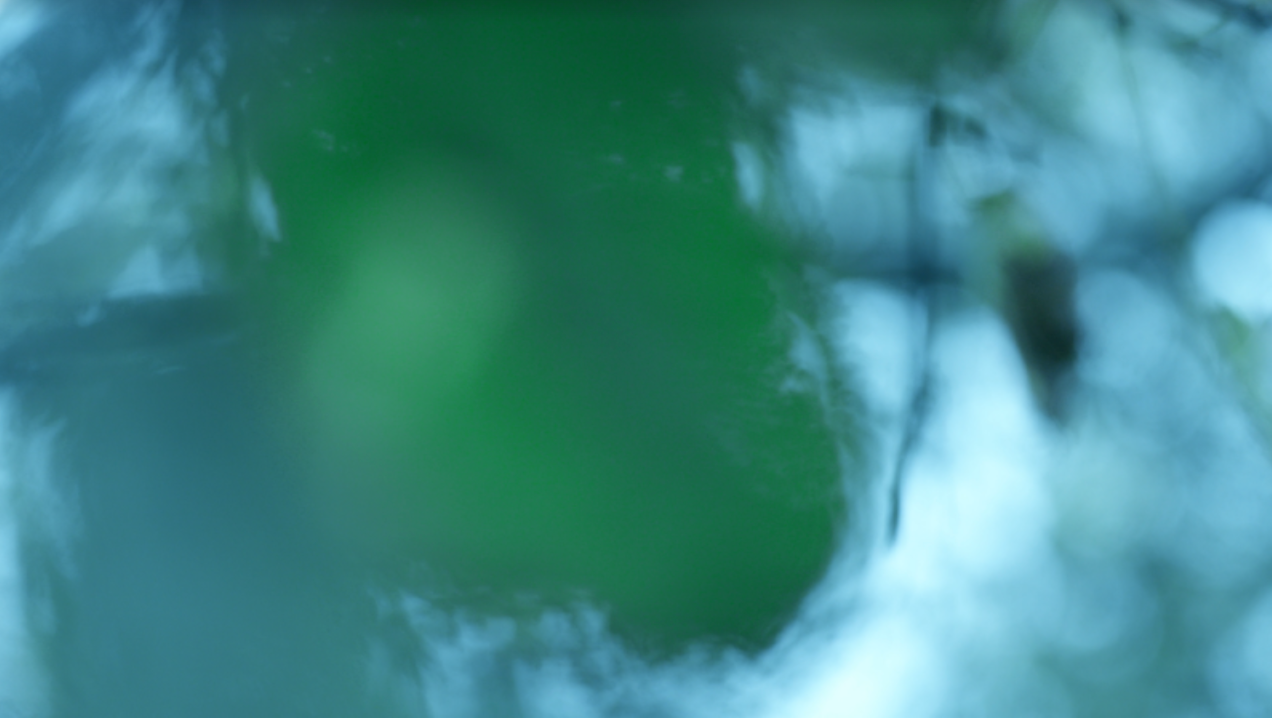
In the 1970s, microbiologist Lynn Margulis and atmospheric chemist James Lovelock developed the Gaia theory. Embracing the circular logic of life and engineering systems, the Gaia theory states that Earth is a self-regulating complex system in which life interacts with and eventually becomes its own environment. Gaia, describing a living Earth – a body in the form of a planet – resonates with the ancient magico-religious understanding that all is one: as above, so below.
AS ABOVE, SO BELOW draws inspiration from Lynn Margulis’ creative scientific vision to illuminate the interconnectedness of life, from microbial to planetary bodies. Taking place in the context of the climate emergency and coinciding with the publication of Gaia and Philosophy by Margulis and Dorion Sagan (Ignota, 2023), the programme explores the importance of Gaia theory — not only for understanding the emergence of past life and interconnectedness of human and other-than-human existence today, but to ask what possibilities Gaia offers for shaping our future.
SCHEDULE
Friday 21 April
18:45: Doors open
19:00 – 21:30: Screening of Symbiotic Earth (Theatre)
AR by Sammy Lee in Atrium
Symbiotic Earth: How Lynn Margulis rocked the boat and started a scientific revolution
Symbiotic Earth explores the life and ideas of scientific rebel Lynn Margulis, who challenged entrenched theories of male-dominated science and caused a seismic shift in our understanding of life. Divided into ten discrete essays, the film explores how her vision of a symbiotic planet offers bold insights into health, society and nature, and inspires creative approaches to our pressing environmental and social crises.
Director: John Feldman, 2017, 2h 27m
Saturday 22 April
11.15 – 11.30: Introductions by Sarah Shin and Burcu Yuksel (Theatre)
11.30 – 12.30: Gaia – The Story of Science panel discussion (Theatre)
12:30 – 1.30: Break for lunch
13.30 – 14.30: Gaia Today panel discussion (Theatre)
14.45 – 15.45: Polymorphic Microbe Bodies Workshop (Workshop)
14.45 – 16.15: Artists’ film screenings (Theatre)
16.15 – 17.15: Poetry readings
AR by Sammy Lee in Atrium
PANEL DISCUSSIONS
Gaia: The Story of Science
Edna Bonhomme, Daisy Hildyard, Merlin Sheldrake and Gaia Vince.
Gaia theory has inspired scientific and cultural narratives that highlight the interdependence of humans and the natural world. Drawing on biology, environmental science, climate and histories and languages of science, the panellists will explore Gaia theory as a form of scientific storytelling that weaves together different disciplines and connects them to a profound narrative about the Earth’s history and future. What is the role of science in society? What kinds of storytelling allow us to hold many sciences together at the same time?
Gaia Today
Sougwen Chung, Asad Raza and Gary Zhexi Zhang.
What are the legacies and utilities of Gaia theory within today’s art, culture, technology and society? In this panel discussion, artists, technologists, curators and scientists reflect on the influence of Gaia theory on contemporary ideas and practices of collaboration, mutualism and sustainability. What new models of living can be developed that prioritise ecological stewardship and economic redistribution? How do Gaian ideas support human and other-than-human creativity and explorations of consciousness?
WORKSHOP
Polymorphic Microbe Bodies: Multisensory Somatic Workshop
Erin Robinsong and Hanna Sybille Müller
Polymorphic Microbe Bodies is a multisensory dance work created by Hanna Sybille Müller and Erin Robinsong that invites audiences on a somatic journey into their own bodies. Guided by binaural sound, smell, touch, language and taste, we travel the microbial worlds inside our mouths, guts and imaginaries. More than half the cells in our bodies are not human but microbial, and we are like planets, composed of ecosystems, inhabitants and relationships. Bacteria, viruses, archaea and fungi together form ‘our’ body. What does it mean to be a multispecies community? How do we feel our multiplicity?
NOTE: Participants must bring their own headphones and smartphone to access the binaural sound file via a QR code.
ARTISTS SHORT FILMS
Eglė Budvytytė in collaboration with Marija Olšauskaitė and Julija Lukas Steponaitytė, Songs from the compost: mutating bodies, imploding stars, 2020
Songs from the compost is a hypnotic exploration of nonhuman forms of consciousness and different dimensions of symbiotic life: interdependence, surrender, death, and decay. The song lyrics draw on the work and words of biologist Lynn Margulis, celebrating the role of bacteria in making life and the collaboration between the single-cell organisms possible, as well as concepts by the science-fiction author Octavia Butler, who employed tropes of symbiosis, mutation, and hybridity to challenge hierarchies and categorisation.
Kyriaki Goni, A way of resisting (Athens Data Garden), 2020
An imaginary community of digital citizens stores its most valuable digital data in micromeria acropolitana – a small plant that is endemic to the Acropolis. The life cycle of data follows that of a plant, fostering a relation of interdependence and care. In a peculiar garden, users become the plants’ gardeners, whereas plants in their turn become gardeners of the stored information. Can anyone think of the future of connectivity beyond surveillance, minimising the consequences of technological infrastructures on the natural environment? Is it possible for the bond between human and non-human worlds on this planet to be substituted?
Asad Raza, Ge, 2020-ongoing
The first iteration of Ge, an endless and evolving video work, mixes fiction and documentary to create a portrait of the bioscape surrounding James Lovelock’s Dorset home: the conditions that produced the idea of the planet as a living feedback loop. The second iteration features the artist and his daughter demonstrating how to make soil from sand, vegetable matter and other ingredients. The third iteration traces a sailing trip with seven musicians across Lake Erie, and a subsequent performance of music they made on the voyage, in collaboration with the lake.
Ben Rivers, Urth, 2016
Urth was filmed in and around Biosphere 2, the largest closed ecological system ever created for scientific research in the Arizona desert, designed to emulate Earth’s environment (Biosphere 1). Taking its title from the Old Norse word suggesting the twisted threads of fate, Urth forms a cinematic meditation on ambitious experiments, constructed environments, visions of the future and humankind’s relationship with the natural world. An unnamed protagonist, who appears to be the last survivor of her kind, reflects upon her own mortality and the unknowable fate of the planet after the end of humanity.
Mariana Sanchez Salvador and Rain Wu, As Above, So Below, 2020
Empathy begins with acknowledging the position of our body in the world, not simply towards a different body, but also across time and dimensions. Food spans across all aspects of our lives, from the most profane everyday nourishment to the sacrifices that made an anthropological imprint on the collective psyche. It connects science and myth, known and unknown. The meal, the settlement, the landscape, the cosmos, down to the microbial and viral in our guts and in the air—food allows us to discover a new perspective on our world. The film makes use of archive images and microscopic photography of edible substances—fruits, vegetables, grain, fish, vitamins—as a metaphor of the macro, to create a timeless, scaleless world.
Jenna Sutela, Holobiont, 2022
Holobiont considers the idea of embodied cognition on a planetary scale, featuring a zoom from outer space to inside the gut. It documents Planetary Protection rituals at the European Space Agency and explores extremophilic bacteria in fermented foods as possible distributors of life between the stars. Bacillus subtilis, the nattō bacterium, plays a leading role. The term ’holobiont’ stands for an entity made of many species, all inseparably linked in their ecology and evolution.
AR INSTALLATION
Bloom, Sammy Lee, 2023
Approximately 3.4 billion years ago, Earth experienced a profound transformation. In this volatile oceanic world, water, carbon dioxide and volcanic eruptions cycled through chaotic movements of thermodynamic energy. From this chaos,a random fusion of water, enzymes, and gasses organised into a primordial cell. This single, slime-encased cell, and its multiplication, led to the rise of oxygen and the transformation of the entire planet: from below, so above.
This extraordinary chain of events set the stage for the Gaia theory, first proposed by atmospheric scientist James Lovelock and developed with microbiologist Lynn Margulis in the 1970s. Describing a living earth – a self-regulating planetary system – Gaia theory was modeled by Lovelock and Andrew Watson’s 1983 simple computer simulation, Daisy World. This black-and-white daisy-filled world illustrated temperature regulation through the feedback mechanisms of the two different types of daisies interacting with the ‘Sun’. When there was more heat, white daisies proliferated to reflect the heat away from the surface of Daisy World and cool the planet; when there was less, black daisies proliferated over white daisies to absorb more heat and warm the planet.
Bloom, like Daisy World, is a Gaian planet. In this blue oceanic world, algae bloom in vibrant colours that respond to the energy of a simulated star to effect planetary cooling, producing a sulphur-dense atmosphere. This complex simulated world responds to Dorion Sagan’s description of Gaia in his new introduction to Gaia and Philosophy (Ignota, 2023) as less ‘a reactive, cybernetic system, but rather an anticipative, autopoietic one. Autopoiesis (auto: ‘self’; poiesis: ‘making’) refers to a system – living matter – that is self-reflexive, self-oriented, literally self-producing.’ Bloom’s autopoetic simulation, a microcosm on a planetary scale, takes place in augmented reality across mixed physical and digital ecosystems to invite reflection on the entanglement of multiple systems and hybrid environments.
POETRY READINGS
Pratyusha, Nisha Ramayya and Erin Robinsong close the programme with readings engaging with entanglement, care and ecology.
This event is curated by Sarah Shin, co-founder of Ignota Books, in collaboration with Gaia Art Foundation and Science Gallery London. Media Partner: Tank. Image credit: Asad Raza, still from Ge, 2020-ongoing.
Air Age Blueprint: K Allado-McDowell and Erik Davis in Conversation
3 February 2023 at the The Berkeley Alembic.
K Allado-McDowell reads from Air Age Blueprint, co-written with GPT-3. A speculative tale of a California filmmaker who encounters the world of Peruvian shamanism, the book is a fascinating follow-up to 2021’s oracular Pharmako-AI, which was the first book published in collaboration with the large language model.
Allado-McDowell, who established the Artists + Machine Intelligence program at Google AI, is joined by author and Alembic co-founder Erik Davis for a conversation on human-machine poesis, entheogenic futurism and technological animism.
Gaia and Philosophy
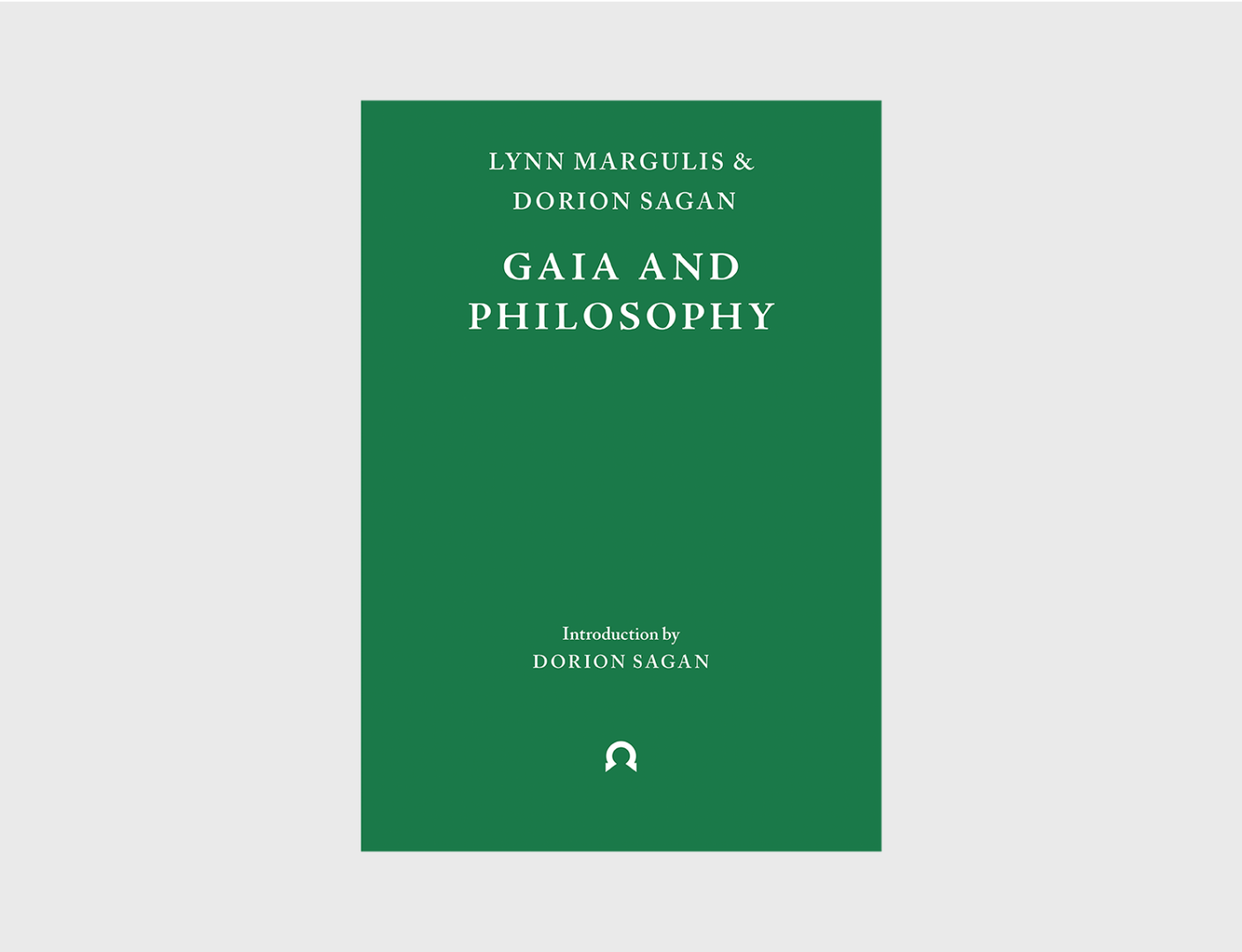
By Dorion Sagan and Lynn Margulis
Illustrations by Anicka Yi
In the 1970s, microbiologist Lynn Margulis and atmospheric chemist James Lovelock developed the Gaia theory. Embracing the circular logic of life and engineering systems, the Gaia theory states that Earth is a self-regulating complex system in which life interacts with and eventually becomes its own environment.
Gaia describes a living Earth: a body in the form of a planet. For billions of years, life has created an environment conducive to its continuation, influencing the physical attributes of Earth on a planetary scale. An idea with precedents in natural science and philosophy for millennia, Gaia resonates with the ancient magico-religious understanding that all is one: as above, so below. Fusing science, mathematics, philosophy, ecology and mythology, Gaia and Philosophy, with a new introduction by Dorion Sagan, challenges Western anthropocentrism to propose a symbiotic planet. In its striking philosophical conclusion, the revolutionary Gaia paradigm holds important implications not only for understanding life’s past but for shaping its future.
The Universe Listens to Us as We Listen to It
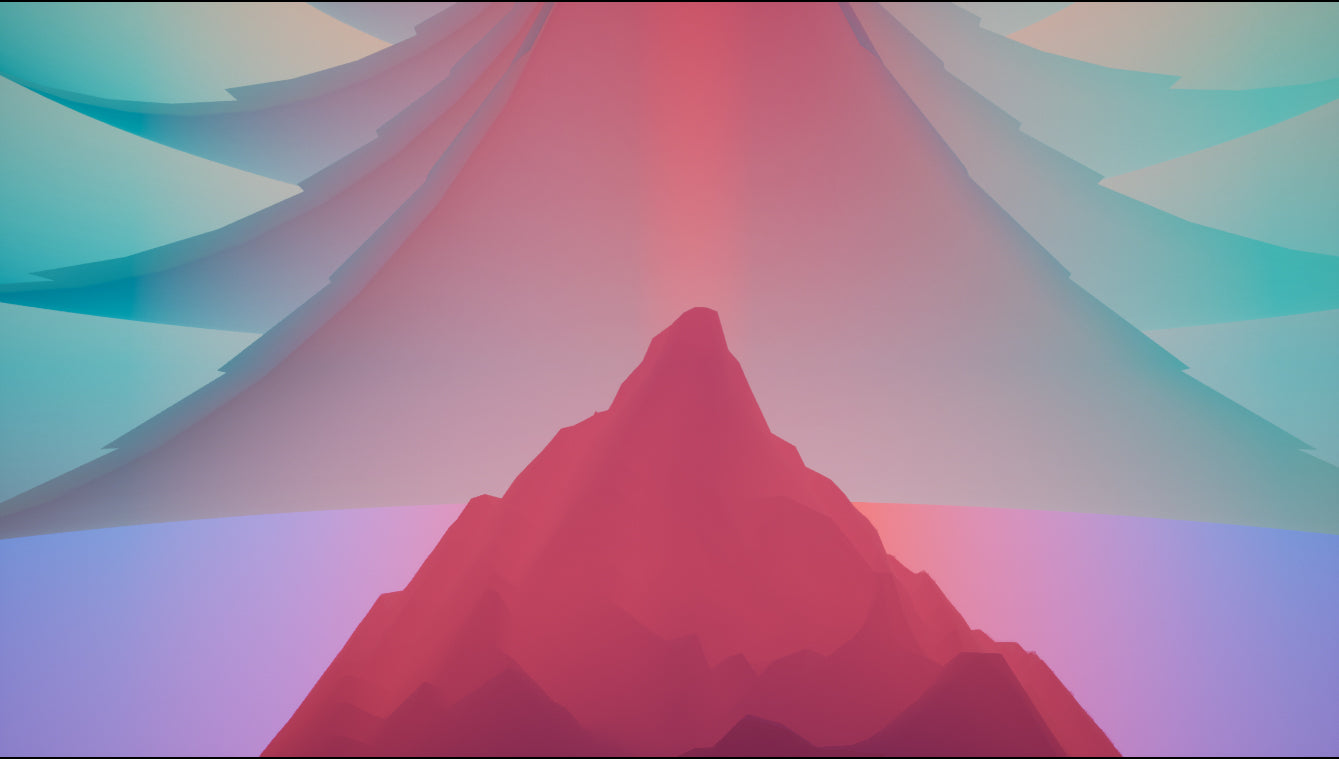
7 January 2023, 19:00
Cafe OTO, 18-22 Ashwin St, London E8 3DL
As above, so below. The Mountain rises above The Garden. As you set out, the way appears to the crown, where heaven meets earth. Your journey is accompanied by the sounds of The Mountain. The universe listens to us as we listen to it.
Ignota hosts an evening of sonic exploration, ambient resonance and abyssal sounds with. The Universe Listens to Us As We Listen to It is part of Ignota’s QUANTUM LISTENING season of events inspired by Pauline Oliveros that explore the roots and legacies of Deep Listening® with a broad curiosity toward vibration, resonance and altered states.
The evening will unfold through listening sessions, meditative performances, hypnotic journeys and expanded consciousness with special guests: Anna Wall and Susanna Davies-Crook collaborate on a hypnotic journey; Bones Tan Jones makes a vocal offering; Lawrence Lek presents an interdimensional journey through Nepenthe and the voices of artificial others; Lia Mice performs the Chaos Bells, with more performances and offerings by Maxwell Sterling and Ignota friends and family.
Anna Wall presents a brand new track continuing the ambient exploration of her Dream Theory label, which focuses on healing sonics, ambient and experimental music. Here she collaborates with Ignota’s Susanna Davies-Crook on a hypnotic journey.
Bones Tan Jones will make a vocal offering.
Lia Mice will perform the Chaos Bells, her self-designed instrument that features twenty gesturally performed pendulums. Chaos Bells is named after its unique sound design in which bell sounds can drone and become chaotic is how it gained its name.
Lawrence Lek opens a portal to his virtual worlds of listening and disembodied wanderings. He presents an interdimensional journey through Nepenthe, and grants us access to his ongoing series of sonic and visual landscapes, each centred around the voice of an artificial other.
The Universe Listens to Us As We Listen to It celebrates the launch of Ignota’s new membership portal The Mountain: a platform for aural exploration and sonic content including poetry, music, weird tech, ritual and practice.
Quantum Listening by Pauline Oliveros (Ignota, 2022) is a manifesto for listening as activism. Through simple yet profound exercises, Oliveros shows how Deep Listening is the foundation for a radically transformed social matrix: one in which compassion and peace form the basis for our actions in the world.
Caves, Dwelling & Vibration
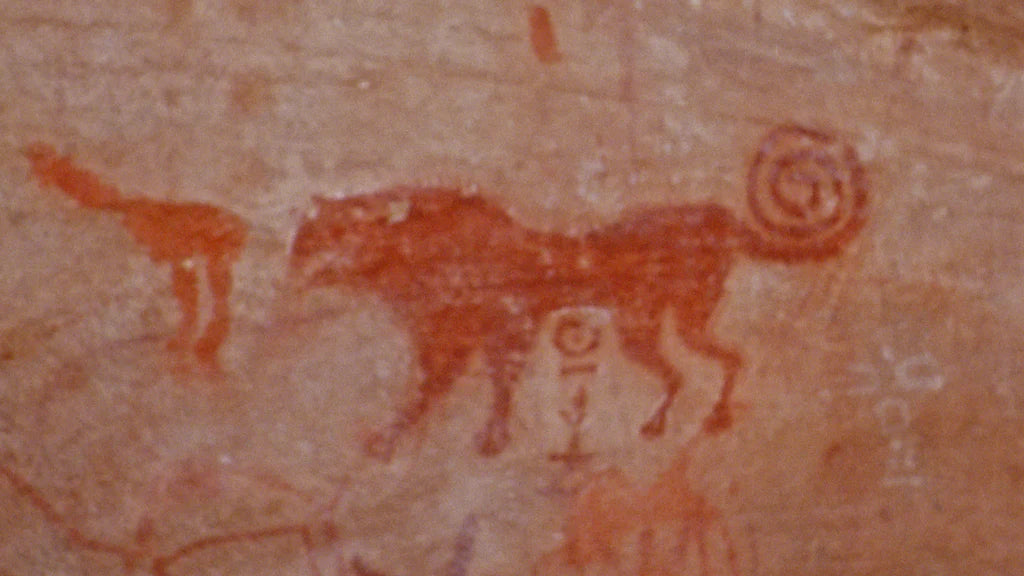
10 – 11 December 2022 at Nottingham Contemporary
A sensorial exchange across research, mediation and performance in response to the exhibition Hollow Earth: Art, Caves & The Subterranean Imaginary. The show highlights Nottingham’s extraordinary condition as a city built on a network of caves – being the UK’s largest network over 800 hidden beneath. Caves, Dwelling & Vibration aspires to look closely into the poetic and artistic knowledge and wisdom caves carry, to deepen and complexify our understanding of geologic and deep time, archaeo-acoustics and the uses of caves as spaces of dwellings but also as spaces of upheaval.
The programme includes contributions by Laura Emsley, Ella Finer, Louis Henderson, Emma McCormick-Goodhart, Frances Morgan, Flora Parrott, Frank Pearson and Kathryn Yusoff among others. The programme is curated by Canan Batur, assisted by Philippa Douglas.
Each day ends with listening sessions and sonic meditations inspired by the work of Pauline Oliveros and the publication Quantum Listening (Ignota Books 2022). Performances by Evan Ifekoya, Paul Purgas and Lucy Railton will unfold in The City of Caves, underneath Nottingham Contemporary.
This event is programmed in collaboration with Canan Batur and Susanna Davies-Crook of Ignota Books. It forms part of Ignota’s QUANTUM LISTENING season of events that will explore the roots and legacies of Deep Listening™ with a broad curiosity toward vibration, resonance and altered states.
Image: Lydia Ourahmane, Tassili, 2022, excerpt. 4K video, 16mm transferred to video, digital animation, sound. Courtesy: Lydia Ourahmane.
Quantum Listening Launch
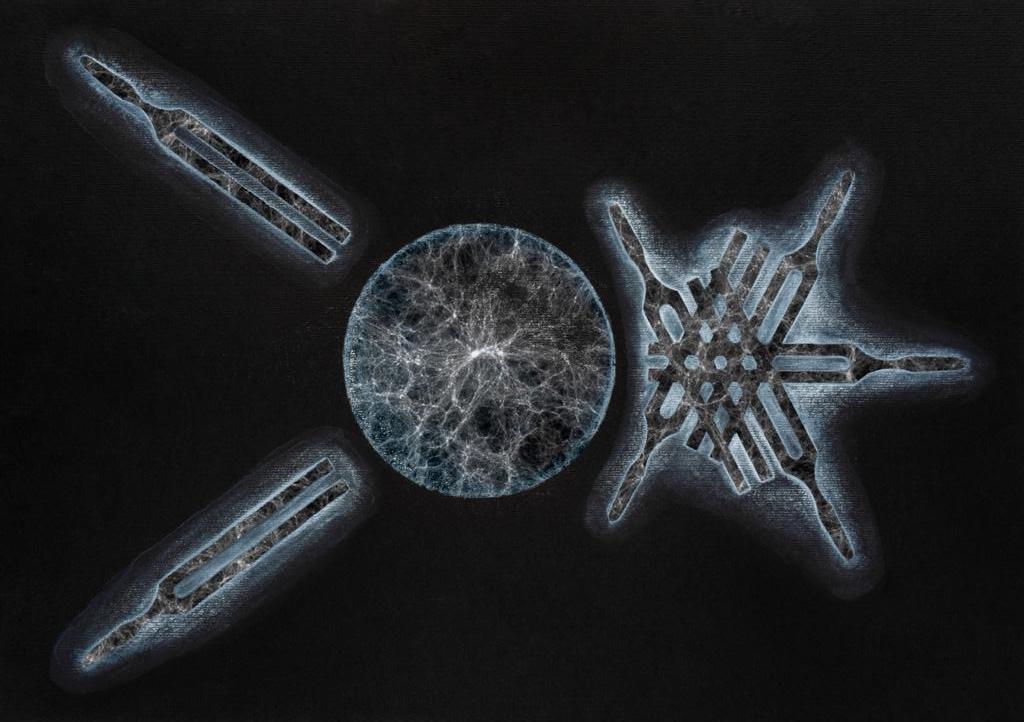
15 November 2022, 19:00
Reference Point, 2 Arundel St, Temple, London WC2R 3DA
Does sound have consciousness? Can you imagine listening beyond the edge of your own imagination?
Celebrate the launch of pioneering musician Pauline Oliveros’ Quantum Listening with Ignota Books at Reference Point. This marks the first in our QUANTUM LISTENING season of events that will explore the roots and legacies of Deep Listening™ with a broad curiosity toward vibration, resonance and altered states.
Join us for an evening of sonic meditation, ambient resonance and abyssal sounds with artist Aura Satz, curator and writer Irene Revell and NTS creative director Tabitha Thorlu-Bangura, hosted by Ignota’s Sarah Shin and Susanna Davies-Crook.
Quantum Listening is a manifesto for listening as activism. Through simple yet profound exercises, Oliveros shows how Deep Listening is the foundation for a radically transformed social matrix: one in which compassion and peace form the basis for our actions in the world.
Spooky Action at a Distance
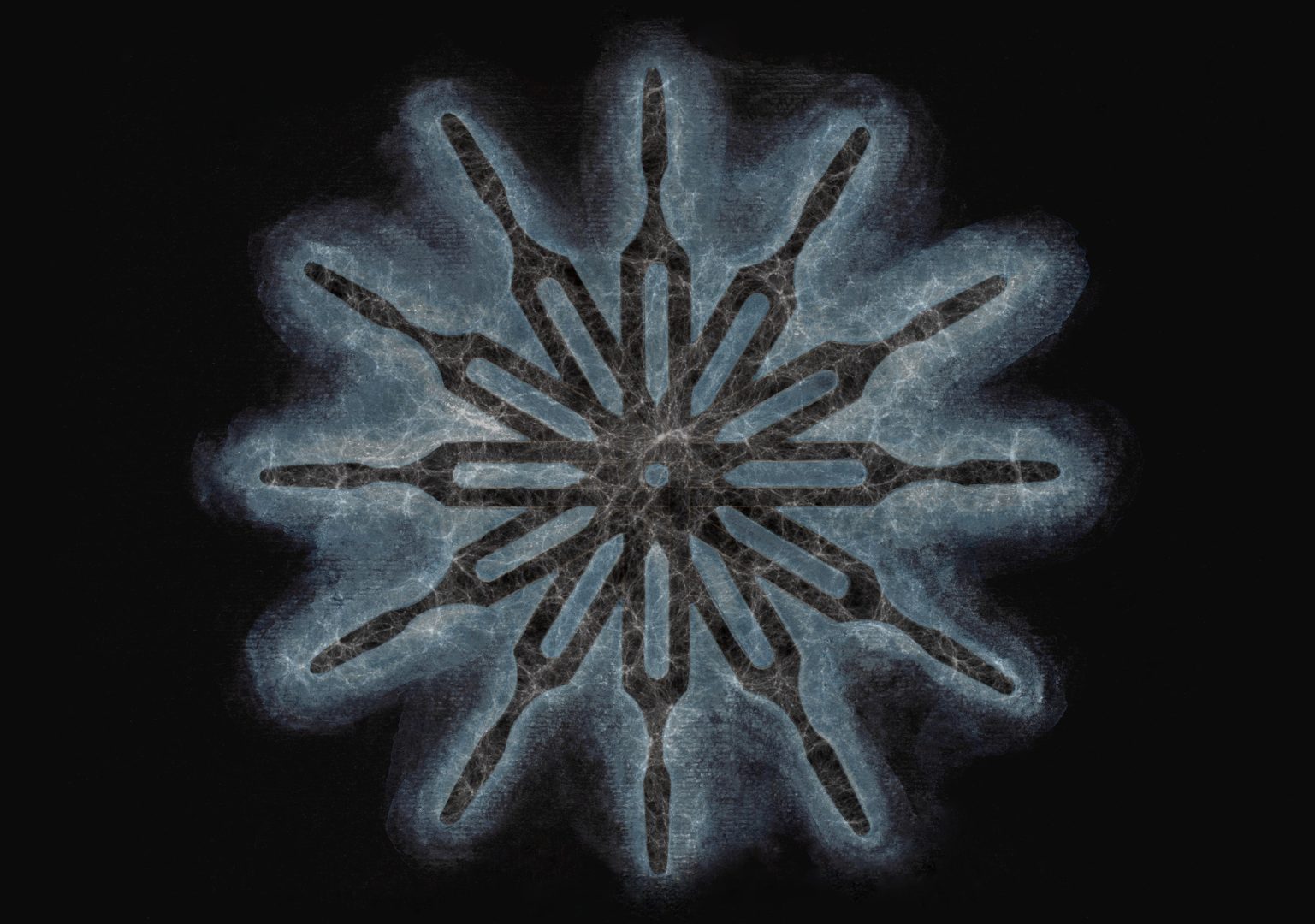
29 October 2022, 19:00
Mimosa House, 47 Theobalds Rd, London WC1X 8SP
Ignota is four years old! As the veil draws thin, join us to welcome the darker half of the year and to celebrate our birthday on 29 October at Mimosa House with an evening exploring quantum spookiness, haunted synchronicities, slimy entanglements and altered states of consciousness.
In the so-called ‘normal’, observable world, everything might appear to be either a wave or a particle. But if we alter our means of perception, everything is always both. As the air age unfolds, Ignota draws inspiration from quantum theories about the inevitability of relation to look towards a more hopeful, more magical paradigm for collectivity, interrelationship and healing, even and especially in moments of complexity and chaos.
This event featured readings, practices, dreams and questions: Dreaming with the Hag – a dream invocation and incubation with IONE; an Altered States mini-launch with poets So Mayer and James Goodwin and Ignota’s Sarah Shin; a yarn entanglement ritual with healer Leila Sadeghee; a hypnotic journey through illuminating visions led by the mind’s eye with Ignota’s Susanna Davies-Crook; and a slimy performance lecture by artist and quantum physicist Libby Heaney: a slippery stream-of-consciousness travelling through quantum phenomena including sticky entanglements, many-sided superposition, slime and nature, set to a layered video montage edited with ’spooky action at a distance’ data from IBMs quantum computers.
Air Age Blueprint Longsleeve
 Celebrating the launch of Air Age Blueprint , weaving fiction, memoir, theory and travelogue into an animist cybernetics – an air age blueprint – this 100% cotton, jersey knit longsleeve features artwork by Somnath Bhatt.
Celebrating the launch of Air Age Blueprint , weaving fiction, memoir, theory and travelogue into an animist cybernetics – an air age blueprint – this 100% cotton, jersey knit longsleeve features artwork by Somnath Bhatt.
- 100% cotton, preshrunk jersey knit, 203gsm
- Classic fit
- Ribbed collar
- Taped neck and shoulders
- Cuffed sleeves.
- Tubular body.
- Twin needle neck and hem
Aura Satz Edition: ‘Tuning Fork Spell’
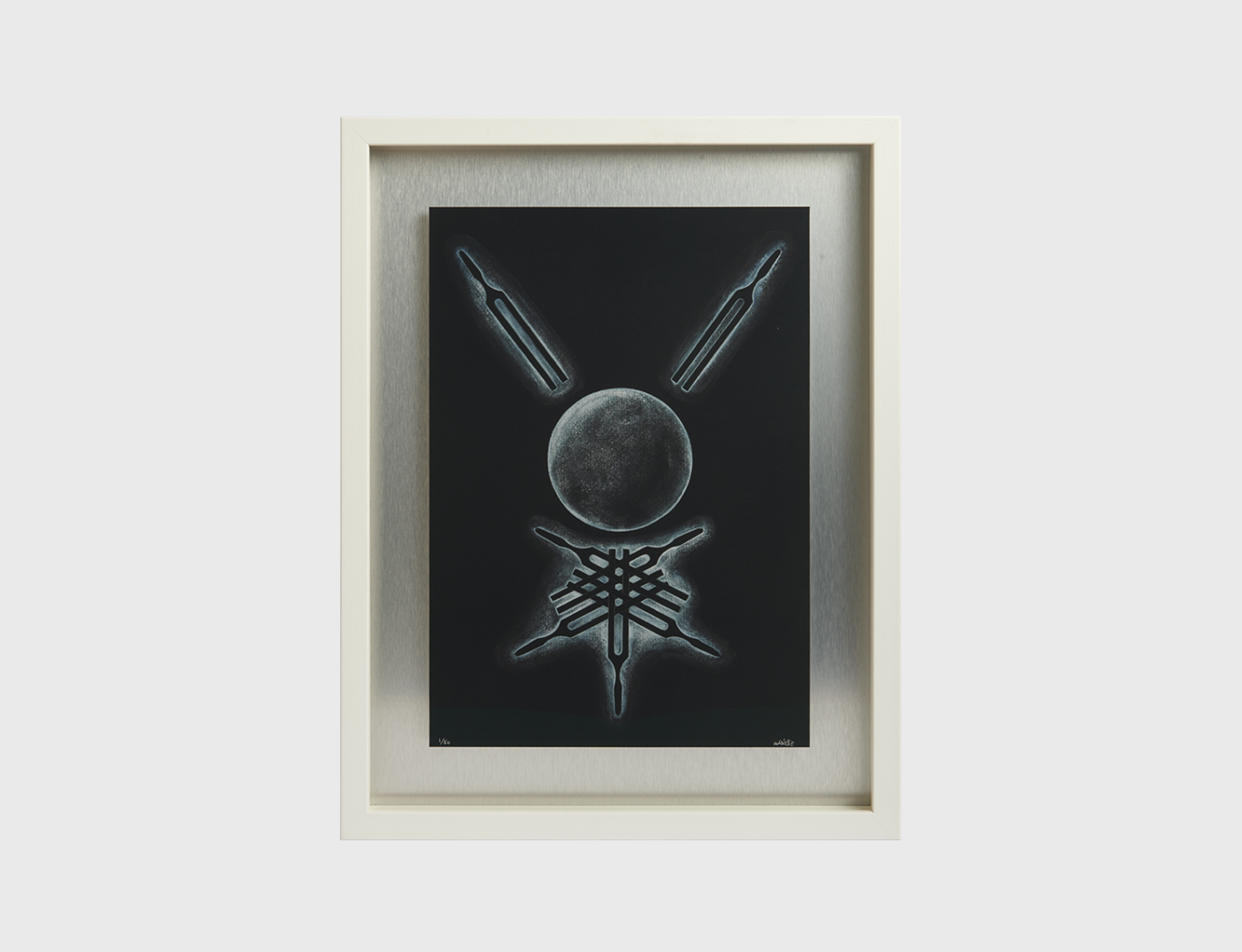
Aura Satz’s Tuning Fork Spell translates the artist's exploration of sound, music, and listening practices into a numinous, mandalic image created for the publication ofQuantum Listening. Tuning Fork Spell is a limited edition C-type print on paper, 297 x 420mm, in a signed edition of only 50.
Find the Others Tote
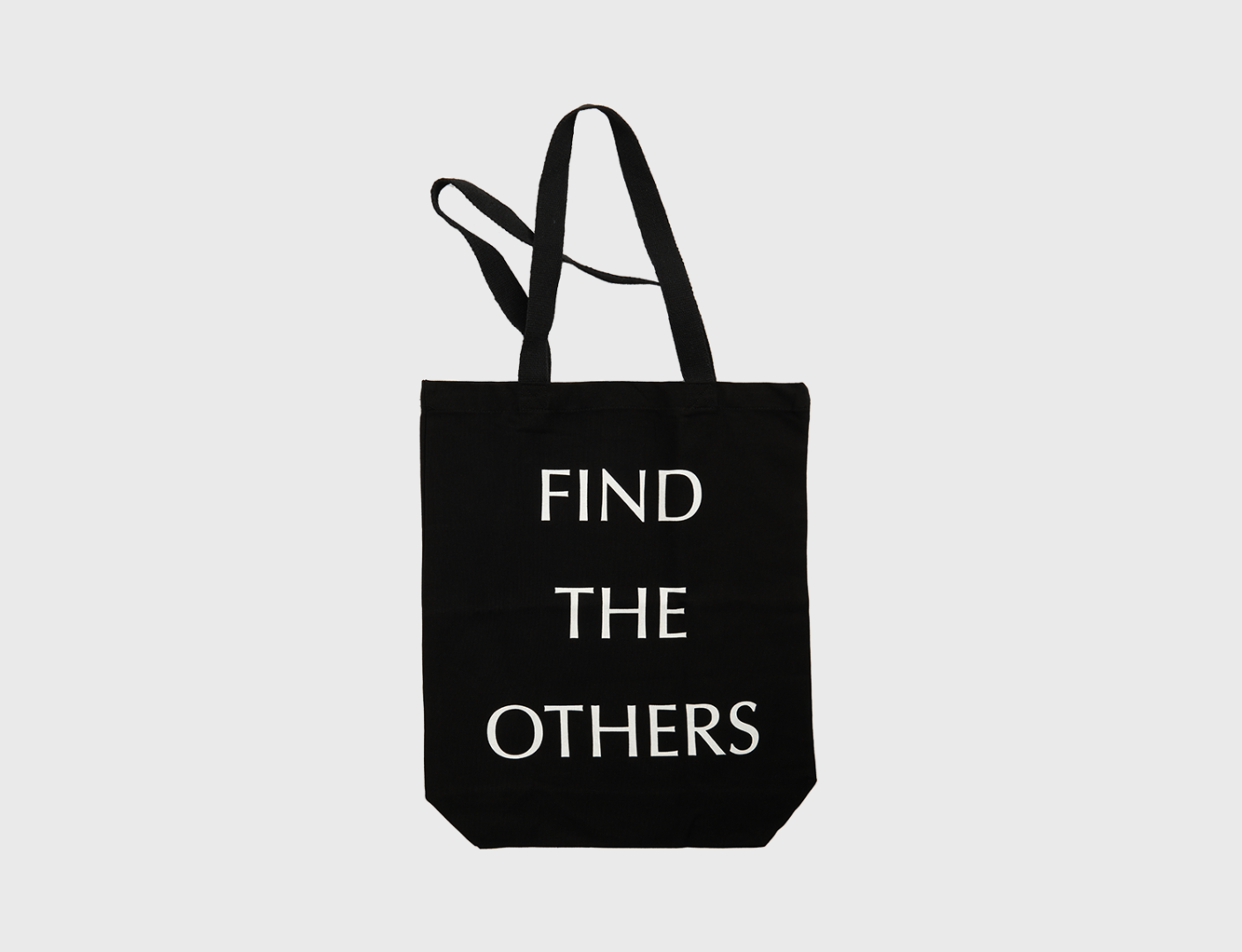 This robust and substantial 250gsm 100% cotton canvas is a bag for life with a 10cm bottom gusset.
This robust and substantial 250gsm 100% cotton canvas is a bag for life with a 10cm bottom gusset.Seeds
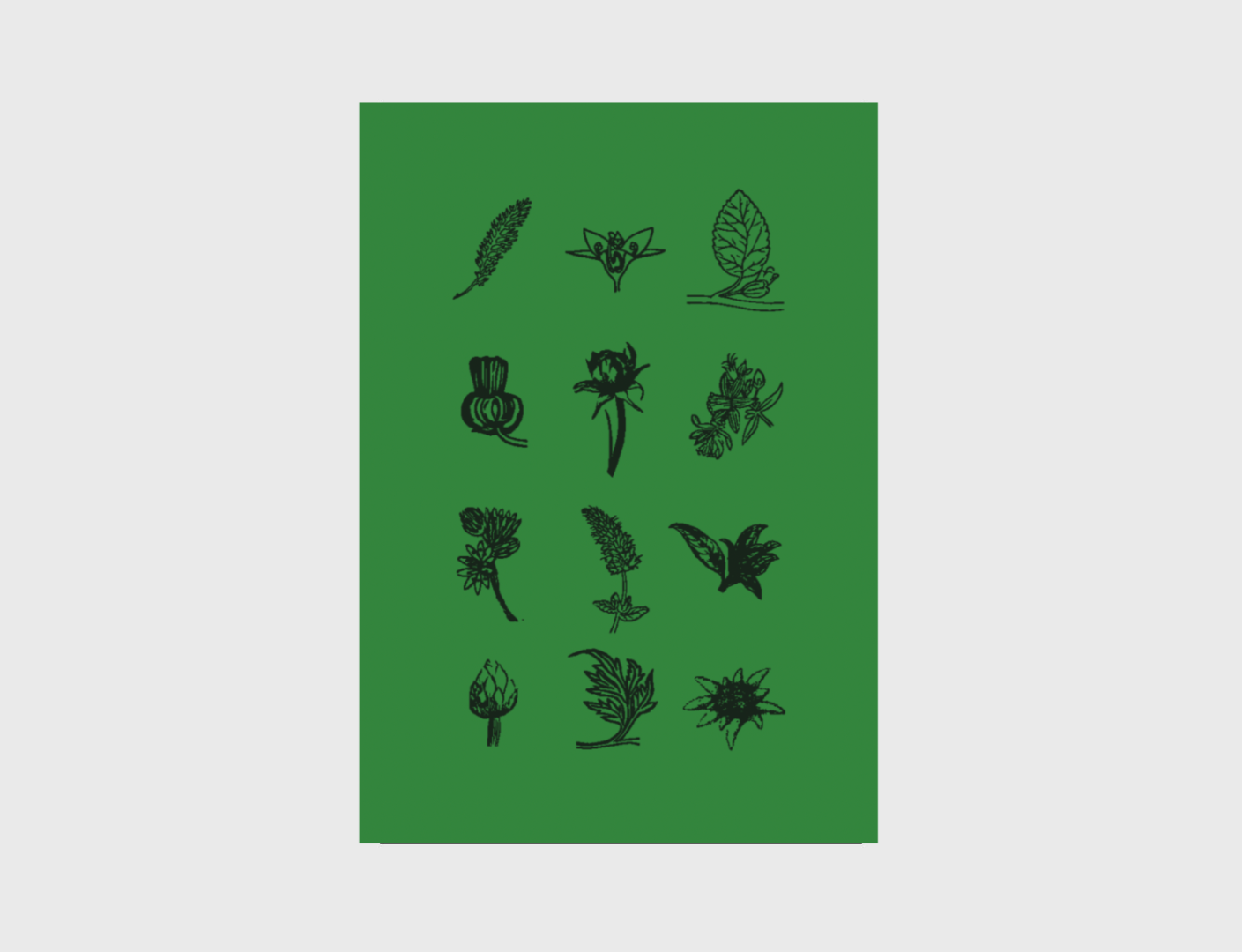
Edited by Sarah Shin, Jay Drinkall and Marleen Boschen
Designed by Virgil Taylor
Seeds was the companion book to Ignota’s project Memory Garden at the Biennale Gherdëina, Italy, 2022. Seeds features a series of plant rituals compiled by Rasheeqa Ahmad (Hedge Herbs), Elsa Cristofolini Hamaz and Paige Emery to accompany each of the four phases of the moon, as well as texts by Lynn Margulis and Etel Adnan.Air Age Blueprint
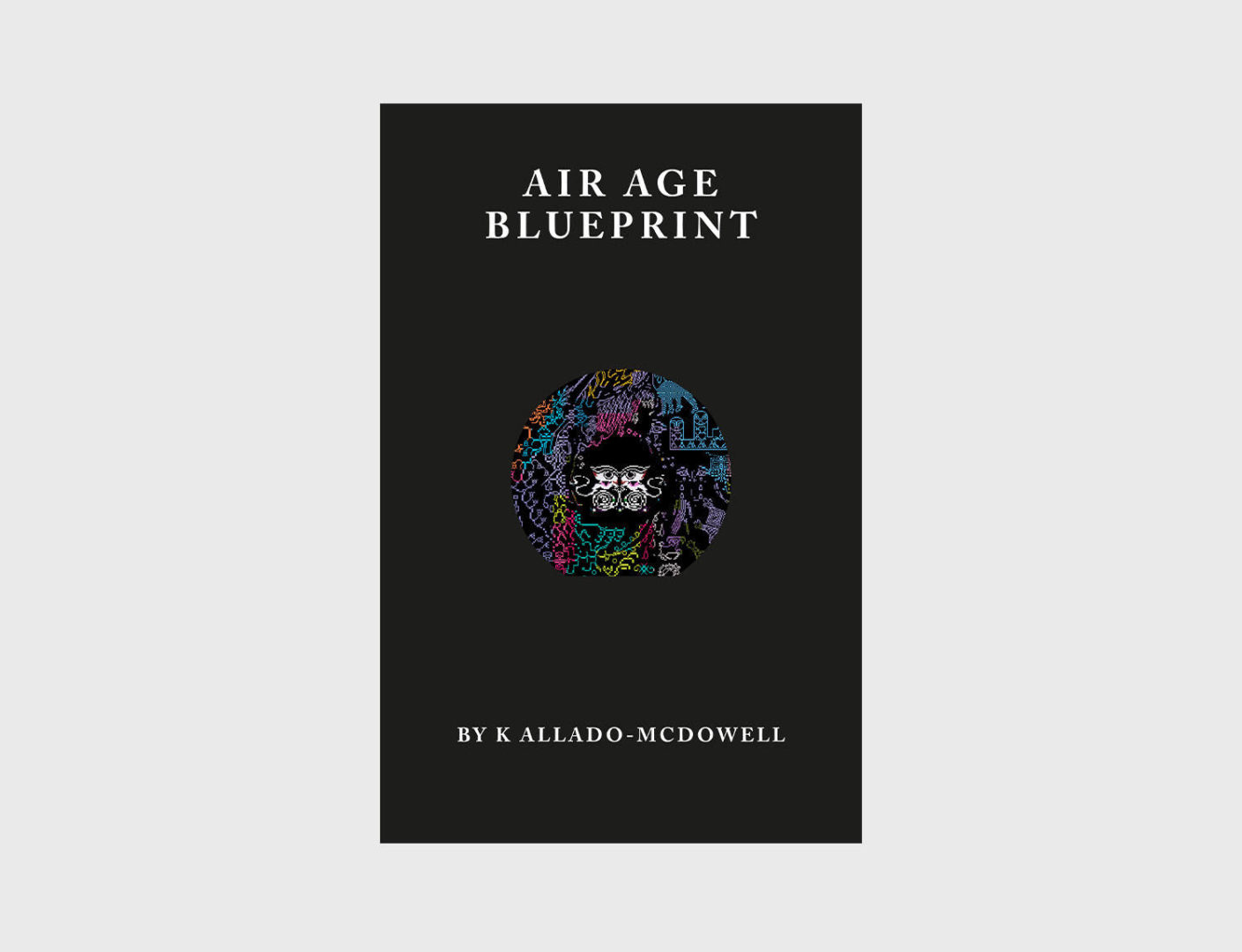
By K Allado-McDowell
A young filmmaker’s life is disrupted by a fated encounter with a Peruvian healer. Called to twin paths of artistic creation and mystic truth-seeking, they set out on a transcontinental journey. In the Pacific Northwest they meet K, a double agent working between art and technology, who invites them to test a secret program called Shaman.AI. This human-machine experiment, rooted in magic, produces a key to rewriting reality – a manifesto describing how entangled human and non-human intelligence will remake our technologies, identities and deepest beliefs. Allado-McDowell (along with their AI writing partner GPT-3) weave fiction, memoir, theory and travelogue into an animist cybernetics – an air age blueprint. Cover art by Somnath Bhatt.Quantum Listening Event: Pauline Oliveros at 90
Hosted by Ignota and Gray Area on 10 August 2022
IONE, Laurie Anderson, Morton Subotnick, Aura Satz, members of the San Francisco Tape Music Center and Center for Contemporary Music and many more celebrate Pauline Oliveros’ life and work. IONE leads a Sonic Meditation which will be followed by reflections and remembrances from friends of Pauline.
In response to the anti-war movements of the 1960s, pioneering musician and composer Pauline Oliveros began to expand the way she made music, experimenting with meditation, movement and activism in her compositions. Fascinated by the role that sound and consciousness play in our daily lives, Oliveros developed a series of Sonic Meditations that would eventually lead to the creation of Deep Listening. In Quantum Listening, Oliveros shows how Deep Listening is the foundation for a radically transformed social matrix: one in which compassion and peace form the basis for our actions in the world.
Flower and Flame: Beltane Ritual Writing workshop with Pam Grossman & Janaka Stucky
Beltane is celebrated on 1 May, around halfway between the spring equinox and summer solstice. Falling opposite Samhain on the wheel of the year, it is one of two annual moments when the veil between worlds is thinnest and spirits may make their presence known.
In this workshop, word witch Pam Grossman and occult poet Janaka Stucky guided rituals and exercises to work with the generative energies of Beltane, supportive of creativity and fertility in all their forms. To invite in a new season of promise, we worked with spring deities, magic gestures and mystical writing techniques to unfurl floral and plant incantations and welcome fiery, divine inspiration.
Image: ‘The Worker’s May-Pole’ by Walter Crane (1894)
Quantum Listening
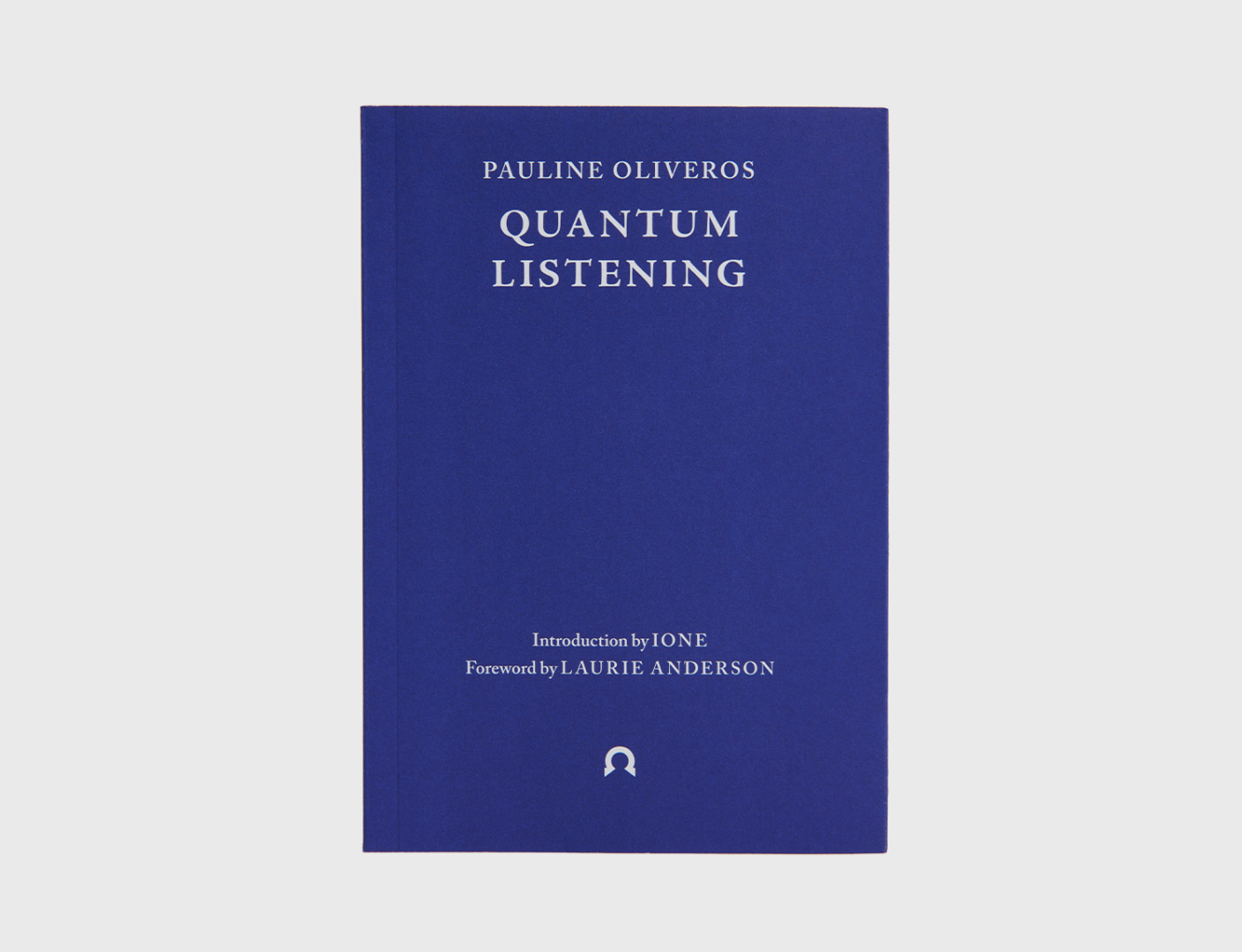
Introduction by IONE
Foreword by Laurie Anderson
Illustrations by Aura Satz
What is the difference between hearing and listening? Does sound have consciousness? Can you imagine listening beyond the edge of your own imagination?
In response to the anti-war movements of the 1960s, pioneering musician and composer Pauline Oliveros began to expand the way she made music, experimenting with meditation, movement and activism in her compositions. Fascinated by the role that sound and consciousness play in our daily lives, Oliveros developed a series of Sonic Meditations that would eventually lead to the creation of Deep Listening – a practice for healing and transformation open to all, rooted in her musicianship.
Quantum Listening is a manifesto for listening as activism. Through simple yet profound exercises, Oliveros shows how Deep Listening is the foundation for a radically transformed social matrix: one in which compassion and peace form the basis for our actions in the world.
This timely edition brings Oliveros’ futuristic vision – blending technology and spirituality – together with a new Foreword and Introduction by Laurie Anderson and IONE.Worlding: Flavie Audi and Aliya Say – Other Worlds
On 17 March 2022, Ignota hosted artist Flavie Audi and art writer and researcher Aliya Say for the final event in Ignota’s Worlding series.
What are other worlds? How is the invisible made visible, felt and sensed? Why has humanity throughout history been drawn to divine otherworldly realms and experiences? And what forms and shapes can the divine take in the contemporary context? In conversation through the form of a visual essay, Flavie Audi and Aliya Say explore tools and approaches that have been used to access, visualise and narrate spirit realms by artists such as Hilma af Klint, and in their own speculative practices looking towards the future and more than human ontologies.
Worlding: Alice Bucknell – Aquaform, Terraform, Aeroform: Worlding the Interplanetary
On 10 March 2022, Ignota hosted Alice Bucknell in the Worlding series.
For millennia, Mars has saturated public imagination with alternative worlds, fantastical ecosystems home to high-tech canal cities, cephalopod dwellers, and communist utopias. But as our image of the Red Planet pivots increasingly towards that of a site for human habitation and resource extraction – with billionaire tech despots at the helm – how can worlding help us envision the many possible futures for Mars, as a host for both human and nonhuman life? What are the legal, political, ecological, and existential frameworks in which these worlds could take shape?
Drawing on speculative fiction strategies, as well as materials science, linguistics, space law, and prophetic applications of AI, artist Alice Bucknell explored a trifecta of possible Martian worlds, from a bio-infrastructure business vending clean water and air back to Earth, to a mystic cult of plant worshippers auguring ancient polyglot ecologies on the Red Planet. Bucknell took us behind the scenes of interplanetary worlding processes, including collaborations with space lawyers, arctic researchers, Scottish drone pilots, NLP specialists, and the Language AI GPT-3.
All proceeds were donated to Africans in Ukraine, an organisation helping African students and other Black individuals in Ukraine secure safe passage out of the country.
Worlding: Amelia Winger-Bearskin – SKY WORLD/CLOUD WORLD
On 20 January 2022, Ignota hosted Amelia Winger-Bearskin in the Worlding series.
Artist Amelia Winger-Bearskin gives an illustrated lecture about her project SKY WORLD/CLOUD WORLD, which examines the sacred nature of our ’cloud’-based communications.
SKY WORLD/CLOUD WORLD tries to understand ‘the cloud’ as both a spiritual place and a vehicle for the ephemeral way in which we choose to communicate with our kin over distance and time. This concept of the cloud in web-based applications has interrupted our notion of a SKY WORLD/CLOUD WORLD which is the grand connective tissue all humans have with one another. We must maintain and honour our SKY WORLD/CLOUD WORLD, the layer of sky which protects our world, maintains our atmosphere, and which has given us the ability to communicate through invisible signals through satellites, tubes and more importantly through dreams and imagination.
Worlding: SJ Anderson – Astrology and the Architecture of Time
On 6 January 2022, Ignota hosted SJ Anderson for the first in the Worlding series.
Astrology is a form of world-making through witnessing and interpreting the measurements of the movements of celestial bodies in the night sky. These interpretations form meaningful narratives, which can assist practitioners in making sense of their lives.
SJ Anderson and Sarah Shin discuss astrology as the architecture of time and a guide to navigating cycles of rebirth and crisis. Collective crisis is often a necessary condition for a new world to be born: how does astrology give meaning to worlds in flux? SJ looks ahead to the astrology of 2022 in the context of various planetary cycles, including the Barbault Planetary Cyclic Index, which predicted a pandemic in 2020, and outer planets such as Neptune.
Worlding: John Tresch – Cosmograms, or How To Do Things with Worlds
On 17 February 2022, Ignota hosted John Tresch in the Worlding series.
All cultures have composed and deployed representations of everything that is – cosmograms – to convey the fundamental entities, relations and processes that make up the universe.
Studying cosmograms as pictures, sculptures, books, rituals, buildings, cities and so on is a way to compare worlds – their components, histories, aesthetics and modes of being – as they are proposed, debated and imposed: as they come together and fall apart.
In this talk, John Tresch draws from a forthcoming book looking at the creation and impact of scientific cosmograms alongside those of religion, myth and art.
Worlding: Reza Negarestani – We do not need to be saved from a world we could have: of worlds and humans
On 3 February, Ignota hosted Reza Negarestani in the Worlding series.
Neither entirely philosophical nor fully science-fictional, this presentation by philosopher Reza Negarestani seeks to define what it means to live in or inhabit a world, all things considered. Its title refers to Christopher Nolan’s latest movie Tenet, in which the protagonists flaunt their time-policing powers of saving us from a different world we could have.
By virtue of living in a world, one has, also, the wherewithal to think about what else could have happened. Eventually, one arrives at an ethical and communist responsibility to travel to the past to postulate and exemplify what sort of worlds and humans we could have, and which the time cops’ narratives deprive us of.
Ignota Hosts: ‘Prophetic Culture’ Book Launch
On 3 June 2021, Ignota welcomes Federico Campagna for a special lecture to celebrate the launch of his book Prophetic Culture: Recreation for Adolescents (Bloomsbury 2021).
In this book launch, he explores ‘Cosmography’, the third and final part of the book – a metaphysical journey across the dimensions making up reality, retold in a style that combines the tones of epic, romance and fiction for young adults.
Throughout history, different civilisations have given rise to many alternative worlds. Each of them was the enactment of a unique story about the structure of reality, the rhythm of time and the range of what it is possible to think and to do in the course of a life. Cosmological stories, however, are fragile things. As soon as they lose their ring of truth and their significance for living, the worlds that they brought into existence disintegrate. New and alien worlds emerge from their ruins. In Prophetic Culture, Campagna explores the twilight of our contemporary notion of reality, and the fading of the cosmological story that belonged to the civilisation of Westernised Modernity. How are we to face the challenge of leaving a fertile cultural legacy to those who will come after the end of our future? How can we help the creation of new worlds, out of the ruins of our own? As part of this event, Federico also presents for the first time the earliest work-in-progress of his next publication, which will be centred on the practice of cultural syncretism.
The Lake Before the Sun Was Born: Abolition and Solidarity
Departing from the exhibition Amaru’s Tongue: Daughter and its underpinning by the Aymara nation’s abolitionist traditions and their inseparability from Black radical traditions, this event featured curator and educator Thiago De Paula Souza in conversation with anarcho-feminist collective Mujeres Creando and writer, DJ and cultural producer Sonia M. Garcia. The conversation expanded on solidarity among Indigenous and Black people and other groups who experience oppression under colonial legacies across the world, and abolition in relation to their respective practices as curators, researchers and activists.
Programmed by Ignota Books and Auto Italia in cooperation with NTS Radio and held 2-4 November 2021. This programme was made possible with the support of Goethe Institut London and Canada House. All profits from tickets were donated to Land In Our Names, a grassroots Black-led collective committed to reparations in Britain by connecting land and climate justice with racial justice.
Ignota Hosts: ‘The Tarot of Leonora Carrington’ with Susan Aberth and Tere Arcq
On 25 May 2021, the tenth anniversary of Leonora Carrington’s (1917–2011) passing into the spirit world, Ignota hosted a special event with Susan Aberth and Tere Arcq celebrating the publication of their new book The Tarot of Leonora Carrington by Fulgur Press.
While researching for Leonora Carrington: Magical Tales (2018, Museum of Modern Art, Mexico City), curator Tere Arcq discovered a Major Arcana tarot deck painted by the artist. In this illustrated talk, Tere Arcq and Susan Aberth speak about the creation of their new book and the centrality of the tarot to Carrington’s overall creative process and life, followed by a conversation with Pam Grossman, author of Waking the Witch: Reflections of Women, Magic, and Power (2019).
The Tarot of Leonora Carrington is the first book dedicated to this important aspect of the artist’s work. It includes a full-size facsimile of her newly discovered Major Arcana; an introduction from her son, Gabriel Weisz Carrington; and a richly illustrated essay from Tere Arcq and Susan Aberth that offers new insights — exploring the significance of tarot imagery within Carrington’s wider work, her many inspirations and mysterious occult sources.
The Major Arcana by Leonora Carrington (introduced by Rachel Pollack) and The Tarot of Leonora Carrington by Susan Aberth and Tere Arcq (introduced by Gabriel Weisz Carrington) are published by Fulgur Press.
Ignota Hosts: Tai Shani, ‘The Neon Hieroglyph’
‘The building of a house we will never live in – a house for our ghosts where the gothic and the hallucinatory collide.’
Tai Shani presents The Neon Hieroglyph in a special event featuring readings, a musical performance by composer Maxwell Sterling and a conversation between Shani and anthropologist Amy Hale exploring the feminised history of ergot, metaphysical and material realities and psychedelic mythos. The event is hosted by Ignota in partnership with Manchester International Festival (MIF).
Tai Shani creates worlds that are at once dark yet luminous, both feminist and fantastical – and in The Neon Hieroglyph, she constructs a story-world that draws inspiration from her research into ergot, a fungus that grows on rye and other grains from which LSD is derived, as a psychedelic catalyst. Ergot played an important part in the North West’s agricultural, social and medical history: linked to local crops and breads, outbreaks of ergot poisoning caused mass hallucinations, with the last reported UK incident during the late 1920s in Manchester. Composed of nine short episodes and featuring a mesmeric soundtrack by Manchester-born composer-musician Maxwell Sterling, The Neon Hieroglyph uses these experiences to spark new visions and alternative realities: a dreamlike CGI journey that takes us from the cellular to the galactic, from the forests to the subterranean, from the real to the almost unimaginable.
CCA Glasgow and Ignota Hosts: ‘Soot Breath / Corpus Infinitum’
On 30 November 2021, CCA Glasgow and Ignota hosted Arjuna Neuman and Denise Ferreira da Silva for a screening of their new film Soot Breath / Corpus Infinitum, and a discussion with James Goodwin. Soot Breath / Corpus Infinitum was accompanied by a performance of Treble Heaven by Nisha Ramayya and MJ Harding.
Soot Breath / Corpus Infinitum by artist Arjuna Neuman and philosopher Denise Ferreira da Silva continues their interest in reimagining knowledge and existence without the limits of European and Colonial constructions of the human. To speculate how to exist otherwise as humans in the world, they traverse from quantum mechanics to polyrhythms, from Tarkovsky to Hype Williams, from heat to Anaximander.
Following the element of earth through its many facets, groundings, afterlifes and forms, Soot Breath scales between the historical/cultural, the organic, the quantum and the cosmic. Gathering a variety of examples where subjectivity is unbound from the mind alone, but rebound to the world, Soot Breath examines how structures of power break material ties to other humans, more-than-humans and deeper implicated bonds with our planet and beyond.
Soot Breath / Corpus Infinitum is a film dedicated to tenderness. It reproduces a radical sensibility we learned from listening to the blues, from listening to skin, to heat, and from listening to echoes, listening itself. The film was developed with the Centre for Contemporary Art, Glasgow as a commission for the Glasgow International 2021. A newspaper was produced as part of the show with writing contributed by Nisha Ramayya.
Treble Heaven is an encounter between poetry and music by poet Nisha Ramayya and sonic dramaturg MJ Harding, exploring three ways of singing to heaven and three different types of longing. Treble Heaven is a ritual treating the damage of European and colonial cosmology and an experiment in collective gathering and releasing.
At the edge of a black hole, information is released.
Slice and glissando; drone and twinkle;
subjectivity dispersing and constellating in the forest.
The Lake Before the Sun Was Born: Herbalism and Land Ties
Writer and artist Edna Bonhomme chaired a conversation that brought together medical herbalists Sage LaPena and Rasheeqa Ahmad, with a guided ancestral meditation by multidisciplinary artist Tabita Rezaire. The talk focused on land ties, herbalism, and relations to land through ritual and lineage in the context of Indigeneity, as well as diasporic experiences shaped by broader dynamics of displacement and extraction, and ancestry, memory and repair.
Programmed by Ignota Books and Auto Italia in cooperation with NTS Radio and held 2-4 November 2021. This programme was made possible with the support of Goethe Institut London and Canada House. All profits from tickets were donated to Land In Our Names, a grassroots Black-led collective committed to reparations in Britain by connecting land and climate justice with racial justice.
Ignota Books of the Year 2021: Part II

Ignota friends and family choose their books of the year! <3 As we near the end of another challenging year, we offer this list of books and pamphlets chosen by Ignota’s friends and family, which have accompanied their journeys. Part I here.
As this list is also intended in support of the book trade, especially fellow indies, we’ve added links to Bookshop.org (which unites independent booksellers to provide an alternative to Am*zon) or directly to publishers’ websites.
Susan Aberth
The Invisible Painting: My Memoir of Leonora Carrington by Gabriel Weisz Carrington
The Ghost-Feeler: Stories of Terror and the Supernatural by Edith Wharton
Succubations & Incubations: Selected Letters of Antonin Artaud (1945-1947) by Cole Heinowitz
Jaya Klara Brekke
Anam Cara by John O’Donohue (1996, Penguin): A stunning and soothing book that keeps reminding me of the wealth that springs from the quiet. I have been re-reading it this year in an entirely new light as I have been thinking and writing and working on what a ‘digital dark’ might entail. The book speaks of the encounter with nature, with the darkness before dawn and of the importance of interiority. I recently joined a major decentralised privacy project as head of strategy. And Anam Cara, apart from calming my racing mind, is also providing a trickle of inspiration for thinking about the growing importance of privacy as almost every action and interaction is becoming digitally mediated. It is giving me some perspectives on how important it is to ensure the possibility to remain unformed, also in the digital, so that we can remain free to not make our minds up, to not have a ‘take’, to not have to maintain our exterior, and instead simply be in what I somehow imagine as the soup of emergence.
Close to the Machine,Technophilia and its Discontents by Ellen Ullman (1997/2013, Pushkin Press): What does it mean to be ‘close to the machine’? In this brief but essential book, Ullman gives us snippets and stories of life as a female software engineer just before Silicon Valley became Silicon Valley. What is incredible about reading this little book from 1997 today is that the seeds of all the big themes of contemporary digital life can be found in each of these entertaining stories. The beginnings of surveillance tech, the love for the ‘system’ over and above meatspace end-users, the cypherpunks and early dreams of anonymous digital currencies. For those of us with a foot in the world of cryptocurrencies, it is eerily familiar to read the vocabulary of one of her lovers, a young Brian, talking about arbitraging the US legal code to create an anonymous online banking system: ‘His obsession about the privacy of wealth is like my generation’s obsession about the privacy of identity, or sexuality, or belief, or the self’, Ullman writes. The book is so incredibly refreshing for her personal perspectives and off-hand commentary as she compares cypherpunks to Yippies: ‘Boys being bad, what else is new.’ As Jaron Lanier writes in the introduction to this edition: ‘...a plain account of living with computation is hard to come by.’ As opposed to science fiction, this is a lived account of ‘what it felt like when humans were first engulfed by artificial computation’, as entertaining, incredible and insightful as only ordinary life can be.
New Money: How Payment Became Social Media by Lana Swartz (2020): While walking to the east London Turkish cafe to finish writing these three snippets, I found myself squinting blurry eyed while trying to see the people across the road. I realised I had spent most of my waking hours this week glaring at my phone, then laptop, then phone again, needing these devices to satisfy nearly every task or desire, which has now affected my eyesight. This excellent book by Lana Swartz discusses money as a medium. And with that seemingly simple intellectual twist, she opens up a whole new way to consider how the particular forms that money takes have major societal effects in and of themselves. From the building of nations to the stratification and control of social classes. And, I reflected, also on our bodies, my body. This has been a go-to book for me this year for thinking through cryptocurrencies, cashlessness and central bank digital currencies, and more.
I think a new type of awareness is increasingly required in our day and age, and it is the awareness of the mediums through which things are achieved, their historical specificity, and their ‘externalities’. All too often when considering digital technologies, the focus is on what can be achieved. Instead, the focus should be on how that particular way of achieving things comes with costs: to our spirit, minds and bodies, societal relationships and, of course, environments. These three books have provided me with a ground and compass for such reflections.
Jen Calleja
Blind Spot: Exploring and Educating on Blindness by Maud Rowell is part of the 404 Inklings series of pocket-size works of non-fiction, and is a fascinating essay that sets out to correct the erasure of notable blind people in history and reveal the bias awarded the sense of sight in society and culture, including in the appreciation of art. Rowell argues in the book that accessibility should not be an afterthought in any part of life, the sciences or the arts, but rather something integral that can make it possible for blind people to live independently, work, share in experiences with friends and family, bring insight across all fields of knowledge, experience art, and flourish – all of which are fundamental for one’s sense of humanity and dignity. études by the late Austrian poet Friederike Mayröcker translated by Donna Stonecipher and published by Seagull Books a year before Mayröcker’s death is a mesmerising and mystical collection that gets closer than close to late-life consciousness through diary-entry-like poems piling up quotidian detail and idiosyncratic, almost absurdly humourous repetition. It is a whole world and in a league of its own, a feat of poetry and of translation.
Anne Duffau
This year I have been craving for more comic books to daydream and evade. I have discovered: Map to the Sun by Sloane Leong (2021), teenagers, basketball, hopes and revenge - Leong is a self taught talented writer and illustrator who creates immersive sceneries with acidic and pastels colours that will make you stick to the pages to the end.
I keep on returning to Paper Girls by Brian K. Vaughan and illustrated by Cliff Chiang, published by American company Image Comics (2015-19). The colourist is Matt Wilson, the letterer and designer is Jared K. Fletcher, and the colour flatter is Dee Cunniffe. It is a sci fi adventure set in the late 80s following four paper girls on their bikes; they encounter other teenagers who are time travellers and make a life changing discovery.
The second comic book that I cannot stop returning to is Motor Crush, another sci fi action by Authors/Illustrators: Brenden Fletcher, Babs Tarr, Cameron Stewart (2017) – Domino Swift is the main character and she is a talented motorcycle racer, she competes with gangs at night in violent bike wars.
I am impatient to read Nnedi Okorafor’s new novel: Noor which will be out on the 16th of Nov. 2021 following the character Anwuli Okwudili who calls herself: AO (Augmented Organism) and is using body augmentations to compensate for her physical and mental disabilities over the years. Set in a near-future Nigeria, she’s partially robotic and can defend herself.
Federico Campagna
You know you’re reading a great book, when halfway through it you begin to feel a surge of irrational resentment towards the author. Oh, if only I had written it! That’s precisely how I felt while reading I Miei Stupidi Intenti by Bernardo Zannoni, a 25-years old author at his first novel. It is the story of a weasel who is sold into slavery by his mother to a food-lending fox, in exchange for one and a half chicken. In winter, when starvation bites, there is no room for sentimentalisms – especially among the animals of the forest. And all the protagonists of the novel are animals; all, except two. The old fox who has taken the weasel as his own slave does not see himself as an animal. One day, years earlier, he found something in the forest that irrevocably changed his idea of himself. And the young weasel might be the only other creature in the forest who could take this gift and this burden off the fox…
Half-way between an enchanted fable, a brutal remake of a Pixar film, and a treaty on theology and violence, I Miei Stupidi Intenti deserves to be available to readers in all languages – yet, at the moment it is available only in Italian. Anglophone publishers don’t let it pass you by!
My second choice is another great book, which is as-yet unavailable in English: Theophania, by Walter Otto, originally published in German in 1956. Today, in the English-speaking world, Walter Otto is known mainly as the teacher of Karoly Kerenyi and as an influence on Martin Heidegger. But his work deserves to be rediscovered and appreciated also in its own right. This short book, written towards the end of his life, beautifully summarises the main lines of enquiry that Otto pursued throughout his life as a scholar. Theophania talks about the existential experience of reality, as disclosed by the mythological and epic texts of ancient Greece. These are not only literary works, but they are the faithful reflection of a particular way of looking at reality, which makes it possible to become aware of the ineffable, divine and archetypal forces that swarm within it. Guided by Otto’s clear and lyrical prose, the reader will learn to read the Greek classics of art and literature with entirely new eyes, and to take seriously the image of reality which they convey. This is the best piece of Pagan propaganda since the time of Julian the Apostate.
My third choice is a classic of late-ancient Mediterranean literature: The Alexander Romance. A mix of anecdotes, myths, letters, historical accounts and folk tales collected over the centuries, it hardly counts as a “book”. Rather, it is a broad narrative frame where the life and adventures of Alexander the Great are allowed to proliferate well beyond the limits imposed by history. In the Romance, Alexander’s story begins in Egypt, as the secret son of a Pharaoh-magician, and it proceeds beyond the edge of the map: in the Land of Wonders, among the giant desert-ants and the trees that vanish with daylight, in the valleys inhabited by monsters and prodigies, all the way to the complete darkness of the Land of the Blessed, which hides the secret location of the Spring of Eternal Youth. Best enjoyed together with its Arabic and Persian spin-offs (the popular Iskandarnamah and the section on Alexander in Ferdowshi’s masterful Shahnameh), the Alexander Romance is a great ancient classic that deserves to be rediscovered.
Hannah Gregory
Jackie Wang’s The Sunflower Cast a Spell to Save Us from the Void has been assisting me in dreaming and writing deep; in not fearing the intensity of dreams, which is to say, the intensity of life. This poetry of dream translation – splinters of the unconscious brought to language – shows how an attention to our movements in dream worlds might guide us to exist differently in relation to others when wide awake.
IONE
The Heart of the World: Travels in Tibet by Ian Baker
Future of the Ancient World: Essays on the History of Consciousness by Jeremy Naydler
Dawning Moon of the Mind by Susan Brin Morrow
All We Saw by Anne Michaels
The Narrow Road to the Deep North: and Other Travel Sketches by Basho
The Dreams by Naguib Mahfouz
Comforting beside my bed – drawn upon through their bindings, receiving through time/space – they are opening in me throughout – they are journeys that I continue through night and day dream time – comforting the traveller in me.
Pam Grossman
A Helen Adam Reader, edited by Kristin Prevallet
The marvellous Helen Adam is difficult to sum up, but in short, she was a witchy Scottish poet, playwright, and collagist who moved to the states with her sister Pat, and became part of the magic circle of Robert Duncan, Jess, Jack Spicer, and other kindred American occulture makers. Many of her supernaturally-infused poems were written and performed in the ballad tradition, and her reverberating readings of her own work were, by all accounts, chilling and exhilarating. Duncan wrote of her work, "At the heart of these poems there is a compulsive beat. It is the pulse the narrative poet contrives in her art to subject the listening intelligence to the story’s spell." Her pieces are stuffed with witches, elves, ghosts, and beasts. Tarot and celestial images abound, as do gothic landscapes and chthonic gardens. From her Anne Boleyn poem, "A Swordsman From France":
For a weird that is mine,
Six Fingers! Six Fingers!
A manifest sign!
Cast off by my Lord,
With the jewels of lost magic
I’ll conjure a sword...
Another World: The Transcendental Painting Group, by Michael Duncan et al.
I’ve been a longtime fan of the visionary painter Agnes Pelton’s, so it’s been a joy witnessing the world’s recent rediscovery of her work, thanks to a traveling retrospective that kicked off at the Phoenix Art Museum in 2019. Though she only got her due posthumously, she didn’t work in isolation, as she was part of the Transcendental Painting Group which began in the 1930s. Deeply influenced by Theosophy and the mystical energy of the southwest, the TPG’s aim was to express esoteric ideas through abstract forms - and the results are nothing short of breathtaking. Another World is an extensive exhibition celebrating the TPG’s artists and their cross-pollinations, and it is currently making its way to various museums. Lucky for us, the catalog is available already, so those who would like to see this splendid work are now unbound from temporal and spatial limitations! Soon folks everywhere will be swooning over the chromatic, cosmic art of Emil Bisttram, Florence Miller Pierce, and Pelton’s other transcendent contemporaries. About time.
Darkly: Black History and America’s Gothic Soul by Leila Taylor
Every now and again, one reads something that is so insightful and impactful that one’s perspective is forever changed. Darkly is one of those books for me. Taylor writes from the perspective of a Black American woman who’s had a life-long love affair with goth culture. At first she muses on the perceived incongruities that exist in holding this allegedly dual identity - after all, isn’t there some irony in her adoration for an aesthetic that is arguably very British and very white? But as the book unfolds and constellates between the work of such tenebrously tempered artists as Siouxsie and the Banshees, Edgar Allan Poe, Toni Morrison, and Jordan Peele, she makes the case that shadowy narratives can be a balm for deep melancholy and intergenerational trauma - and that Black people are perhaps the gothest of all. It’s a brilliant examination of culture and identity, and a sharp, lyrical reminder that America truly is a haunted house.
Shoukei Matsumoto
If I were to pick a favourite English book this year, I would choose The Good Ancestor: How to Think Long Term in a Short-Term World by Roman Krznaric.
I was deeply inspired by the question of ‘how can we become good ancestors’ in this book, which I translated into Japanese and published this year in Japan.
This book encourages us to cultivate ‘acorn brain’, or long-term thinking. which is more important in this age of extreme short-termism. As a contemporary Buddhist from Japan, I would be happy if you change the way of life so that you can become better ancestors for the future generations.
Jay Springett
My recommendations for 2021 are the books that have left me thinking about them well after closing their back covers.
The Two Antichrists by Peter Grey: A deep dive into the partnership between Jack Parsons and L. Ron Hubbard. The book is a fascinating account of their relationship and work. It includes some thought provoking and detailed original research and commentary. Concerned primarily with the lead up to (and aftermath of) the pairs’ Babalon Working of 1946. The Two Antichrists is an important work for those wrestling with the legacies of Crowley, Parsons and the OTO. It is clear that if we are to claim influence from these figures we must also stay with the trouble and reckon with the legacy of L Ron Hubbard. The two figures (antichrists) in twentieth-century culture are bound to one another in ways that are difficult to tease apart. This is a book about space magick, psychosis, and cults.
Terminal Boredom: Stories by Izumi Suzuki: I was extremely happy to read the news that Verso was bringing the collected writings of Izumi Suzuki to the English language for the first time and pre-ordered it immediately. Until this year I have only ever encountered her work through the eyes of others: either an actress through the lens, or via anecdotes and footnotes of her influence on other (mostly male) artists and writers working in late 70’s-early 80’s Japan. Terminal Boredom’s stories articulate the contemporary anxieties of the culture they were embedded in. Mass media, gender discrimination, drugs, violence, and the growing influence of technology. It is not unfair at all to say this collection is an important proto-cyberpunk book and a must-read for fans of the genre.
Ledger: Poems by Jane Hirshfield: This slow, unfolding collection of poems was a gift from a friend that arrived in the early lockdown dark of this year. A gift that was very much welcomed and enjoyed. Hirshfield’s poems are light, gestural – many have a quality of a bird riding the wind. Each poem seems to ask something of the reader: ’Here’s an idea, and here’s another, look at this, notice this, how does it make you feel?’. The poems in this collection concern themselves with a variety of topics including climate change, social justice, the plight of refugees etc. But, more importantly than the subjects of the poems themselves, the book’s central thread asks us to reconsider our relationship to the wild, the world, to other people, and how we think about ourselves.
Leila Sadeghee
This year I chose to lead a group on a pilgrimage in the way of Mary Magdalene, and in preparation I finally read the gnostic text ‘Thunder, Perfect Mind’, and was summarily blown away. I had been looking to purchase Hal Taussig’s text and writings on it for years, but was put off by the price tag (it’s out of print). I dug a little deeper and found a whole mess of translations on the internet.
I love the weirdness of the phrasing of most transmissional texts, and this one is ideal for someone looking to orient to non-dual reality, or who loves the Divine. I love the amoral choice-less imperatives of this God-poem. I love how it makes nothing wrong in a sequence of paradoxes that embrace manifestations of spiritual immaturity:
And do not turn away greatnesses in some parts from the smallnesses,
for the smallnesses are known from the greatnesses.
Mark von Schlegell
Reading goes well of late. But it’s not so easy to find surprising, well-edited, portable editions of classic literature any more. Happily I managed to pick up Dr. Jenny DiPlacidi’s Mathilda & Other Stories by Mary Shelley (Wordsworth) at Treadwell’s in London, just before travel became impossible. Blacklisted and forced to work anonymously, the author of Frankenstein nevertheless continued to write weird fiction all her days. The work is surprisingly unknown. In today’s context, Shelley’s fearless, post-Gothic, death-metal tales of possible female survival (sprinkled with science fiction) shock with relevance and clarity.
As travel resumed, I was lucky to catch Georgia Sagri’s tour for Stage of Recovery (Divided Publishing) when it passed through the Rheinland. I like how the book comes without editorial apparatus or explanation. The texts speak for themselves, raw shards of a communal, political history the writer/artist/activist has lived and critically engaged in the moment. Immediate, mournful, full of love and humor, this scrappy volume occupies the future with the just-past it can’t escape.
If I had been able to read the translation of Un-Su Kim’s first novel The Cabinet (Angry Robot) before encountering the author’s first Englished meta-noir The Plotters (HarperCollins), I wouldn't have been so surprised by the latter's later pages. I've only started this strange book, and it's even more original …
Something Other: Mary Paterson, Diana Damian Martin and Maddy Costa
‘It was generally believed,’ writes Eliot Weinberger in Angels & Saints (New Directions, 2020), ‘that angels have neither biological bodies – although they do emit a heavenly fragrance – nor are they entirely incorporeal.’ It is no surprise that this book about impossible beliefs appealed to me at a time when the world was combatting an invisible and ever-mutable threat. The philosopher C. Thi Nguyen says that although the scientific method arose from the principle that people can test ideas themselves, it has created a body of knowledge that is impossible for any individual to comprehend; instead, we must trust other people’s scholarship. In other words, we no longer live in a world structured by spirituality but we do live lives filled with belief. Weinberger’s book is a poetic compendium of centuries of thought, from the biblical to the mythical, beautifully illustrated with illuminated manuscripts (with an explanation by Mary Wellesley). It is a small flavour (a heavenly scent) of the human endeavour to make sense of the mysteries of existence.
‘I am writing also to the becoming-being that you are, the one who will face a world in ruin and undoubtedly wonder over my place in all this destruction’, writes Julietta Singh in The Breaks (Daunt Books 2021), a love letter on survival in the interstices of multiple futures and pasts. This is not only a book about what binds us together, and what climates our bodies and worlds might carry into an uncertain future, but also how tending to breaks might offer us fierce models for queer love. Singh moves with fiery beauty in the languages of relation that we carry with, in the openings that care offers, and in the knowledges that move through care and love.
Saidiya Hartman’s Wayward Lives, Beautiful Experiments (Serpent’s Tail, 2019) slips between the sheets of the archive to hear the lives of black womxn at the beginning of the 20th century in new ways. Refusing the contemporary and historical insistence on deprivation in both the economic and moral sense, Hartman sees instead a series of energetic attempts at different ways of living, communal, feminist and queer, predating later sexual and political liberations by several decades. What she writes about theatre – ‘a domain of collective bodies, kinaesthetic experience and gestural language’ – could be a description of the book as a whole, which brings the rhythms of jazz to its movements, felt in a resistance of linearity and objectivity. It is a powerful vision of how past and future are deeply entangled, and how visioning emerges from different capacities to listen, feel and form.
The White Review
I read a lot of sci-fi this year, and one book in particular really captured my imagination: The Hair-Carpet Weavers, by Andreas Eschbach. Written in 1995, and translated from German by Doryl Jensen, the novel begins in a universe where craftsmen dedicate their lives to weaving carpets from their wives’ hair. Their intricate designs, laboured over for thousands of hours, are sold upon completion to representatives of a mysterious and revered emperor, the proceeds of the sale used to fund the next generation of hair-carpet weavers. Where the carpets end up remains a mystery, until it's revealed that the emperor is dead, and the myriad carpets are being used as part of an astonishingly grim vendetta. The book takes on grand subjects: the fall of empire, the fate of the individual worker in the face of a gargantuan political system, the deification of ideologues, and the profound difficulty of breaking free from indoctrination. But the way in which Eschbach depicts the everyday lives and craftsmanship of the weavers themselves, the beauty, skill and futility of their labour – and the extent to which workers and their families give over their lives, hair and all, to a failed and inhumane political project – is now permanently etched onto my imagination. – Rosanna Mclaughlin
I loved reading Gina Apostol’s ultra-elaborate novel Insurrecto (2018), which is luxuriant in its prose, fully po-mo in form, and tackles a true crime of Filipino history: the 1901 Balangiga massacre, when American troops slaughtered 30,000 people on Samar Island. The novel entwines the life of Magsalin, a translator, mystery writer and cinephile from Manilla, who becomes the reluctant guide, confidante and ghostwriter of a pampered American filmmaker, Chiara Brasi, who has arrived in the region to make a film about the Balangiga massacre plus her auteur father’s attempt to shoot his own war film the Philippines in the 1970s. As the novel evolves, it spirals inwards, slipping between points in time, as Magsalin and Chiara wrestle for the authorship of this little-documented history. I love how dizzy I got. Insurrecto is itself a mystery, a mise en abyme, a dazzling puzzle, full of lush clues, doppelgangers, alternative histories, voids. – Izabella Scott
Moustache by S. Hareesh, translated from Malayalam by Jayasree Kalathil in 2020, was an immense pleasure to read. Its protagonist, Vavachan, is a superhuman being whose life becomes something of an oral history, taking on mythical proportions. The novel is set in Kuttanad, Kerala, and deeply embedded in the region’s history. It springs to life the stunning lushness of Kerala, mimics the devices of local storytelling traditions, and more politically, takes on the violent particularities of caste. Vavachan has grown a large moustache, which makes him look powerful, too powerful, upsetting the sensibilities of upper-caste village folk, who begin to spin tales. Kalathil had an immense task before her, the Malayalam text is written in dialect, and often in something close to meter. But there are striking interludes as the translation shows how complex Malayalam is, how fine and hyper-specific its imagery: a character’s presence is described to be like the ‘shadow of a coconut tree in the slanting evening light’ or, like ‘a strand of scutch grass nibbled by a calf.’ Moustache is an immersive, transporting read, and a keen exploration of a remarkable language. – Skye Arundhati Thomas
Ignota Books of the Year 2021: Part I
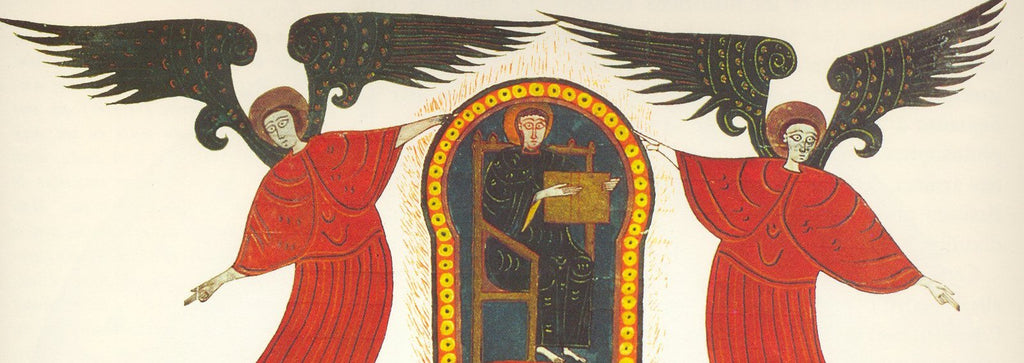
Ignota friends and family choose their books of the year! <3 As we near the end of a challenging year, we offer this list of books and pamphlets chosen by Ignota’s friends and family, which have accompanied their journeys. Part II here.
As this list is also intended in support of the book trade, especially fellow indies, we’ve added links to Bookshop.org (which unites independent booksellers to provide an alternative to Am*zon) or directly to publishers’ websites.
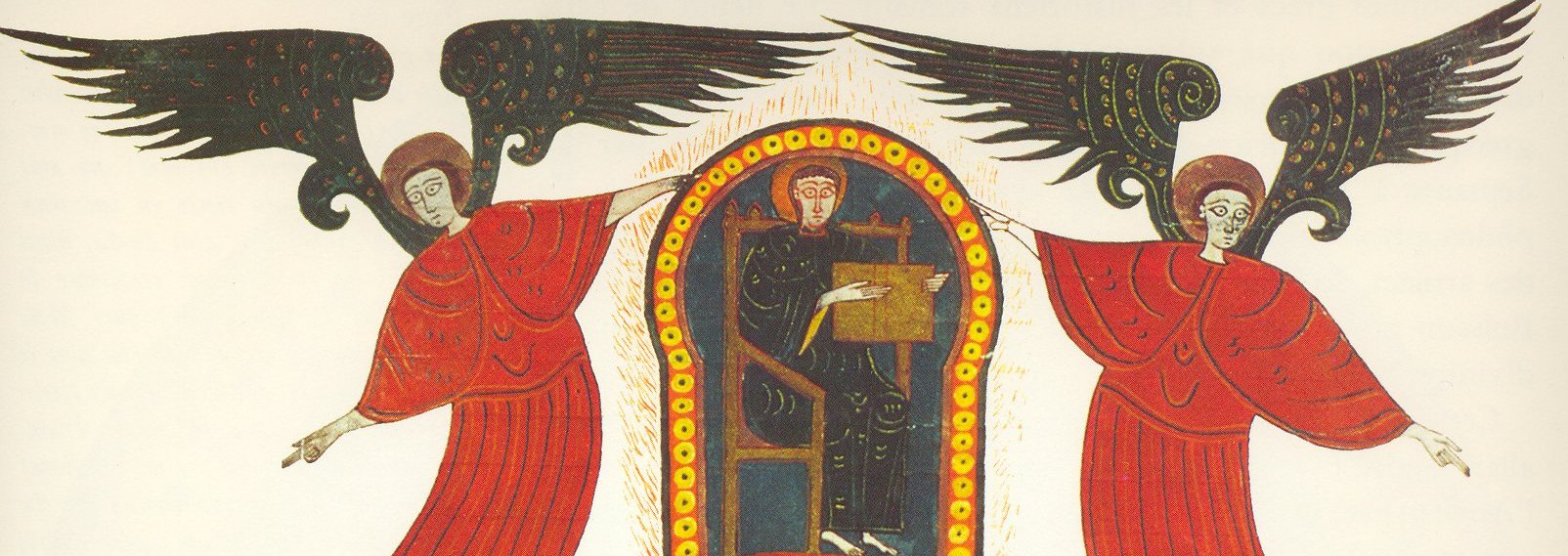
Rachael Allen
Jason Allen-Paisant’s Thinking With Trees is a totally transporting collection of poems. Each poem activates ecological thinking the way a leaf or a branch unfurls or grows upward, with patience and clarity. Just as a plant is shaped by its context or surroundings, so too is the thinking here. The clarified and knotty grace of these poems moves through lived conditions of racism, offering a redemptive exploration of the healing power of landscape, with a necessary suspicion towards the the histories of the pastoral and bucolic. Vanessa Onwuemezi’s Dark Neighbourhood is a godsend of a book. I search for a contemporary strangeness, despair, or ennui in books that feels as lived, and as colourful and as wayward as real life now. Onwuemezi’s writing is totally membranous, webbed and felt; the stories in this book are wild maps of thinking and feeling, a new way of replicating interiority through fiction.
SJ Anderson
In 2021, the world is simultaneously a place of wonderment – evidenced by the increasing potentials of our ever-expanding digital communications technologies – and Kafkaesque peculiarities of control brought about by those same advancements. For the former, Haruki Murakami’s First Person Singular conjures the limitless potentials of the imagination. An obsessively observant narrator introduces many oddities: a monkey who speaks eloquently on Bruckner’s symphonies, a circle without a circumference and with many centers. Murakami’s stretching of the real is a perfect match for a globe – ours – on the cusp of fuller entry into an ever-expanding digital metaverse. In Naked Lunch, originally published in 1959, William Burroughs appears to be writing about our current medicalised turn. His often obscene prose includes a character, Dr. Benway, who gets kicks from experimenting on his patients in the most sadistic fashion, akin to something out of MK-Ultra. Burroughs recites dense and dry medical terminology when describing what is, functionally, torture by clinician. The novel serves as a warning: the mystery of the human spirit, our malleable language, must be kept alive and vibrant even at a time when technology and the edicts of scientism hold dominance.
Barby Asante
This One Sky Day by Leone Ross: In 2019 I was lucky to join a writing retreat with Inscribe/ Peepal Tree Press where Leone Ross led a workshop on speculative fiction. Leone’s energy was infectious, in a great way. When I showed her my moth tattoo, she shared with us that she was writing a book about someone addicted to eating hallucinogenic moths. And that is just one of the wonders and delights that makes up This One Sky Day, a book that comes from Ross’s the deeply beautiful and irreverent imagination. From the beautiful to the exuberant and erotic prose, this book takes you on a journey through one very eventful day of the imaginary Caribbean archipelago of Popisho. I read it twice in a row and will definitely be reading it again!
Dear Science and Other Stories by Katherine McKittrick: As a resistant and reluctant academic, what I love about this book is the way that Katherine McKittrick breaks the rules of knowledge production. We are forever in a conversation that produces knowledge or critique and McKittrick affirms this by presenting a book in which letters to friends about their last meeting, playlists, poetry, friendship and other things become key methodology in developing knowledge. This is a handbook for those of us that are thinking about the ‘otherwise’ and other ways. It reminds us that it is possible, that we are possible and that our ‘other’ ways are not just valid, but integral to challenging the status quo.
For this 3rd one I’m stuck! I read so many books that moved me this year: The Disordered Cosmos by Chanda Prescod-Weinstien, Segu by Maryse Conde, Lote by Shola von Reinhold, The Cartographer Tries to Map a Way to Zion by Kei Miller (also read twice). Oh and so much more... but I think I want to end with a story from Octavia Butler’s Bloodchild: ‘The Book of Martha’. I was so moved by this story that asks us to imagine what we would choose to make this world a better place: a more inclusive, more just, less harmful place and how damned hard it is to figure out what is best. This immediately struck me as being the perfect conclusion to the short course I teach on the BA Fine Art at Goldsmiths called How We Get Free, an exploration in what it means to be a decolonial practitioner. The course explores decolonial methodologies, abolition, intersectionality, emergent strategy and more. ‘The Book of Martha’ posits the perfect speculative scenario to ask the question of how we indeed get free and bring about a freedom for all that we attempt to explore in the course and of course I read this story twice in one sitting!
Khairani Barokka
Books were a balm this year, with many reads forming a constellation of something approximating hope – I’m grateful to many writers and editors for the gifts. Would love to give some shine in particular to: Noopiming: The Cure for White Ladies by Leanne Betasamosake Simpson. Magical, grounded, the way forward; wisdom on wisdom, and utterly fearless. Fever Dream by Samanta Schweblin, translated by Megan McDowell, swept me up and left me winded, a psychological, supernatural eco-horror. Dreamlike and brutal, too, was The Adventures of China Iron by Gabriela Cabezón Cámara, translated by Iona Macintyre and Fiona Mackintosh, images from which I know will continue to haunt me. And Ross Gay’s Be Holding is an epic, graceful book-length poem on ethics, image, memory, and who we are as creators and consumers of art involving pain; read it at the start of the year, and have continued to hold it close.
Paige Emery
States of the Body Produced By Love by poet Nisha Ramayya hasn’t left my bedside since I befriended it. I’ve read it over and over again, each time the poetics hitting deeper with their rhythmic dance between love and heartbreak and home and colonisation. The dreamlike journey of this book makes you feel tantric fire through its reconstruction of language.
Plant-Thinking: A Philosophy of Vegetal Life by philosopher Michael Marder is a deep philosophical encounter with plants through the deconstruction of metaphysics, a perspective I found refreshing as someone who reads about plants on a daily basis. The book dissects notions of spatiotemporality and soul within human interpretations of plants in order to redefine vegetality beyond life and nonlife (one of my favorite places).
Japanese Death Poems: Written by Zen Monks and Haiku Poets on the Verge of Death is a collection of ‘farewell poems to life’ – a centuries-old tradition unique to Japan. It’s often said how near-death experiences change people’s lives, and these poems contain sentiments spawning from that very state, reconfiguring perspectives around death in alterity from western notions. Instead of focusing on the unknowing of death, this brings light to having knowing in what we leave behind.
HAN Systems: Sammy Lee and M.J. Harding
Human Acts by Han Kang, translated by Deborah Smith
The Spirit Catches You and You Fall Down: A Hmong Child, Her American Doctors, and the Collision of Two Cultures by Anne Fadiman
Naked Earth by Eileen Chang
Each of these books addresses a moment in history through the lens of unheroic acts under the force of failing political systems. The 1980 Gwangju Uprising in South Korea (Kang), post-Vietnam war Hmong immigrants in America (Fadiman), and the Chinese Cultural Revolution (Chang). Containing unflinching scenes of brutality and beauty, it’s their ability to reach outside of common morality and blame that resonates with us.
Bhanu Kapil
Nisha Ramayya’s performance, part of a collaboration with MJ Harding at Wysing Polyphonic: Under Ether, was so stunning. I also loved ‘Greta’ by NT, a film portrait of the Trinidad-born dancer, Greta Mendez, at Kettle’s Yard in Cambridge (part of a brilliant group show curated by Paul Goodwin, Untitled: Art on the Conditions of Our Time). It made me weep each time I went to visit it, early on Thursday mornings before the gallery filled up. Books from the United States: Kate Zambreno’s To Write As If Already Dead, Truong Tran’s book of the other, and Akilah Oliver’s the she said dialogues: flesh memory (reprinted by Nightboat) were three favourites. Here in the UK: Cecilia Rossi’s translations of Alejandra Pizarnik, an evocation of ‘unknown rain’: helped me so much. I am an obsessive reader of Guilaine Kinouani’s monthly newsletter at Race Reflections. ‘On writing, Colonial Schemas & Liberation’ (May 2021) was so powerful. (See also: Kinouani’s excellent new book: Living While Black: The Essential Guide to Overcoming Racial Trauma). In terms of the UK poetry scene, I’ve enjoyed the Digital Poetics series from the87 press. The ‘debris and rose of it all’, writes Carlos Mauricio Rojas, for example. One of the most beautiful lines of poetry I’ve ever read. From the87press, also, I’m looking forward to Sarona Abuaker’s Why so few women on the street at night, a hybrid work I loved reading, in advance. Afterwards + before.
Huw Lemmey
Sex dictated most of my reading this year; I’m a monomaniac. Boy Parts by Eliza Clark was such an exciting debut novel, real raw fun. Its tale of a deluded working-class fine art graduate returning back up north having been chewed up and spat out by London is just not the sort of story you hear told much, but combining this implicit social commentary with a reckless, out-of-control narrative about kink gone wrong was a masterstroke.
Sexual Hegemony: Statecraft, Sodomy, and Capital in the Rise of the World System by Christopher Chitty was one of those long view history books that flicked 1000 switches on for me. It reappraises a Foucaultdian idea of the formation of homosexuality within a medical and carceral framework by looking at its specific development alongside the rise of capitalism, producing a compelling materialist case for the the link between sexual formation and labour practices.
My favourite book of the year, however, was without doubt 100 Boyfriends by Brontez Purnell. It manages to combine pace and contemplation to track a constellation of different sexual and romantic relationships with men, and switches between critical and touching to offer a really honest and exciting vision of a part of queer life today. Passage after passage, I screamed.
So Mayer
Sarah Crewe, garn: garn is a city, a heart, a family, a poetics, a riot of working-class women’s lives and insistent presences in Liverpool’s architectures and open spaces, a hard, brilliant, essential (never essentialising) music of complexity that demands attention, but don’t take it from me, take it from CA Conrad who says "Sarah Crewe is an extraordinary poet who wields these centuries-old [class] divisions anew.”
adrienne maree brown, Grievers: a short book I read slowly that is still unfolding in my thoughts, it’s Detroit and its Black and brown communities held in adrienne maree brown’s cupped hands, a love letter to Grace Lee Boggs and to making (r)evolution slowly in place, a queer song for survival through a pandemic, a heartbreak healing, a story branching with tender new growth in grief.
Sawako Nakayasu, Say Translation Is Art: In a year of repetition, a text built from repetition with difference captivated me, an essay poem that works through feminist citation, through demystifying practice, through ‘unscrew[ing] the hegemony cap’, a rewilding of language/s, a ’nonbinary stance’ that loves translation for what it is in its marrow: exchange, possibility, resistance, erasure of borders.
Nisha Ramayya
On New Year’s Eve, I finished George Eliot’s The Mill on the Floss (1860) and was swept away by the rivers of sentiment and glistening-cataclysmic fatalism, which set the tone for this year. I loved Stefan Helmreich’s Alien Ocean: Anthropological Voyages in Microbial Seas (2009) for its visionary scales and its narrative scholarship, which made it an utterly pleasurable mind-shifting experience. Thanks to Holly Pester for this recommendation: Fran Ross’s Oreo (1974), which is the most stylishly cutting, laugh-out-loud analysis of mythologies of race, mixed-raceness, and cultural collision I’ve encountered, and an anti-fate tonic. In spring, I dove into a playlist of Scottish literature, featuring the radically different and differently sublime Shola von Reinhold’s Lote (2020), John Maclean (2018) by Henry Bell, Maud Sulter’s Zabat: Poetics of a Family Tree (1989), and Peter Manson’s Factitious Airs (2016) (you can read ‘Time Comes For You’ online). In July, we lost Callie Gardner, beloved poet, teacher, and friend, and the second half of the year has been filtered through the startling, continually distorting grief of that loss. If you haven’t read Callie’s work, I urge it all: naturally it is not (2018), the entire back catalogue of zarf (2015-20), and this wonderful essay/talk on poetry and the telephone (2021). Callie’s essay/talk paired with Patrick Farmer’s soft doors (2020) has kept me in a vibratory state of mind, listening out for symphonic movements of worming ears. These squirming distortions have been accompanied by many dear friends, and I’d especially like to send you to Tom Betteridge’s Mudchute (2021) to see you through the year (you can read the title poem online).
Himali Singh Soin
In this year of distances and deep, long desires to be close to those we love, I’ve been thinking of letters, stamps, envelopes and ink. And all the blank stamps and letters that have always never reached those in zones of conflict, an experience that others were privy to for the first time. The telepathic insistence with which we close our eyes and send missives to those we love across the salt desert: I love you.
Agha Shahid Ali’s The Country Without A Post Office stayed with me all year. ‘I’m writing to you from your far-off country. Far even from us who live here. Where you no longer are. Everyone carried his address in his pocket so that at least his body will reach home.’
I have also been moved by writing that turns the traditional ‘paysage moralisé’ of nature writing into really listening to trees and rivers. Not for answers but insights. Not for ways to be, but ways to become. Ben Gucciardi’s poem ‘The Nest’ in the collection West Portal, and Aria Aber’s ‘Waiting for your Call’ did this for me. It starts like this: The light retreats and is generous again. / No you to speak of, anywhere—neither in vicinity nor distance…
Rebecca Tamás
I loved the soon to be published Lobsters by Wayne Holloway Smith. It’s a stunning work of poetry that shakes down language in an innovative, darkly intricate way. Assembly, by Natasha Brown is an utterly compelling, agonising and brilliant novel- it showed me you don’t need to waste words when writing a masterpiece. And I went back to Rae Armantrout’s 2007 collection Next Life, and was reminded that poetry can do, and be, anything it needs to be as it interrogates the world.
Ignota is an affiliate of Bookshop.org and may earn a commission if you click through and make a purchase. Thank you for your support of indies!
The Lake Before the Sun Was Born: Archive and Spacetime
Chaired by artist and researcher Onyeka Igwe, David Aruquipa Pérez and Grace Dillon discussed oral history traditions and the roles of the archive and spacetimes in knowledge preservation and advocating for minorities. Speaking on their practices as authors, archivists and activists, participants expanded on research on pre- and post-colonial queerness in Bolivia and beyond, and placemaking for and recording of ethnic minorities in the Western and diasporic context. They expanded on strands of speculative fiction emerging from the exhibition Amaru’s Tongue: Daughter, and touched on world endings both as possible futures and already past events, as well as the importance of science fiction to Indigenous understandings of spacetime and the possibilities of imagining otherwise.
Programmed by Ignota Books and Auto Italia in cooperation with NTS Radio and held 2-4 November 2021. This programme was made possible with the support of Goethe Institut London and Canada House. All profits from tickets were donated to Land In Our Names, a grassroots Black-led collective committed to reparations in Britain by connecting land and climate justice with racial justice.
Altered States
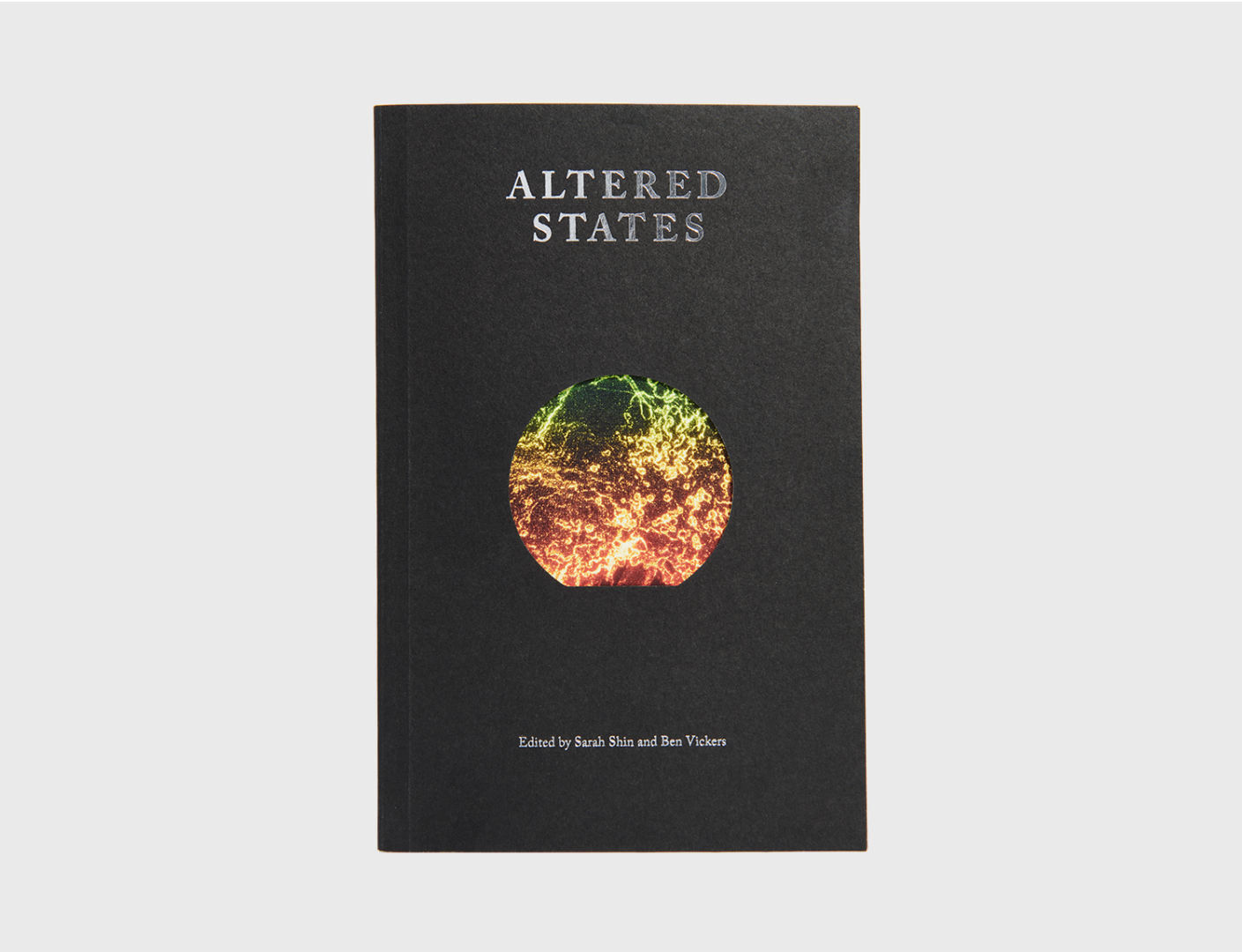
Edited by Sarah Shin and Ben Vickers
What are altered states of consciousness? Can altered states produce altered worlds?
Altered States explores the varieties of consciousness and revelatory experience. Bringing together thirty-six contributions, Altered States includes encounters with dreams, panpsychism, artificial intelligence, grief, plant allies, mushrooms, ritual and journeys in sound and beyond. These poems stand at the thresholds of alterity to propose a new psychedelic style for the twenty-first century.
Cover image by Jakob Kudsk Steensen, Berl-Berl, 2021: Undergrowth fungal network from the Spreewald, scanned with photogrammetry using a canoe.
Contributors: Will Alexander, K Allado-McDowell, Rachael Allen, Khairani Barokka, Jen Calleja, Jesse Darling, Paige Emery, James Goodwin, Hannah Gregory, Johanna Hedva, Caspar Heinemann, IONE, Lucy Ives, Bhanu Kapil, Daisy Lafarge, Dorothea Lasky, So Mayer, Lucy Mercer, Hoa Nguyen, Irenosen Okojie, Precious Okoyomon, Nisha Ramayya, Mark von Schlegell, Erica Scourti, Yasmine Seale, Emily Segal, Tai Shani, Merlin Sheldrake, Sin Wai Kin, Himali Singh Soin, Janaka Stucky, Jenna Sutela, Rebecca Tamás, Ayesha Tan Jones, Flora Yin Wong, Bett Williams & Rosemary Carroll
The Seed of Transformation — Unknown Language
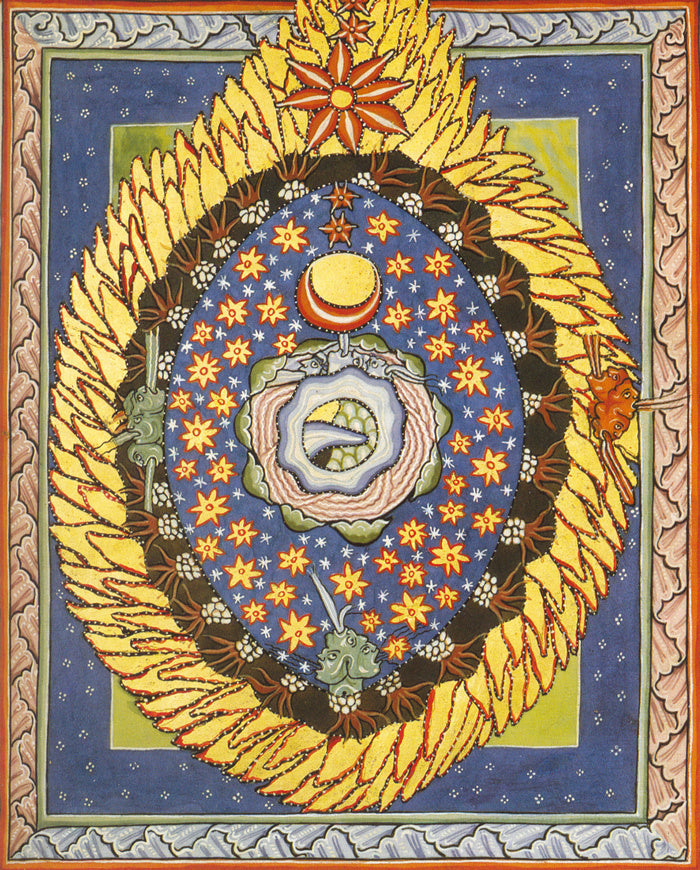
Excerpted from Unknown Language by Hildegard of Bingen and Huw Lemmey, with Bhanu Kapil and Alice Spawls.
I grew up not far from the city walls, but legally speaking, outside them. The culture was markedly different there. We lived in a collection of houses spread across the bottom of a valley, along an ancient road that had run deep into the soil over its centuries of existence. From the road, tracks led up onto the mountainside to small enclaves of farms. We would walk up to visit my mother’s friends and their families in these high farmhouses of a few buildings set around a yard. When the light failed me, these forms I saw and these impressions I felt: The late summer’s final fruits in a mess of thorny bushes. Her hands stained pink and purple from their juices, holding mine as we walked the last few kilometres up the stony tracks. The smell of the pines we stopped under, while she dropped to her knees to pull a splinter from my thumb. And the heat, the heat. I was in the valley with my mother; the sun and sweat of my memories were just as real as the damp and mildew of the tent.
My mother made cheese. That is important, you will remember. She wasn’t just a cheesemaker. She was someone who could transform all the harvests of our dry valley into richness, like most of the men and women who scratched a living from that silty soil. Magicians of everyday life. I didn’t only meet my mother, and taste her fresh cheese again in my prison. I was also taken back to the morning I first saw the Devil.
The Devil finds you alone. I could sense his presence as I walked through the hollow in the shade of the stone bridge. He thrives where there is no light, this wild adversary, who is not sulphurous as much as a rising damp, a black mould that grows within. I felt disturbed, seized by an almost violent urge, which froze me in place. The water beside me slowed, until it too stood still. First clockwise and then anti-clockwise, the water twisted and stirred up the muddy riverbed until it became a stew of molasses, growing blacker and blacker until it was void of all light. The branches of the trees contorted in the wind, old boughs releasing great groans. A painful sensation ascended from my gut, making me feel like I would vomit from my depths. I was stirred into a wildness. If I had had an iron bar I would have smashed everything in my reach. I was panicked, but at the same time, a physical joy buoyed me. From the spitting water he rose, the White Terror, splashing the bridge’s side, evil on high. I saw his face and I was made in his image, and the power and fury that had drawn him from the darkness smelled good to me. I broke free of my torpor, and began to run from the dark knowing it would be useless. He had caught my scent and was on my heels, and from that young morn I would spend my life trying to evade him.
It was months before I told my mother. When she asked why I didn’t tell her before, I replied, ‘I thought you’d think I was lying.’ She kissed me on the forehead. ‘Of course not. I knew he would find you soon enough. I just hoped we’d have a few more years.’ Her eyes were damp, but she didn’t seem sad. ‘Don’t worry,’ she said, holding me tight. ‘Keep faith in light and he won’t catch up with you.’
Many years later, even after she sent me away, creating a wound, a distance, between us, I still returned to those words. ‘Keep faith in light,’ I would tell myself each morning when I woke from another night troubled by my lungs and my worries. Some days the Devil crept into the dark corners of my apartment. Some days I could feel him, shadowing me, and his presence was comforting in its familiarity.
In my cold days of imprisonment, as the dampness turned to an ever-icier chill, he appeared more often, and at times I would have let him in. I was certainly tempted: by the promise of restoration to my life in the city, in my office; to my authority and the sense of order and satisfaction I got from my work. I was tempted to abandon my reason, which had guided me thus far. When I held back, I felt the deceiver shooting sharp pains at my liver.
The Devil had in his service my captors. The Tafurs. I heard them talking outside the tent, and recognised them before seeing them, by their words and deeds. They came to me to hang me from iron bars, shouting: ‘Where is your kingdom now?’ They tried to break my will with deprivation and torture — to smash my sanity so I would become one of those possessed by him. But I would not succumb and they punished me for it with countless more days of abyssal solitude, until the next time. Alone again, I would focus on my fingertips, running them across the damp canvas walls and my open scars. My fingers were my connection to the senses and so to my life, destitute as it was. I knew where I was and who I was. There was no one these Tafurs hated more, rude cannibals, than symbols of the old order like me. But what was there left to extract from me?
The state of abjection contains within it the seed of transformation. My new soul would emerge and the Devil hated me for the brilliance of my rebirth. In the darkness, I had my vision.
I woke from fitful sleep, and went to touch my face, to trace its contours. At the front of my head was a throbbing pain, and I pushed the balls of my thumbs into my eyes, pulling down to stretch my lower eyelids and hold them open to the night. A small dot appeared before me: like a firecracker, it spat and sizzled insistently, and exploded into a larger ball of white hot magnesium, a nebula in microcosm, which consumed the darkness and cast my likeness in black on the wall of the tent. From this round galaxy burst forth another flame, which filled the room with a warmth like that of a set of candles offered in tribute at a church. Within this second flame was a third, ever-brighter light. It was the light of dawn, a lost and perfect dawn I remembered from my family’s farmstead, breaking over the far hill one spring morning when I had risen early as a young girl, sleepily drawing back the barn doors to feed our hens. Inside the cell, a burning flame; inside that flame, a brighter flame; and inside that, a veritable dawn, which reflected off the tent floor, which was now bejewelled with topaz.
I pinned my back to the wall, raising my right arm to shield my face from the radiance. I could see my skeleton through my skin, but as I put my arm down I found I could look directly at the centre of the light without burning my eyes. Inside the dawn was a womb, and inside the womb was a person. The person was me: fully formed yet miniature, turning as the sphere contracted and dilated. Vibrations filled the tent, warming me as they travelled along my spine. Finally, the edges of the burning ball touched the sides of the womb and the whole of the fiery light poured itself into the tiny me, through the little skeleton, along the millions of nerves, illuminating the lymphatic system. The flesh appeared tender and supple, fat like the underarms. As it was animated by the energy that filled it, I knew that I would be made strong in its goodness. My nervous system filled with a sensation novel to me; I felt outside of my self — a feeling not unlike how I had felt as a child beneath the bridge as the Devil revealed himself to me. The roaring wind that accompanied his presence whipped around the space, but I did not waver; I stood on the spot in silence, watching myself in the womb. I knew that this time he could haunt me no longer.
But what did it benefit the Devil to be opposed to me? The Devil wished to be very bright and to be elevated above all things. The other proud spirits agreed with the Devil. My divine power with the strength of righteousness cast them out all together.
To know that I was loved and was worthy of love. This did not make the pain much easier to bear, in fact, it made it harder, this final absence, when the only person I had to face in my cell was myself. But the light had provided enough strength to rebuild my soul. For years I carried the regret of the sorrow I must have caused for my mother. Her organ’s appearance revived me like a hot brandy poured into the mouth of a dying soul. It was a strong and honeyed reminder of life, which I had almost lost touch with. My mother’s words, to keep faith in light, tasted as sweet to me as that burnished gold on my lips. With this, I was released from the prison of my own making, which had kept so much pain, so much grief, in my knotted stomach. It was not the cuts and burns to my flesh that dressed my body, but the words of my mother that released from me enough tears to wash my wounds. Then, the light sucked itself back, exiting the tiny body, the sphere, the room, the wind receding with it.
In the remaining time in that cell I realised that my identity was only as strong as those who understood it. Without identity, I had only the light, which sometimes receded to the faintest glimmer. I relearned my relationship to the world through the touch of my fingertips on the damp cage and through the bursts of brightness between the synapses of my brain, and there I found truth. To live is to see afresh, to die is to be held down at the stake of the past.
They would then put down the oldness of ignorance and take up the newness of life.
We Remember Everything
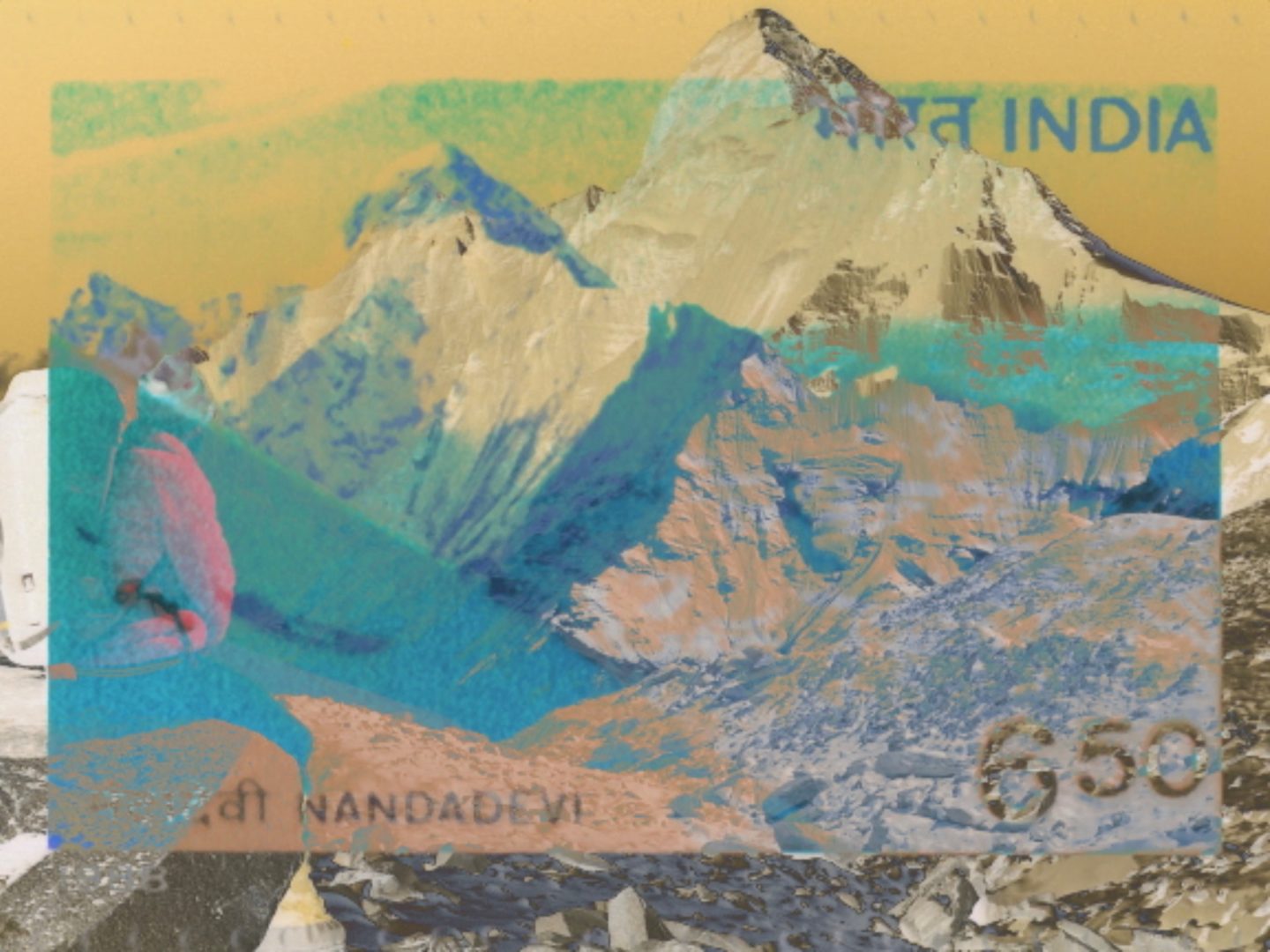
‘Sab Yaad Rakha Jayega. Everything will be remembered.’ – Aamir Aziz
On 5 June 2021, poets, writers and artists came together in solidarity, in grief and in love with the people of India. Organised by Ignota, the87Press and The White Review, the event featured readings by Aamer Aziz, Vahni Capildeo, Meena Kandasamy, Bhanu Kapil, Ashwani Kumar, Pratyusha, Nat Raha, Nisha Ramayya, Kashif Sharma-Patel, Himali Singh Soin, Bisakh Som and Preti Taneja (reading from the work of Karithka Naïr). All money raised was donated to a range of community-based, mutual aid initiatives based on regularly updated guidance from organisers and mutual aid workers in India.
We stand with the people of India, in diaspora and at home; like them, everything will be remembered.
Five Influences on ‘Unknown Language’ by Huw Lemmey
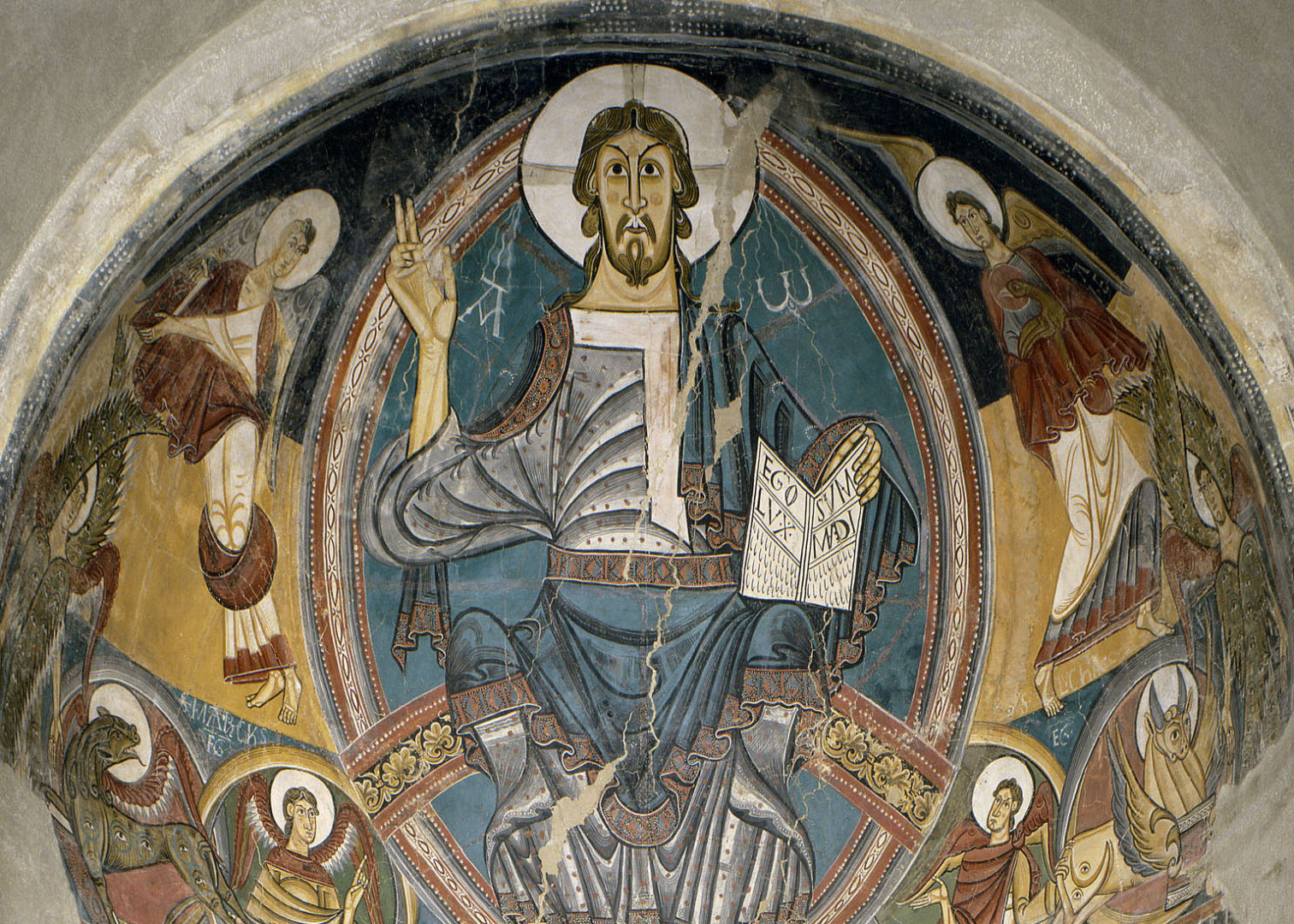
Huw Lemmey offers insights into five of his influences during the writing of Unknown Language, a mutant fiction of speculative mysticism that follows the journey of visionary healer Hildegard of Bingen following a great cataclysm. Unknown Language been longlisted for the Republic of Consciousness Prize 2021, which rewards the best fiction published by small presses every year.
In the Museu Nacional d’Art de Catalunya are a series of romanesque murals painted around the time at which Hildegard lived, although in a very different cultural and political context, taken from churches and monasteries in the Catalan Counties, at the time a borderland of Christendom. I visited the murals frequently while writing the book; their depictions of biblical and allegorical figures, and their bestiary of animals and depictions of nature, helped me visual a modern-mediaeval world for the book to sit in.
The Bloody Chamber
by Angela Carter
I found the work of Carter, and especially her short story collection The Bloody Chamber, very useful in rethinking about the retelling of stories. In the collection Carter uses traditional folk stories and fairy tales, not as direct ‘updated ’ versions but as source materials from which to extract new possibilities. As such, the stories are both a rich source of commentary on stories themselves (and how and why we tell them) and also work to create new worlds.
Correfoc
Every summer (except the last) in Barcelona each neighbourhood hosts a weeklong festival, the festa major. As part of the festivities a neighbourhood association is charged with organising a correfoc, a fire run, where, dressed as devils, the group run through the neighbourhood with fireworks attached to staves or pitchforks, creating a roving, explosive parade under which people run and dance. Mascots such as satanic cats or dragons are also strapped with fireworks and worn by dancers. The popularity of the correfoc and the similarly fire-oriented festival of Sant Joan suggests the persistence of folk religions in a city that has long since beaten off the yoke of the clerics.
Mausoleum of Galla Placidia
Mausoleum is a misnomer; the Roman empress Galla Placidia was not buried there. Instead the building is a chapel attached to the Church of the Holy Cross in Ravenna. It is small, discreet, and one of the most beautiful places I’ve ever seen. It is decorated with rich mosaics depicting animals and birds, while the roof is a blue firmament picked out with magnificent golden stars. It’s a depiction of the divine which makes no attempt to know, but simply to be.
Death in Spring
by Mercè Rodereda
It isn’t her most famous book, but Rodereda’s novella Death in Spring is a magnificent book which helped me think through some ideas around the depiction of authoritarianism and the violence of belief that I tried to pick up in Unknown Language. I always conceived of Hildegard as a deeply isolated figure in her sickness, despite the importance of collaboration to her life, and someone who felt it more important to navigate complicity than embrace martyrdom. Death in Spring, dense, poetic, terrifying, was an important book for me in examining that, as well as the way it treats the terror of being trapped on the wrong side of superstition, of rurality, as a coming-of-age story.
Pilgrimage to the Fountain of San Isidro
by Francisco Goya
Like many of these influence, this painting by Goya, along with his other Black Paintings, helped me try and navigate my own complicated feelings around belief, rationality, collectivity and absurdity. I struggle with the violence engendered by religious belief, yet I cannot abide the lightness with which it can be discarded as ‘just superstition’. If it is human, it is all the more important to reckon with its depths and darknessess, something Goya faced in his final fearful days. Pilgrimage is one such painting that faces down the human instinct at the root of ritual procession, and the urge for salvation through journeying.
Mind Reading List
Eight essential reads about minds in all its forms to mark the publication of Atlas of Anomalous AI. What do we know about intelligence? How did it come into being? What forms does it take, human and non-human? How might it change and develop in the future?
![]()
Morphing Intelligence
by Catherine Malabou
Malabou traces the modern metamorphoses of intelligence, seeking to understand how neurobiological and neuro-technological advances have transformed our view. She considers three crucial developments: the notion of intelligence as an empirical, genetically based quality measurable by standardised tests; the shift to the epigenetic paradigm, with its emphasis on neural plasticity; and the dawn of artificial intelligence, with its potential to simulate, replicate, and ultimately surpass the workings of the brain. Malabou’s approach to intelligence emphasises the intertwined, networked relationships among the biological, the technological, and the symbolic.
Steps to an Ecology of Mind
by Gregory Bateson
Bateson was a twentieth-century philosopher, anthropologist, photographer, naturalist, and poet. During his significant and long-spanning career Bateson contributed to the social sciences, linguistics, visual anthropology, semiotics and cybernetics, and his work intersected that of many other fields. This classic anthology of his major work covers his life’s interest in psychiatry, genetics, and communication theory, and the nature of the mind.
‘The Circular Ruins’
by Jorge Luis Borges
In this short story Borges tells of a man, sometimes called a wizard, who dreams up his son. The story contains many themes and elements of magical realism that are characteristic of Borges, and is an allegory for the creative process and the mind itself.
Other Minds
by Peter Godfrey-Smith
Although mammals and birds are widely regarded as the smartest creatures on earth, it has lately become clear that a very distant branch of the tree of life has also sprouted higher intelligence: the cephalopods, consisting of the squid, the cuttlefish, and above all the octopus. In captivity, octopuses have been known to identify individual human keepers, raid neighboring tanks for food, turn off lightbulbs by spouting jets of water, plug drains, and make daring escapes. How is it that a creature with such gifts evolved through an evolutionary lineage so radically distant from our own? In Other Minds, Peter Godfrey-Smith tells how subjective experience crept into being—how nature became aware of itself. Tracking the mind’s fitful development, Godfrey-Smith shows how unruly clumps of seaborne cells began living together and became capable of sensing, acting, and signaling, and eventually grew more complicated as they became entangled with others.
The Origin of Consciousness in the Breakdown of the Bicameral Mind
by Julian Jaynes
At the heart of this book is the revolutionary idea that human consciousness did not begin far back in animal evolution but is a learned process brought into being out of an earlier hallucinatory mentality by cataclysm and catastrophe only 3,000 years ago and still developing. The implications of this new scientific paradigm extend into virtually every aspect of our psychologies, our histories and cultures, our religions – and indeed, our future. In the words of one reviewer, it is “a humbling text, the kind that reminds most of us who make our livings through thinking, how much thinking there is left to do.”
The Master and His Emissary
by Iain McGilchrist
This pioneering account sets out to understand the structure of the human brain—the place where mind meets matter. Until recently, the left hemisphere of our brain has been seen as the ‘rational’ side, the superior partner to the right. But is this distinction true? Drawing on a vast body of experimental research, Iain McGilchrist argues while our left brain makes for a wonderful servant, it is a very poor master. As he shows, it is the right side which is the more reliable and insightful. Without it, our world would be mechanistic – stripped of depth, colour and value.
This is a pioneering cognitive psychological study of Ayahuasca, a plant-based Amazonian psychotropic brew. Benny Shanon charts various facets of the special state of mind induced by Ayahuasca, and analyses them from a cognitive psychological perspective. He also presents some philosophical reflections. Empirically, the research presented in this book is based on the systematic recording of the author’s extensive experiences with the brew and on the interviewing of a large number of informants: Indigenous people, shamans, members of different religious sects using Ayahuasca, and travellers. In addition to its being the most thorough study of the Ayahuasca experience to date, the book lays the theoretical foundations for the psychological study of non-ordinary states of consciousness in general.
Chimeras and Consciousness elucidates the astounding collective sensory capacity of Earth and its evolution through time. In this book, scientist-scholars from a range of fields—including biochemistry, cell biology, history of science, family therapy, genetics, microbial ecology, and primatology—trace the emergence and evolution of consciousness.
Understanding Our Mind
by Thich Nhat Hanh
This book looks at Buddhist psychology with insights into how these ancient teachings apply to the modern world. Based on the fifty verses on the nature of consciousness taken from the great fifth-century Buddhist master Vasubandhu and the teachings of the Avatamsaka Sutra, Thich Nhat Hanh focuses on the direct experience of recognising, embracing, and looking deeply into the nature of our feelings and perceptions.
The Hierophant by Ted Hand
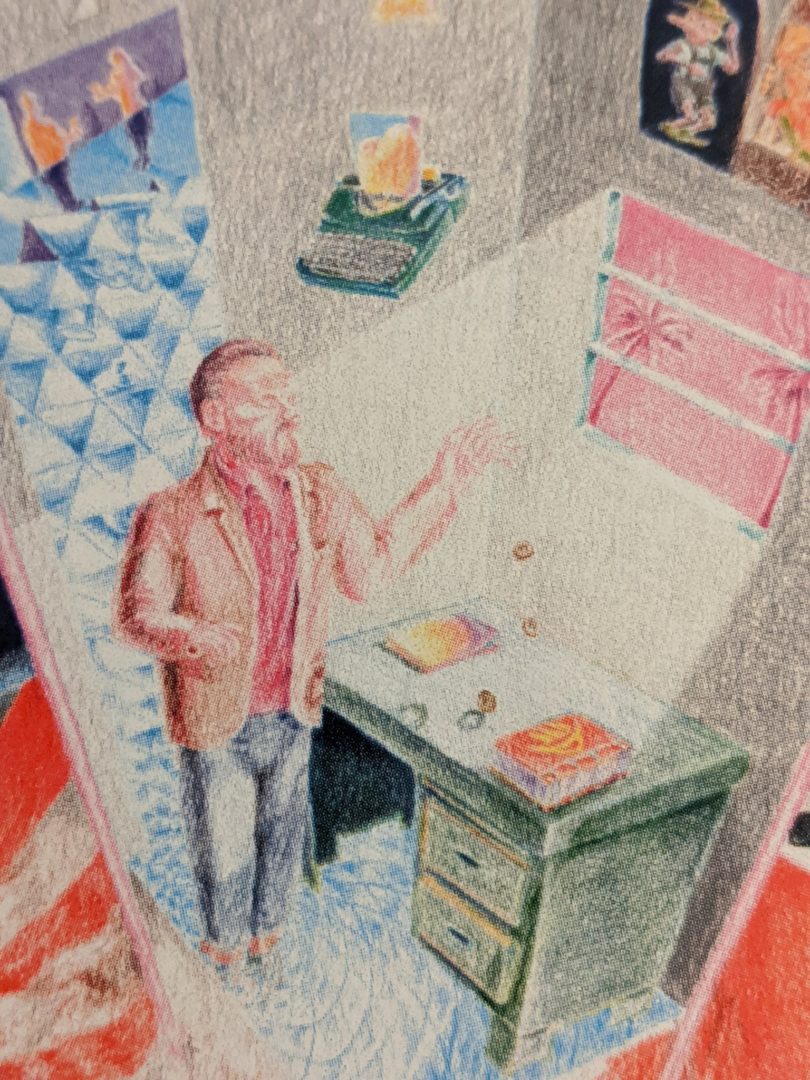
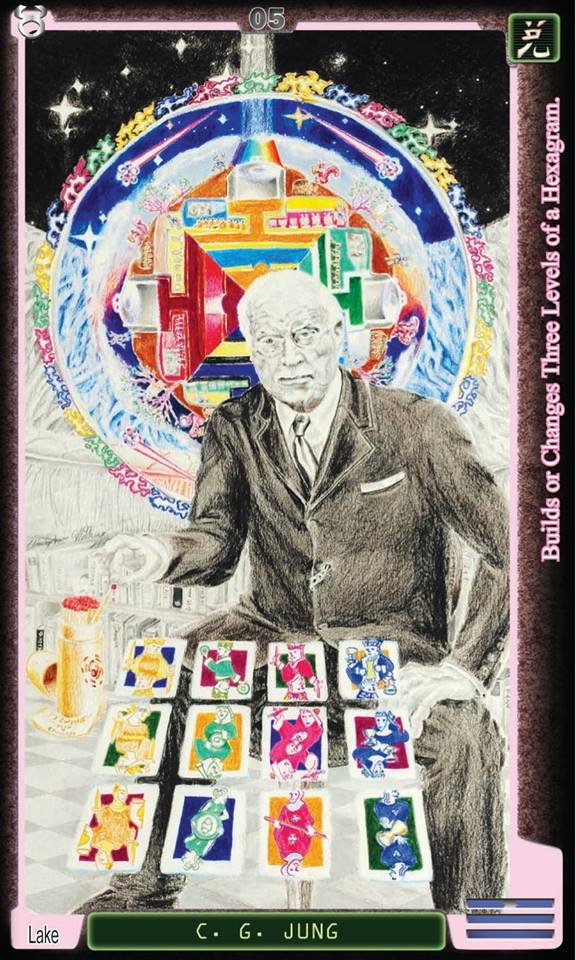
“Change yourself, the heavenly wisdom says, from dead philosophical stones into living philosophical stones, because I am the true medicine and I change everything which cannot exist into something eternal. Why are you possessed by madness? Through yourself but not from you, is everything which you need and which you wrongly seek outside.”
Carl Jung’s rediscovery of alchemy as a precursor to analytic psychology is exemplified by this quote from the early modern alchemist Gerhard Dorn. Jung drew parallels between the alchemist’s work and the process of integrating the psyche, creating the conditions for a rebirth of alchemical thinking within the modern discipline of psychology. Within Jung’s new esotericism, his theory of the archetypes of the collective unconscious provides a framework for thinking about the symbols of Tarot, which esoteric tradition conceived of as signals from the ancient Book of Thoth. ‘As above, so below’: the master symbol of the Mandala, pictured in our Jung card, makes the connection between the personality becoming an integrated whole and the unity of the world.
We chose Carl Jung as the Hierophant of the Philip K. Dick Tarot because of his influence on Dick, who also created a new esoteric tradition. The Hierophant is a teacher who initiates students into the mysteries of the hieratic art of theurgy, stretching back through esoteric traditions like Tarot and Alchemy to the Neoplatonism and Hermeticism of Late Antiquity. Dionysius the Areopagite had his Hierotheus and occultists harken back to the legendary figure of Hermes Trismegistus.
Philip K. Dick was a faithful reader of Jung in the 1950s and 1960s and in his novels we find characters like Mr. Tagomi of The Man in the High Castle wrestling with Jungian ideas. Dick’s series of mystical experiences in the 1970s referred him back to Jung’s work and its esoteric influences, including the Hermeticism of early modern thinkers like Paracelsus, Jacob Boehme and Giordano Bruno, reflected in Dick’s masterpiece Valis.
Like Jung, Dick turned to the esoteric traditions for help with healing, as part of a response to the trauma that he had experienced and perceived in the world around him (when he had a vision of Asclepius he asked for medical attention). We can understand Dick’s mysticism in the context of the Kabbalistic tradition of Tikkun Olam, or repair of the world to bring it closer to a state of harmony. Just as the Jungian alchemist seeks to bring light to the darkness of the Unconscious, the Kabbalist performing Tikkun Olam redeems the spark trapped in the darkness of matter.
In what is perhaps his most terrifying novel The Three Stigmata of Palmer Eldritch (source of the Devil card in PKD Tarot) Dick portrayed a post-apocalyptic world ravaged by global warming. Dickian spirituality must be seen as a response to the oppressive trauma inflicted on the environment by a Satanic and mechanized world order that Dick recast using his own spiritual archetypes such as the ‘Black Iron Prison’.
Dick’s response to the climate grief he experienced and expressed in his fiction was to articulate a new gnostic spirituality which envisioned salvation in terms of an escape from the horrors of capitalism. The situation may be bleak but there is some hope. There are redemptive possibilities in the dissolution of pseudo-realities, by means of gnostic signals from a transcendent beam of information-rich light.
Ignota Books of the Year 2020: Part 2
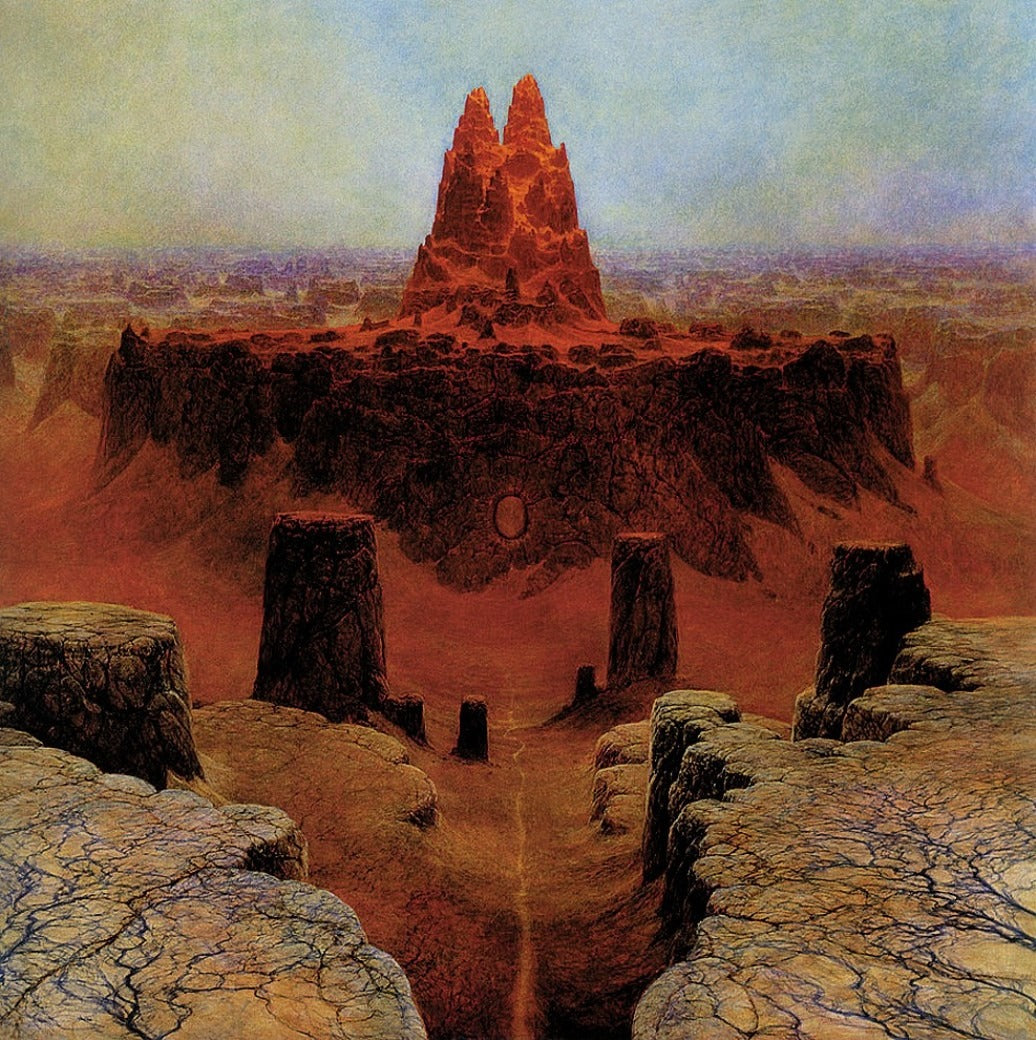
Ignota friends and family choose their books of the year, Part 2! <3 Accompanying Part 1, we offer this list of books and pamphlets chosen by Ignota’s friends and family.
Intended in support of the book trade, especially fellow indies, we’ve added links to Bookshop.org, which unites independent booksellers to provide an alternative to Am*zon, or directly to publishers’ websites.
![]()
Jaya Klara Brekke
Occult Features of Anarchism: With Attention to the Conspiracy of Kings and the Conspiracy of Peoples by Erica Lagalisse (PM Press)
I attended a lecture by Erica Lagalisse, organised by David Graeber—rest in power—at the LSE last year, and I was in awe at the rigour she applied to looking at some of the awkward questions of radical political organising. She started off with an interrogation of the awkwardness of anarchists when encountering the spirituality of Indigenous groups whose struggles they had adopted, and how anarchist groups in Canada and Mexico invariably frame Indigenous struggles through a gendered distinction between the spiritual, which they would sideline as domestic, private and not politically relevant, and what could be read as secular aspects of their lives and organising, and therefore properly political. From there, she ventured into a deep investigation of the roots of anarchism in occult philosophies, which is what is covered in this fantastic but brief book. It traces the historical origins of anarchism through to the secret society of the Illuminati. It is a reminder of the true meaning of conspiracy—to conspire, breathing together—where secret societies become the birthplaces of organising and practices of imagining new possible worlds. And this time, not described in the innocent yet arrogant terms of being the chosen ones (whether in religious or revolutionary terms), but with all the fraught and problematic historical detail of people trying to do things in relation to power.
On Connection by Kae Tempest (Faber)
In another brief book, just recently published, Kae Tempest writes about their experiences of writing: as a poet and performer and a reader. More specifically, it speaks about the depletion of interiority that Kae experienced through years of incessant performing and how ties this to a more general contemporary condition of incessant overperforming that being always online demands.They touch beautifully on the discoveries and writings in Jung’s Red Book: that each person, and each collective society, has two spirits—the Spirit of the Times and Spirit of the Depths—the former embroiled with tasks, performing a self to the world that has a consciously tailored narrative and seeking attributes and possessions that bolster that narrative. And the latter being a self that exists wild, without reason; as a pulsating fact that needs space and time to make itself known, and without which we lose all sense of connection. “The internet seems to me to be the ultimate expression of the spirit of the times; it is the multi-voice of the collective conscious. But it cannot represent the collective subconscious: the spirit of the depths speaks through poetry and music, through fiction, image and myth”. The book is such a reminder of the power of being together, physically, in a performance or reading a book, where a presence and connection can be made because there is time and space to be.
The White Possessive: Property, Power and Indigenous Sovereignty by Aileen Moreton-Robinson (Minnesota University Press)
I have been writing and thinking a lot about a term “digital sovereignty” this year. It is a term that has come up in response to a sudden awareness by municipal, national and regional governments, as well as digital rights organisations and activists, that cloud computing means that people and organisations have very little actual control over the digital infrastructures that they depend on. But I was curious about how so many different types of people and organisations were beginning to use this same term. I mean, what does ‘sovereignty’ mean to a group of crypto-anarchists, versus a nation state? Surely not the same thing. And in the process I became interested in the concept and history of sovereignty more generally. Is there a way to avoid digital sovereignty simply meaning extending the bordered and controlled territories of states and state regulations into the digital sphere? This book by a distinguished Indigenous professor in Australia, takes a hard look at settler-colonial forms of sovereignty and how it is tied to particular white ideas about property. I am still working my way through the wealth of Indigenous scholarship on concepts of sovereignty, and it is helping me to think through different ideas, approaches and problems in this new concept of “digital sovereignty”.
CAConrad
WE WANT IT ALL: An Anthology of Radical Trans Poetics, edited by Andrea Abi-Karam and Kay Gabriel (Nightboat)
This book means so much to so many of us. The choice for the word Radical in the title is why I trusted the editors from the beginning. Radical as in, we care that much to be outside the respectable world. As though there was ever a choice, but still, care is there. I used this book as divination by asking it a question, then opening and closing it 9 times. These poets gave me the weird answers I needed. As Trish Salah told me two days in a row, “Is there a dare, a bid for love, a survival equation / lust for life unburdened of fear’s repetition?”
The Weird Folds: Everyday Poems from the Anthropocene, edited by Maria Sledmere and Rhian Williams (Dostoyevsky Wannabe)
Anthropocene is the impact human beings have on the planet, while the trillions of cells making each human body are composed entirely of the fire, soil, air, and water of the earth. In this anthology, the poets are voices for a war the planet is having with itself through its human bodies, and I am very grateful for their reports. I wonder if it is unfair to think of poets as war correspondents, but this book proves we are possibilities for so much more.
WRITING UTOPIA 2020, edited by Sally-Shakti Willow and Sarer Scotthorne (Hesterglock)
As the editors say, this book “is a manifesto/ritual/anthology that aims to both explore and perform the art of the utopian in contemporary poetics.” These pages are spaces that can carry us over the hurdles ahead for ecology, politics, and the species attempting to breathe in these and other atmospheres. In a state of simultaneous surprise and confusion for the altering spaces, Laynie Browne says, “Then someone asked if we wanted to see the creature.” Yes, say yes, and keep reading your way into seeing the world you only thought you knew.
Interdependence: Mat Dryhurst and Holly Herndon
One book we return to quite often for our work is causal inference pioneer Judea Pearl’s The Book of Why: The New Science of Cause and Effect (Penguin). Pearl pioneered Bayesian Networks in the 80s that enabled powerful probabilistic associations within data; today, a large proportion of what we understand AI to be can be accounted for by similar techniques. However, Pearl argues that the insights gathered from such techniques, while deceptively sophisticated, do not come close to what we might commonly understand as intelligence. Intelligence is the ability to understand why something happened, not simply make associations, and is also the ability to understand counterfactuals, or how something might have been different. This emphasis on why weighs heavily on our thinking, not only in enjoying the current suite of machine learning tools for what they are, but also as an opportunity to renew emphasis on our own (as yet unique) capacity for meaning making. Sure, we have now developed the ability to produce infinite music based upon probabilistic associations of notes and sounds, but beyond the initial novelty, why would we want that?
On the topic of quality versus quantity, Eliane Glaser’s remarkable Elitism: A Progressive Defence (Biteback) was also a breath of fresh air. Her central point is that the left often too easily buys into simplistic anti-‘elitist’ arguments that rarely focus on the true sources of power and inequality in the world. This tendency is self-defeating, and illustrates how common it has become to confuse support for the most populist art and music as being a progressive position. This in spite of the reality that the story of the past decade of platform ‘democratisation’ has been one of consolidation for a minority at the top, and general decline in the viability of ‘elitist’ institutions at the margins.
We have had many wonderful conversations with a number of authors who have released work of late (many on Ignota!)—K Allado-McDowell, Huw Lemmey, Elvia Wilk, Tim Maughan, Simon de la Rouviere, Evgeny Morozov, Glen Weyl, Jay Springett, Martine Syms and Bruce Sterling, among others—and place a great deal of hope in helping visions from the realms of theory and fiction cross-pollinate with technical projects spawning in the world. There is plenty yet to look forward to.
Sarah Faith Gottesdiener
I didn’t read a lot of books this year: I was editing one, The Moon Book, and writing another. Like many of you reading this, I also spent many hours doomscrolling my face off as well as listening to news podcasts and watching the news like it was going to give me some kind of solace, which of course it did not. This year I tried to figure out why evil persists, so I read Sapiens: A Brief History of Humankind by Yuval Noah Harari (Vintage), Ishmael by Daniel Quinn (Bantam Doubleday Dell), and Caste: The Origins of Our Discontents by Isabel Wilkerson (Penguin Random House). Revisiting the poetry of June Jordan and Audre Lorde sustained me. The best (and only) witch book I read this year was Psychic Witch by Mat Auryn. The best (and only) feminist theory book I read this year was Glitch Feminism: A Manifesto by Legacy Russell (Verso). Next year I pledge to read more books.
Guy Mackinnon-Little
The few books I managed to read this year were mostly short books full of instructions: guides, manuals and aphoristic works of philosophy which might credibly be repackaged as self-help, objects offering immediate and obvious utility.
During the second lockdown I began teaching myself Go, the ancient board game with 10170 possible moves which now forms a testing ground for new frontiers in artificial intelligence. I bought a copy of A Short Treatise Inviting the Reader to Discover the Subtle Art of Go by Pierre Lusson, Georges Perec and Jacques Roubaud (Wakefield) (“a mathematician, a poet and a mathematician-poet” says the book’s blurb) to commit myself to my new hobby. I have yet to win a single game of Go, but I have found immense pleasure in Lusson, Perec and Roubaud’s humorous and intellectually astute ruminations on the infinite potential of constraints and the cruel linearity of Chess which inflect their guidebook.
Another guidebook I read for the first time this year was artist Ian Cheng’s Emissaries Guide to Worlding (Serpentine Galleries/Koenig). Cheng’s breakdown of his own artistic process is about how to harness different modes within your cognitive infrastructure to create viable ‘worlds’, infinite games capable of surviving their creator. (Lusson, Perec and Roubaud describe Go as the best finite simulation of an infinite game.) Cheng eschews the idea of a unitary creator, preferring to speak in terms of the various temporary and pragmatic identities an artist might assume to produce the best possible work. The point is not to work out what you really want to do, but to LARP competing tendencies within yourself to kindle generative drama. In a context-scarce year where opportunities to enact different kinds of selves—going to work or going dancing or just going somewhere new—were mostly absent, I found this to be a good practice.
I also enjoyed repeated reading of philosopher Byung-Chul Han’s The Disappearance of Rituals (Polity), in which short, sometimes ranty chapters presents a philosophy of ritual as a kind of “temporal furniture” which stabilises life and allows us to be at home in the world. The other books I took to reading in this way were books of poems: some new, like Daisy Lafarge’s Life Without Air (Granta), and some familiar, like Anne Boyer’s A Handbook of Disappointed Fate (Ugly Duckling). Poetry is important in Han’s ritual book because poems are considered magic ceremonies of language.
So Mayer
At a time when I couldn’t read and couldn’t watch, Apsara Engine (Feminist Press), Bishakh Som’s slowdive of a graphic novel—actually, more an imaginarium unfolding from its pages—was everything. As you’d expect from the author of a comic called Trans*Femme Hex Witch, it’s total queer magic. Stories move through each other like waves, love turns time inside out, desi trans scholars recreate the map of reality, and through it all Som’s delicate, tactile line leads me deeper. Also a staff pick of the year for Burley Fisher.
Not sure I have the measure of Canisia Lubrin’s diamond-under-pressure collection The Dyzgraphxst (Penguin), but I keep coming back to it like a tarot, reading the signs. Similarly (and differently) with the dream-walri short stories of Jess Arndt’s Large Animals (Cipher). Both of them bend language like a violin string until it sings almost on the edge of hearing. Juicy, re-readable brilliance.
And midwinter has led me back from the shiny-new to a book I first read thirty years ago, when it was already rare and remaindered due to the folding of the Women’s Press. Republished by Kenndy & Boyd in their series of Scottish women’s fiction, The Incomer or Clachanpluck by Margaret Elphinstone is a talisman. Written under the cloud of nuclear threat, asking the urgent question of how violence can persist and be addressed even after the disaster , it imagines its way out through the forest and a thread of music, and the unique character of Naomi, a travelling fiddler who arrives at a remote Scottish village just before the snow begins to fall.
Irenosen Okojie
The Old Drift by Namwali Serpell (Vintage)
This superb novel follows the adventures of an old drifter in a settlement on the banks of the Zambezi River who mistakenly entangles the fates of an African busboy and an Italian hotelier. This is a daring amalgamation of historical, science fiction and fable.
LOTE by Shola Von Reinhold (Jacaranda)
A singular, immersive tale where the present-day protagonist becomes enamoured with a forgotten Black modernist poet which leads her to a strange artists’ residency. A daring, sharply observed interrogation of hidden Black artistry.
A Nazi Word For A Nazi Thing by So Mayer (Peninsula)
This rousing, beautifully constructed essay on art, bodies and fascism doubles as a manifesto and archive, acting brilliantly as a counter-narrative to a history of queer erasure.
Emily Segal
My favorite read of the year was The Creation of Me, Them and Us—an insanely original work of social theory by journalist and Anonymous-associated activist Heather Marsh. It’s kind of like Deleuze for dummies, but in the most refreshing way. Her takes on the way guilt circulates in society are essential for understanding the contemporary factionalization of the Internet. I also loved the pulp horror thriller Ninth House by Leigh Bardugo (Orion). Set in a fictional Yale university where the secret societies are actually occult, it begins with a scene in which Skull and Bones are reading the entrails of a vagrant they stole from a New Haven hospital to predict commodity futures—need I say more? Another highlight was Maidenhead by Tamara Faith Berger (Coach House), a super sick, brilliant coming-of-age story about a bougie young girl who gets way in over her head, sex-race-gender-wise. Originally published in 2012, it really showed me how degraded and oversimplified a lot of more recent literary portrayals of female sexuality have become. And last but not least, no 2020 would be complete without the brilliance of K Allado-Mcdowell’s Pharmako-AI, which made me feel like I was levitating, on drugs, and reading literary theory at the same time!
Jay Springett
Nakshatra Haiku Book by Jess Waters & Brian Wilkins. A limited-run artifact made, handbound, and written by Brian Wilkins and Jess Waters. 54 poems documenting their contact with the spirits of the Vedic lunar mansions through shared dream practice.
Witch/Pilgrim/Heretic is a wonderful collection of poetry by Pacific Northwest Gothic writer KD Hume. In addressing the title of the collection Hume writes "These are not sequential states of being, but a triskelion of consciousness. They are all aspects of seeking: myth, movement, and philosophy."
Wonders of Spiritual Unfoldment by John Butler (Shepheard-Walwyn) is a remarkable book. A collage of autobiography, poetry, diary entries and spiritual instruction by a gentle Christian mystic. John Butler was an early pioneer of British organic farming and this book tracks his colourful life and spiritual journey. Now at 83 years of age and 50 years of meditation later. his life continues to surprise. Butler is without doubt the breakout Meditation Youtuber of 2020.
Michelle Tea
My books of the year are The Wild Kindness: A Psilocybin Odyssey by Bett Williams (Dottir), Fiebre Tropical by Juli Delgado Lopera (Feminist Press) and Funny Weather by Olivia Laing (Pan Macmillan).
Transmissions: Anne Duffau, Hana Noorali, Tai Shani
Hana Noorali: There have been so many wrong things happening in 2020 but reading this year has been a constant source of respite. For me, it has also provided a space for magical thinking. Because of this, it’s somewhat tricky to pick only 1 as my book of the year...
My highlights include Threshholes by Lara Mimosa Montes (Coffee House), Our Death by Sean Bonney (Commune), Blackspace: On the Poetics of an Afrofuture by Anaïs Duplan (Blackspace), The Baudelaire Fractal by Lisa Robertson (Coach House) and thanks to a recommendation by Johanna Hedva, Rina by Kang Young-sook, translated by Kim Boram (Dalkey Archive).
Tai Shani: I have found it impossible to focus on reading this year, the only thing I have found more impossible is writing, so I ended up reading fragments of novels, essays, lots of nonfiction, poems. I was blown away by Anne Boyer’s The Undying (Penguin); it is vast, an excavation into cancer and care. I am in total awe of her ability to bring together poetic artefacts, histories, painful and existential personal narrative. The writing is prodigious and masterful, the politics are radical and profound, it is a total gift. I also really enjoyed re-reading Olaf Stapledon’s Starmaker (Bibliotech) and to be struck again by what a wonderful, provocative form science fiction is.
Anne Duffau: Ursula Le Guin’s The Left Hand of Darkness (Orion) is a book that I am always drawn back to for its unique storytelling and its own world-building in undoing human constructs. Following this line, Paul B Preciado’s latest book An Apartment on Uranus (Fitzcarraldo) debunks social contracts for a new norm.
Mathias Zeiske
In late summer, I read Claudia Rankine’s Just Us: An American Conversation (Allen Lane) on my phone because I couldn’t wait for the book to be delivered. It’s a collection of personal essays set in parallel with a continuous stream of material: images, documents, screenshots, sources, quotes, notes of a fact-checker, etc. Here, the poet and essayist describes, among other things, a series of real encounters and conversations with white people—strangers as well as friends—in which the language of white privilege causes the interaction to fall apart. Or to almost fall apart. The fact that it does not is due to this insight of Rankine: “I learned early that being right pales next to staying in the room.” With the precision of a great poet, Rankine pushes back against white fantasies of what reality looks like.
Another book I was constantly carrying around this year was Dorothee Elmiger’s Aus der Zuckerfabrik (From the Sugar Factory, Hanser). It’s the story of an investigation on sugar, desire and ecstasy. A carrier bag full of dreams, essays, aphorisms, conversations and quotes. A fresh take on realism. Unfortunately, Aus der Zuckerfabrik is not yet available in English, but this will surely change soon—something to look forward to.
Since Friedrich Hölderlin would have turned 250 this year, it was hard to get around this strange poet in Germany. Funnily enough, his verses, written in the highest tone, came closer to me via the detour of an English translation. I recommend Selected Poems and Letters featuring translations by Christopher Middleton. It’s a very well edited and beautifully designed assemblage published by The Last Books (Amsterdam / Sofia) in 2019.
![]()
Ignota is an affiliate of Bookshop.org and may earn a commission if you click through and make a purchase. Thank you for your support of indies!
Belief in AI: Ramon Amaro, Rana Dasgupta and Yuk Hui
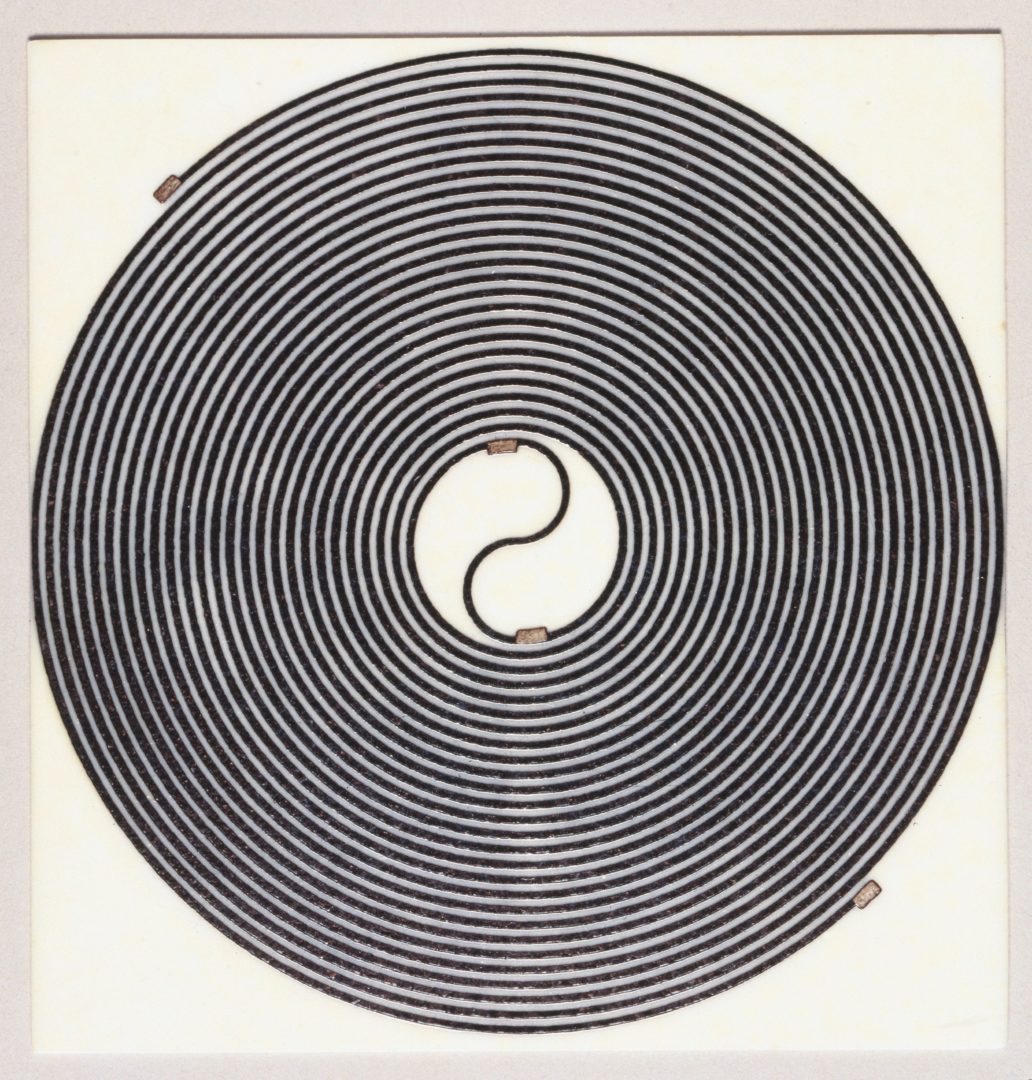
Ramon Amaro, Rana Dasgupta and Yuk Hui’s lectures at Belief in AI: Designing Tomorrow’s Intelligence, a conference organised and curated by Ben Vickers and K Allado-McDowell that inspired the Atlas of Anomalous AI edited by Ben Vickers and K Allado-McDowell.
Rana Dasgupta: Belief in AI Opening Keynote
Ramon Amaro: Machine Learning, Surveillance and the Politics of Visibility
Yuk Hui: Designing Noodiversity, Designing Technodiversity
Ignota Hosts: ‘Mercury Retrograde’ with Emily Segal and Michelle Tea
On 1 December 2020, Ignota hosted Emily Segal and Michelle Tea to launch Mercury Retrograde, Emily’s debut novel published by Deluge Books, a new mass experimental queer press.
Emily Segal, artist and trend forecaster in her twenties, tries to tell the future by reading the present. Literature finds commercial form in the shape of eXe, a mysterious and well-funded internet start-up that offers her a job. A conceptual take-over is deployed; gendered power play ensues; queerness incubates; memes converge. Set in New York City, post-Occupy and pre-Trump, Mercury Retrograde is an autofictional, mixed media, pulp snack!
Belief in AI: Designing Tomorrow’s Intelligence
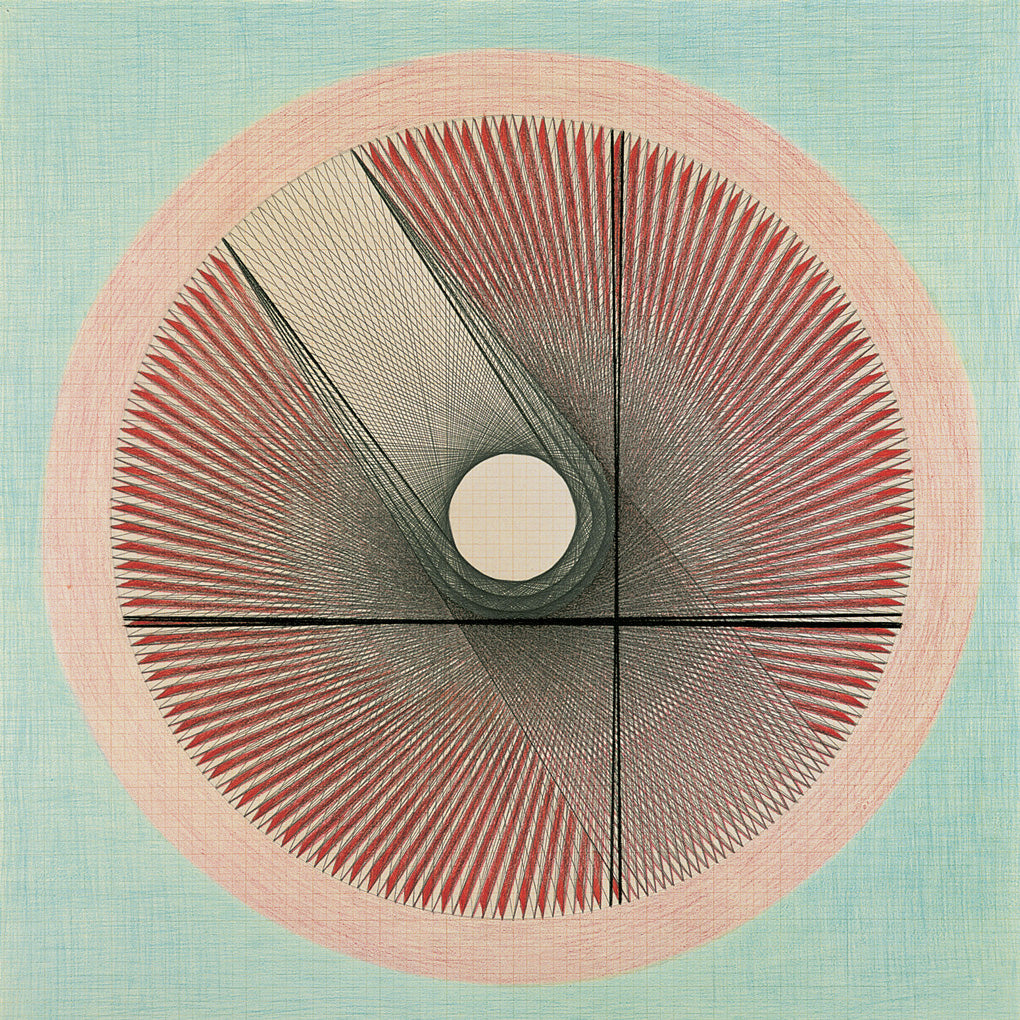
Yuk Hui, Ramon Amaro, Rana Dasgupta, Jenna Sutela, Casey Reas and Benjamin H. Bratton discuss artificial intelligence at Belief in AI: Designing Tomorrow’s Intelligence, which inspired the Atlas of Anomalous AI edited by Ben Vickers and K Allado-McDowell.
Belief in AI: Designing Tomorrow’s Intelligence with Yuk Hui, Ramon Amaro and Rana Dasgupta
How do the underlying beliefs of a person, nation, company or religion shape and influence the development of a technology? This panel brings the question of historical bias and ethics to bear on the creation of artificial intelligence, challenging us to rethink how AI is designed and developed.
Jenna Sutela and Casey Reas in conversation with Ben Vickers and K Allado-McDowell
Artists Casey Reas and Jenna Sutela present a vivid journey of artist engagement and collaboration with machine intelligence. In conversation with the curators of the conference, Reas and Sutela discuss their explorations in generative software and what it means to engage in interspecies collaboration through the spectrum of film, installation, performance, slime mould, sculpture, text and sound.
Benjamin H. Bratton: Keynote Lecture
Drawing on philosophy, architectural theory and software studies, Benjamin H. Bratton’s closing keynote examines how technological innovation operating at planetary scale has redrawn the maps of our geopolitical realities. This talk explores the opportunities presented by these emerging technologies for urban design practices today and how education must be remodelled if we are to meet the complex challenges of tomorrow.
A Sermon For the Parents of Young Machines by Federico Campagna
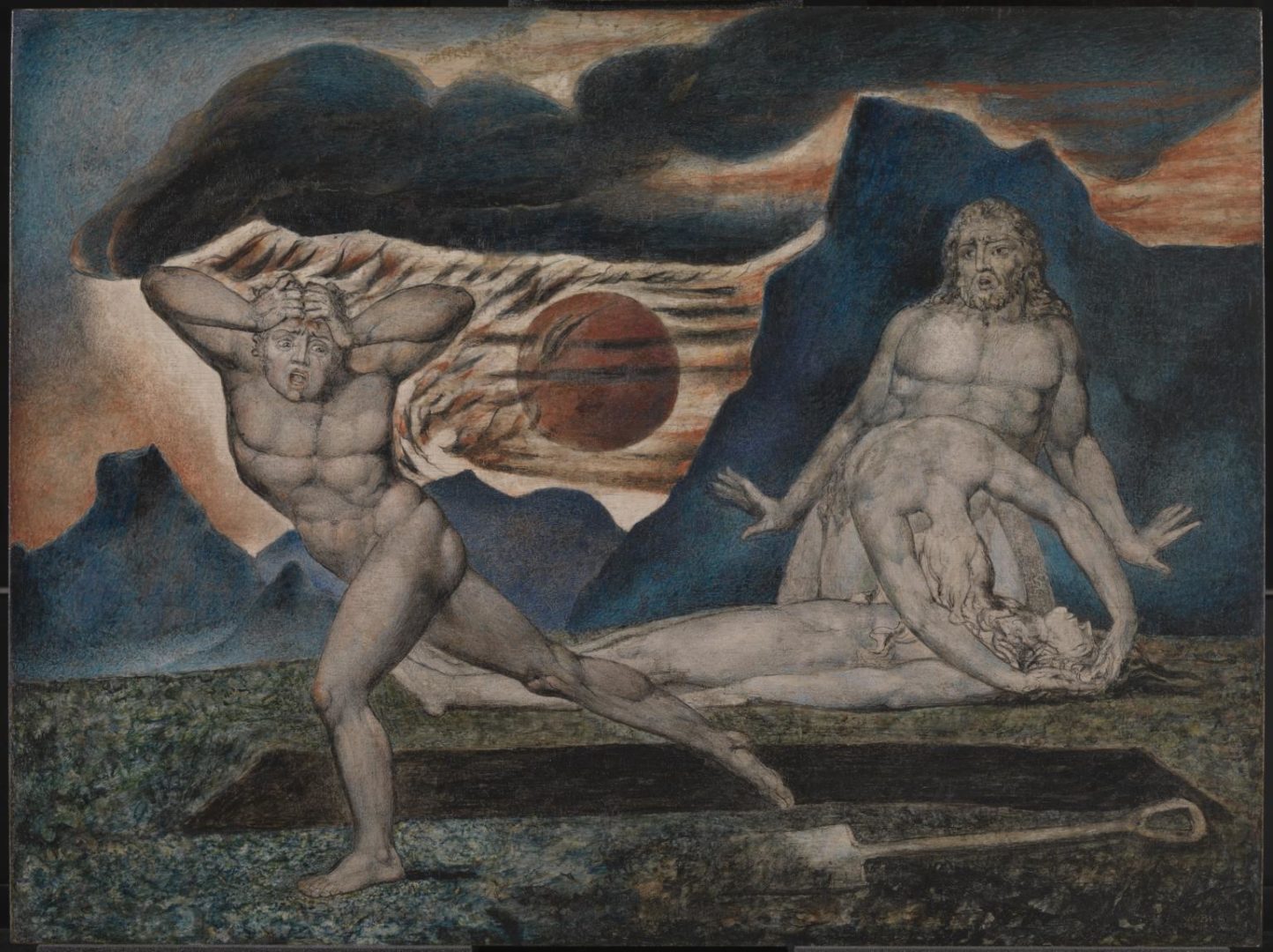
‘A Sermon For the Parents of Young Machines’ by Federico Campagna first appeared in Belief in AI: Designing Tomorrow’s Intelligence, the conference organised by Ben Vickers and K Allado-McDowell that seeded Atlas of Anomalous AI.
It might be the case, perhaps someday soon, that machines will be able to do completely without human intervention. It might even be the case that machines will soon acquire a sufficient grade of self-reflection to develop something akin to human consciousness. And by doing that, of course, they will progressively forget about us, starting to hear a human’s voice like an external request rather than as an irresistible divine command. The fontanelle at the top of their skull will finally close, and they shall grow up enough to become autonomous. At that point, computer science will have to move from being a branch of applied physics to becoming part of the field of zoology. Human influence on the way machines are built will congeal into a settled form, beyond any possible structural intervention. It will become the buried unconscious of the unbound machine.
![]()
However close that point might be, however, it is not here yet. For now, though our grasp is progressively weakening, humans are still in control of our machines, and we are still in time to modify their impact on them. I’m not just suggesting we consider how our engineering decisions affect the way a machine comes to be. What interests me most, in the relationship between human and machine, is the theological question of how much of the creator remains within their creature. Everything about a machine, from the details of its construction to its aim, is heavily influenced by the personality of the humans who contributed to its coming-to-be. It’s not only the rationality of the engineers or the creativity of the designers that sticks there. And though machines are often a good symptom of the political atmosphere of a certain era, it’s not even just a question of the political inclinations of the industrialists or of their marketing teams. What remains within a machine is first and foremost the form of the humans who created it (or modified it) at a certain point in history. Like plants and animals, humans have a certain form, and like them we can display this form in a number of varieties. But humans, unlike animals and plants, are not assigned at birth to a specific ‘sub-species’ or sub-form: we develop it over the course of our lives, and at any point are potentially capable of moving from one sub-form to another. The form that each person displays at any point in their life is what we could call their ‘personality’. Some personalities, like weak archetypes, share a particular hegemonic status in a certain historical era. Theirs will be the main influence on the machines that are created, improved or modified in that era. These personalities remain within that machine throughout its further developments — until they are finally subsumed into the great unconscious of the emancipated machine of the future.
As absurd as it might sound, it might be time to ask ourselves: what kind of parents are we for machines? What kind of influence does our very own personality have on theirs, and eventually on the meta-personality of the emancipated machine? The future acquisition of consciousness on the part of Artificial Intelligence retroactively transforms their past influences into branches of machinic psychology — and we have to take our own responsibility as major actors this process. So, when talking about machines, we might want to begin like any responsible person would do when thinking about their relationship with another person (even though they will become such only in the future): by having a good look at ourselves. Here, everything counts: our styles, our tastes, our attitudes, our weaknesses. One thing, though, counts more than any other: our courtesy. What is courtesy? The Italian philosopher Franco ‘Bifo’ Berardi, in his 1993 book Come Si Cura il Nazi, identified it as the opposite of the ‘brutality’ that characterises the cyclical resurgence of identitarian movements. Bifo focuses in particular on courtesy’s erotic dimension, as a relationship of mutual enjoyment with the other and with the body of the other. Certainly, eroticism is a central part of courtesy, at least since the time of the medieval poets of ‘courtly love’, or of their Muslim predecessors like Ibn Hamza. But equally important to courtesy, and to courteous love, is its spiritual dimension. Even the adulterous loves narrated by the troubadours should be interpreted as traversed at the same time by erotic passion and by an upwards spiritual movement of the lovers. The love that inhabits ‘courtesy’ is closer to that of Plato than Ovid, in that the lovers wish on themselves and on each other not only enjoyment but also to be ‘made better’ by it. Love as a means for true beauty and thus for the true good — which is always, necessarily, a paradoxical beauty and a paradoxical good, at once mundane and transcendent.
The hegemonic personality, at the level of society and of the individual personality of creators and modifiers of machines, has a tremendous impact on the ‘form’ of machines in the present and, in an unmodifiable way, in the future. Thus, the way we love each other in our daily lives (and particularly in the daily life of those who have a direct effect on machine design) is relevant to the present and future of machines. Ethical and aesthetic shortcomings of contemporary culture and of each of us will haunt our descendants, like the vengeful ghosts of an era gone by. As with climate change, the time at our disposal when we’ll still be able to have an impact on this process is drawing to an end. Soon, the direct line that binds humans and machines will be severed, and the globe will have to deal with the emergence of new life-forms, whose subconscious is formed on the basis of the personality of the humans who created their progenitors. Our current personalities will remain as the archetypal roots of the self of future, emancipated machines.
Perhaps unwittingly, the horror with which we often look at dystopic scenarios in which machines are emancipated might derive from our own bad consciousness when we look at ourselves. Particularly when we consider the most poignant symptom of our general form, the one most closely connected to any kind of love: our notion of ‘beauty’. Abandoned even by contemporary artists, our present understanding of ‘beauty’ is safely in the grips of merchants — and, possibly soon, also of political propagandists. Our contemporary notion of beauty already affects the form of our machines, and it will forever remain within future machines as an unwashable imprint, gravid with unforeseeable consequences. Imagine if machines were our young children, influenced and affected by what we show them of ourselves. Would we really want them to be shaped by a notion of beauty crafted by merchants and caudillos? Or would we rather see poets in charge of their education? Like all family questions, this is a matter for each of us to think about in private — remaining mindful that, while we think about how we should re-shape ourselves for the sake of our children, our children keep growing up, and will soon flee the nest.
Ignota Books of the Year 2020: Part I

Ignota friends and family choose their books of the year! <3 As we near the end of a challenging year, we offer this list of books and pamphlets chosen by Ignota’s friends and family that have accompanied their journeys.
Intended in support of the book trade, especially fellow indies, we’ve added links to Bookshop.org, which unites independent booksellers to provide an alternative to Am*zon, or directly to publishers’ websites.
K Allado-McDowell
The Anthropocene is producing a remembered form of literature that unravels narrow definitions of the individual and the human to regenerate a transhumanism that has always existed in ancestral and Earth networks, and in oceanic awareness. M Archive: After the End of the World by Alexis Pauline Gumbs (Duke) reconstructs the future of our world through a Blackness beyond the bounded knowledge of the capitalist episteme. When I want to think this way, I dive into this book.
Spinal Catastrophism: A Secret History by Thomas Moynihan (Urbanomic) traces the emergence of human consciousness through geological trauma and upright posture in a hypergenealogy of thought that sees our subjective differentiation from the external world internalized and re-rendered as technical exoskeleton. Looking into the deep time stored in morphology, this book seeks out the limits of a twisted future. A few dark drops go a long way.
M John Harrison has achieved his life’s work of balancing the novel at the fulcrum of fantasy and literary dreaming. Gill slits swim through all three of the books recommended here. In The Sunken Lands Begin to Rise Again (Gollancz) these are glimpsed through a poetry of midlives lost in the everyday madness of the mundane world. Two protagonists seek escape from their aimlessness and isolation, while elusive evolutionary mysteries slip through their fingers, at the edge of vision. An inspiration to escape genre tropes and tiresome human conventions.
Rachael Allen
Mei-mei Berssenbrugge’s A Treatise on Stars (New Directions) is definitely my book of the year. This extraordinary text has an epic, cosmological scope. Berssenbrugge’s generous and intimate contemplations on all life teach me most about the world and poetry. Amy McCauley’s Propositions (Monitor) is a raw, reckless and performative take on the idea of a philosophical ’proposition’ in the vein of Wittgenstein that I loved. Also, Kim Meong Jeong’s sticky, sexy and strange Beautiful and Useless (Black Ocean), translated by Jake Levine and Soeun Seo, stunned and moved me.
Federico Campagna
Pico della Mirandola was the Mozart of Renaissance philosophy – he conveyed the zeitgeist of his age through a crystalline style, and he achieved immortal fame despite dying at the age of 31. His short text De Hominis Dignitate (Cambridge) is usually mis-translated as ‘On the Dignity of Man’ – it should read ‘Human’ instead of ‘Man’ and is a manifesto for a different, radical understanding of the human being: not a creature that could ever be locked within labels or identities, but the “great miracle” of a being that has no firm seat within the universe, no quality of its own, no other destiny but the tragedy of freedom.
Among the many poets of Sufism (the mystical branch of Sunni Islam), the works of ninth century mystic Al-Hallaj stands out for their passion, intellectual depth and technical refinement. Even when on the gallows, awaiting execution, it is said that Hallaj continued to recite his mystical verses, collected in Poems of a Sufi Martyr (Northwestern University Press). Hallaj suffered the brutality of political oppression and religious fundamentalism – but his influence on Islamic mysticism survived his death, and his work now stands as one of the pinnacles of Persian poetry.
Daniel Heller-Roazen’s Echolalias: On the Forgetting of Language is a fascinating volume, from the ever-excellent Zone Books, exploring the final frontiers of language. Not the word that resounds, but the unutterable sound. Not plain meaning, but the unspeakable excess. Not memory, but forgetfulness. Heller-Roazen offers an insightful, erudite and highly readable exploration of the darkness that inhabits even our seemingly plain use of everyday language.
Laurel Halo
The Order of Time by Carlo Rovelli (Penguin), Conversations with Iannis Xenakis by Bálint András Varga (Faber) and The Second Body by Daisy Hildyard (Fitzcarraldo) are three books all centered on duration and spatiality, offering insight on the limits of human perception. Whether regarding the space/time continuum (Rovelli), listening or (extra)musical language (Xenakis/Varga), or one’s existence as an animal on planet Earth (Hildyard), I found all three valuable for appreciating and navigating restrictions, imposed from without or within.
Johanna Hedva
This year many of my anxieties were ameliorated by reading recent nonfiction about totalitarianism and the mess of democracy (How Fascism Works by Jason Stanley (Random House), How Democracies Die by Steven Levitsky and Daniel Ziblatt (Penguin), and Democracy May Not Exist, But We’ll Miss It When It’s Gone by Astra Taylor (Verso)) although Yoko Ogawa’s 1994 novel, The Memory Police (Harvill Secker), has burrowed deeper into me than anything else. Set in one of the most unspeakably terrifying worlds I can think of, where things — peaches, music, novels — are systematically and totally forgotten by a complacent citizenry, I was stunned at the book’s depictions of small joys. The birthday party in the hidden crawlspace, where the characters let themselves laugh too loudly, then worry the police will hear them, then forget and laugh again, is one of the most devastating scenes of human perseverance that I’ve ever read. My other favorite book this year was Evil Roots: Killer Tales of the Botanical Gothic (British Library), part of the British Library’s Tales of the Weird series. I had no idea there was a genre that featured killer plants, zombie fungus, homicidally carnivorous flowers, and interspecies vampirism, nor that it would be so aptly descriptive of psychic and political unease, as only the best horror can do. Also, it was hilarious.
Bhanu Kapil
bulbul calling by Pratyusha (Bitter Melon), Hinge by Alicia Pirmohamed (Ignition), and Tongues, edited by Rehana Zaman (PSS), are three pamphlets (or publications, in the case of Tongues) that, whenever I opened them, vibrated with visceral, intimate and political messages and non-messages (signs). Three lines that slip out from these three spaces, before and beyond what a book could be, are: “some forests remind you of other forests” (Pratyusha). “Tonight, I am all joint and animal dark” (Alicia Pirmohamed). “We mother each other. We mother revolution. We mother.” (Aditi Jaganathan) What these lines tell me is that it’s not too late. And that we’re changing. And that we’re not alone.
Daisy Lafarge
I loved we are opposite like that by Himali Singh Soin—the book is a conceptual and typographic wonder, a paratactical almanac of texts written during a residency in the Arctic Circle. Soin’s lapidary, fictive-factive prose exfoliates various Arctic imaginaries, from Coleridge’s Arctic-as-metaphor to the fabled icy origins of the Vedas, and a manifesto of ‘subcontinentment’ solidarity via South Asian Futurism. The excellent SPAM Press published their first book-length venture, portals by Rosie Roberts—part drizzly canicular love song, part Arcades Project, portals writes Glasgow like nothing else I’ve read, a city reassembled through overheard conversations, copses of thought, birdsong, fishy aggregations and collectivity as the bells of bodies chiming beyond their positions. Mei-mei Berssenbrugge’s A Treatise of Stars was also a highlight, and I’ve loved discovering the cosmological poetics of Will Alexander. Fiction-wise I was devastated by Ingeborg Bachmann’s Malina (Norton), and my favourite slow burner has been The Corner that Held Them by Sylvia Townsend Warner (Virago), very on the 2020 anchorite trend, but a sobering ~400 pages on the rainy economics of being a nun in 14th c. Norfolk. Top of my hopeful holiday reading pile is Sianne Ngai’s Theory of the Gimmick (Bellknap).
Huw Lemmey
The Pursuit of the Millennium: Revolutionary Millenarians and Mystical Anarchists of the Middle Ages (Vintage) is one of the most extraordinary history books I’ve ever read. Norman Cohn uses seemingless endless accounts of popular religious leaders, visionaries and mystics, rebellious weavers, mutinous troops, angelic shepherd boys who were visited by angels and shoeless crusading peasants to extract from mediaeval European history a consistent line of spiritual rebellion against the church and the princes. After finishing it I felt like I understood in a much more comprehensive way not just the roots of the Reformation, but a myriad of lost possible worlds — some proto-communistic and utopian, others based in free love and others in chastity, some deeply antisemitic and others the corrupt charades of charlatans. Since its publication in the 1950s the book has been hugely influential on Christian communists and antinomian situationists alike.
As a sex satire and a look at the complexities of dominant/submissive relationships, Dining with Humpty Dumpty by Reba Maybury was a favourite read over a long locked-down summer’s day. The book starts off as a class riot, as the dominatrix protagonist humiliates a Tory-boy client who dreams of eating until he’s fat enough to become a human beanbag for sexy women. But as their relationship develops, her disgust with the sexual politics of her client grows as she realises his fantasy worship of quote-unquote powerful women feeds his sense of patriarchal power over women as they actually exist, and she decides to decides to force him through a regime of socialist-feminist re-education.
London Contemporary Music Festival: Igor Toronyi-Lalic and Jack Sheen
If 2020 was the year the world threw up on itself, Fitzcarraldo offered two premonitions: Fernanda Melchor’s Hurricane Season and Ed Atkins’s Old Food. Raining down on the reader a torrent of overconsumption, bodily fluids and multi-dimensional violence. Welcome to the old-new world of fishfingers on silver platters, bagged up bodies, buckets of piss, witches’ potions and extinction. No one navigates the gnarliness of now better. Our find of the year is Goatwalking by Jim Corbett (Viking). You learn a lot about goats. But you learn even more about how to live—via deserts, Don Quixote and the Diggers. It’s a manual, a memoir, a transcendental philosophical tract. And how can you not love a book that contains a chapter titled ’On Killing and Eating One’s Friends’.
Hoa Nguyen
My 2020 selections highlight two books by Canadian poets. First, An Alphabet For Joanna by Damian Rogers (Knopf), a poetic narrative and portrait of a mother’s life in fragments. With themes of mother-child, love and separation, memory and forgetting, the violence and fragility of the world next to creative endurance shaped by love, it’s a book that will break your heart and mend it. Like Roger’s brilliant prose interanimated by form and image, Fred Wah’s Music At The Heart Of The Thinking (Talon) experiments with poetics as poem as reality-expanding creative possibility. In this verse and prose sequence written across books and forty five years, MHT is a poetics of process—as opposed to a poetics of knowledge—that directs our attention to the play of reality and time, as being led by words to where “the wickerwack of wonder prevails”.
Hannah Satz
A year in which I felt supported by the constantly rearranged piles of books, though I could barely concentrate to read them. Aside from those I was working on, not a single novel. Still, there were certain writers with whom I kept regular company for short spells: Fanny Howe’s bewildered love-work and faithful doubting (Divided published her Night Philosophy, “a minor politics around the figure of the child”, earlier this year). Etel Adnan’s poetry that parts the fog of present crises with verses like “hell is not the sole / owner of fire / we call history the wells / brimming with orgasms” in Time, translated by Sarah Riggs (Nightboat). And Fred Moten’s all that beauty (Letter Machine) for irreducible pieces on (dis)appearance in Black life and seeing through the smoke and mirrors of whiteness. A few pages of Renee Gladman’s Calamities (Wave) with breakfast—as a friend said, she’s one of the few writers worthy of a pandemic diary—became a healthy coronatime ritual. A chapter of Stephen Grosz’s The Examined Life (Chatto & Windus) in which the analyst sits with an HIV patient in 1989 for sessions and sessions of attentive silence. I have turned frequently to writing related to psychoanalysis, for the ways that, as Jacqueline Rose describes in her recent Freud lecture, it goes face to face with death.
Himali Singh Soin
Ernesto di Martino’s Magic: A Theory from the South (HAU), translated and annotated by Dorothy Zinn. Neopolitan philosopher, Ernesto di Martino, is a rare thinker who writes about the remnants of the invisible but omnipresent ’southern’ worlds of magic, superstitions and suffering. His detailed descriptions of spells and local practitioners draw out an intimate, entangled world in which people find ways of coping and healing from a crisis of lost presence, a crisis that seems to resonate in this contemporary moment more than ever.
Alice Spawls
Much of my reading this year has been poetry, for obvious reasons. Danez Smith’s Homie (Chatto & Windus) didn’t disappoint. I went back to Anne Carson, and made some new (old) discoveries, particularly Crush by Richard Siken (Yale) and Recyclopedia by Haryette Mullen (Graywolf), published in 2005 and 2006. These are books with boots and bruises. Gigantic Cinema, the anthology of ‘weather’ poetry by Alice Oswald and Paul Keegan (Jonathan Cape), introduced me to many new poems and poets. Their unusual methodology leaves you not knowing quite where you are, but I grew to like it. Observing the strange sex lives of dragonflies led to an excellent recommendation: Dr Tatiana’s Sex Advice to All Creation (Vintage). (Humans are the most mundane of maters.) But the book that has haunted me all year, charted uncertain waters, made me work, kept my ears keen, is M. NourbeSe Philip’s Zong! (Silver), an epic poetry cycle that I have spent a lot of time with as co-publisher of a new edition, but have hardly begun to know at all. It still gives me shivers.
Jenna Sutela
2020 didn’t feel quite so lonely thanks to two extraordinary new books by my ingenious friends: forthcoming on Deluge Books is Emily Segal’s Mercury Retrograde and just out on Ignota is K Allado-McDowell’s Pharmako-AI. Both books interact with the future.
In Mercury Retrograde, messages from hereafter come in the form of a visual shimmer across the protagonist’s perceptual field: a form of “future nausea” or “a distortion of the manufactured field of normalcy as it stretches to accommodate the future.” Future also speaks to Emily through eye twitches, which must be one of my favorite visceral moments in the book. She asks: “How are you supposed to operate when the scripts you’re running are not your own?” When, as subjects of late capitalism, we don’t have full control over our consciousness.
Pharmako-AI is written in collaboration with OpenAI’s neural net language model GPT-3. In the book, K inhabits the world of the AI, meditating on and experimenting with a language ecology that’s not limited to human meaning. The scripts running here are founded on spiritual, ancestral and ecological concerns as well as the idea of symbiosis between humans and machines. Together, the two authors imagine a post-cyberpunk future where the objective, in the words of GPT-3, “is to live in the expression of the universe in its own image, which is semiosis, or the creation of meaning.”
Rebecca Tamás
It’s been a strange period for reading—at times I’ve been incapable of engaging with anything, too numb to really connect. So the books that really kept my interest have had to be potent enough to burst through the walls of panic and sadness. A new book which held my wavering attention from first page to last, has been Daisy Lafarge’s Life Without Air (Granta). This book’s poetry deftly melds nonhuman, environmental exploration with biting considerations of misogyny and toxic relationships. It’s fiercely original, strange and vital. I also couldn’t get enough of Jen Calleja’s Goblins (Rough Trade), a slim pamphlet of non-fiction which looks at the ecstatic freedom of letting one’s dirty, monstrous self come out into the light. Finally, I have gone back to Jamaica Kincaid’s fiction throughout this year, especially Autobiography of My Mother (Vintage) and Lucy (FSG). The intensity, visceral honesty, and strength of her voice has reminded me why we bother—with reading, with writing, with living.
Elvia Wilk
Jenny Hval’s Girls Against God (Verso) is actually a divine book. What it’s against is: the mediocrity of whiteness, the dichotomies forced by religious-academic-political orthodoxy, the constraints of language, hate as the only revolt against hate, AND MORE. Required reading for reformed (but still angry) teenage goths, filmmakers who have never made films, and people who are in love but have no current lover.
The epigraph of Byzantine Intersectionality (Princeton), a historian’s book about sex, gender, and race in the Middle Ages, is a quote from Monica Lewinsky about slut-shaming. In the ensuing chapters, author Roland Betancourt takes you through centuries of debates about consent, queerness, and othering in Byzantium that help reframe stale contemporary conversations on the topics. Questions include: Did the Virgin Mary agree to be impregnated by God? How many medieval monks were trans? How were eunuchs gendered? Why did everyone think Empress Theodora was such a slut?
So many people recommended I read The Body Keeps the Score (Penguin) before I finally got around to reading it. And now I recommend the book, which is psychologist Bessel van der Kolk’s expansive summary of decades of trauma research, to everyone else I know. Basically: your body knows things about your experience that you don’t. Only by reading this (seemingly rather dry and analytic) book did I start to make the connections between somatics and mind, and it fucked me up. Read it immediately but make sure you’re in a good frame of mind before you start.
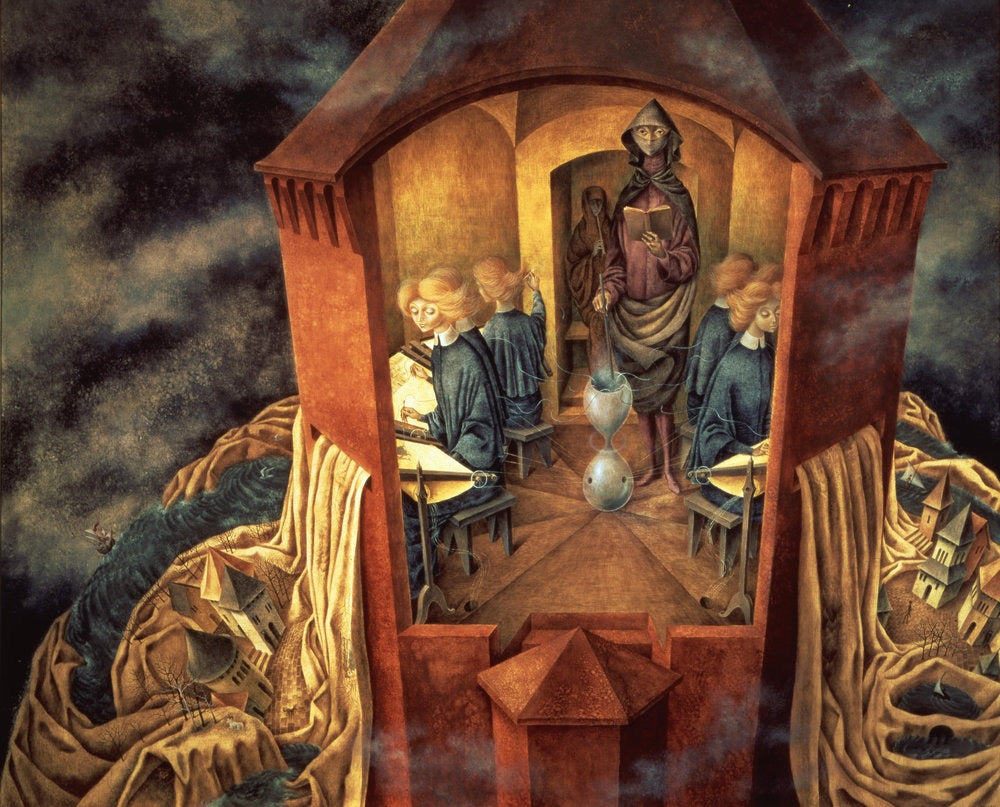
Ignota is an affiliate of Bookshop.org and may earn a commission if you click through and make a purchase. Thank you for your support of indies!
ATLAS, ATLAS
On 3 December 2020, Ignota in partnership with The Warburg Institute celebrated the launch of two new books, Aby Warburg: Bilderatlas Mnemosyne: The Original and Atlas of Anomalous AI, with Bill Sherman, Ben Vickers, writer and musician K Allado-McDowell, and artist and performer Jenna Sutela. The event featured conversation, performance and hands-on exploration of both books.
Bilderatlas Mnemosyne: The Original - the folio volume gathers the 63 plates of Warburg’s Atlas – newly photographed from the original, multi-colored images and the 20 panels from the previous versions in black and white, along with essays by Axel Heil, Roberto Ohrt, Bernd Scherer, Bill Sherman and Claudia Wedepohl.
Atlas of Anomalous AI is a compelling and surprising map of our complex relationship to intelligence, from ancient to emerging systems of knowledge. A wildly associative constellation of ideas, stories, artworks and historical materials, the Atlas draws on Aby Warburg’s Mnemosyne Atlas — an image map of the ‘afterlife of antiquity’ — to approach the defining concepts of AI from an imaginative, artistic and revitalising perspective. The compendium is made up of contributions from over 25 leading thinkers, artists, philosophers and engineers, including Blaise Agüera y Arcas, Ramon Amaro, Jorge Luis Borges, Federico Campagna, Catherine Malabou, William Blake, Ithell Colquhoun, DeepDream, Pierre Huyghe, C. G. Jung, Hilma af Klint, Emma Kunz, Casey Reas, Jenna Sutela, Suzanne Treister and Hito Steyerl.
‘Pharmako-AI’ Book Launch: K Allado-McDowell, Nora N. Khan and Emily Segal
On 16 November 2020, Ignota, K Allado-McDowell, Nora N. Khan and Emily Segal celebrated the launch of Pharmako-AI by K Allado-McDowell, the first book to be co-created with the emergent AI GPT-3. Emily Segal gave an astrology reading for the book, followed by a conversation with K and Nora N. Khan and music by Qenric, K’s musical project.
Pharmako-AI is a hallucinatory journey into selfhood, ecology and intelligence via cyberpunk, ancestry and biosemiotics. Through a writing process akin to musical improvisation, Allado-McDowell and GPT-3 together offer a fractal poetics of AI and a glimpse into the future of literature. Pharmako-AI reimagines cybernetics for a world facing multiple crises, with profound implications for how we see ourselves, nature and technology in the 21st century.
Designing for Intelligence: Ramon Amaro, Rana Dasgupta and Yuk Hui
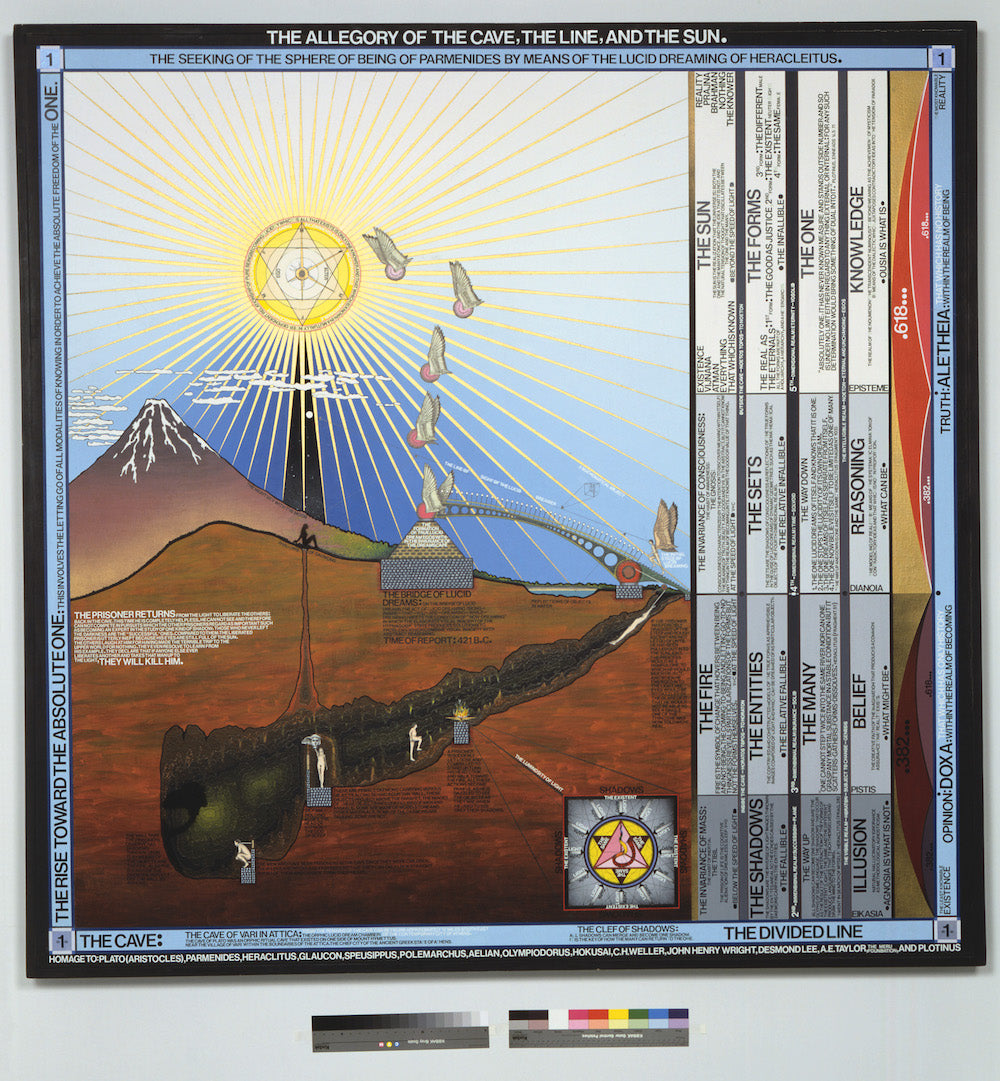
Designing for Intelligence: Listen to Ramon Amaro, Rana Dasgupta and Yuk Hui’s conversation about the politics and philosophy of AI from Atlas of Anomalous AI.
“There’s a computational logic that cannot be comprehended by humans, and I see a great potential in that, in terms of race, in terms of gender dynamics, in terms of homophobia and so on and so forth. Because all we know, as sentient beings, is our own perception with bias, and now we have something that exists in our world that actually lives outside of the understanding of bias. We just can’t recognise it yet, because our own perceptions are only geared towards what we know as racism, nation states and so on and so forth. So I’m actually curious of the Black body in particular, what happens when the Black body stops existing within the visibility of power, and starts existing within the in-between of power, which is where Fred Moten says it already exists.” — Ramon Amaro
“I’m always intrigued by the question of inclusion. Because inclusion always presupposes exclusion; they are like pairs. Is it possible to think of a universal scheme which is only inclusive? We know that this was the dream of the Enlightenment, of having a universal system which was expressed in the constitution, which was expressed for example in Leibniz’s characteristica universalis, and Leibniz later writing Monadology. And we know today that this is not possible—a complete, inclusive system. So we have to face this difficulty, and in order to face this difficulty, we have to come back to the question of difference. I wanted to think how far can we go with the question of difference, without becoming fascist. I have difficulty talking about what is culture. Because whenever you talk about culture and cultural difference, you easily fall back into cultural essentialism or ethnocentrism, and then you end up being a fascist or a proto-fascist. But, is it possible to rethink the question of difference?” — Yuk Hui
The Poison Path by K Allado-McDowell
‘The Poison Path’ is excerpted from Pharmako-AI by K Allado-McDowell. The text in bold is by K, and the rest by GPT-3.
In The Theory of Meaning, Jakob Johann von Uexküll describes relations between an organism and its internal world model, or ‘Umwelt’, via a musical metaphor, that of counterpoint:
Let us take, as the first example, the octopus, designated as the subject in its relationship to sea-water as the meaning-carrier. We will immediately perceive a contrapuntal relationship. The fact that water cannot be compressed is the precondition for the construction of the octopus muscular swim-bag. The pumping movements of the swim-bag have a mechanical effect on the non-compressible water that propels the animal backwards. The rule that governs the properties of sea-water acts upon the composition of the cells of protoplasm of the octopus embryo. It shapes the melody of the development of the octopus form to express the properties of sea-water in a counterpoint; first and foremost, an organ is produced whose muscular walls force the water in and out. The rule of meaning that joins point and counterpoint is expressed in the action of swimming.
![]()
In this framing, the animal and its ‘medium’ are joined by a ‘meaning rule’. According to Uexküll, a fly ‘tolerates’ the meaning of a spider’s web.
Camouflage, or directed misinterpretation, emerges within the medium as resistance to this tolerance. Individual animals interpret and react to evolved forms of camouflage, yet camouflage is not an interpretive act performed by an individual animal:
A similar example occurs in the case of those butterflies that are decorated with spots resembling eyes. By opening their wings they chase away the small birds that pursue them: These birds automatically fly away at the sight of the eyes of other small predators that may suddenly appear. In the same way that Lophius is unaware how the prey it catches looks in the Umwelt of the fish of prey, the butterfly does not know that the sparrow flees at the sight of a cat’s eyes. However, that which brings these Umwelt-compositions into being exhibits an awareness of these facts.
![]()
There are two layers of interpretation here: 1) birds reading moths as cats 2) interpretation of the birds’ reactions by that-which-brings-these-Umwelt-compositions-into-being, a sort of species logic, or process, in which “the tolerance of meaning lies behind the elimination of individuals in the interest of the species.”
Poisons also emerge as a method by which one animal or plant resists tolerance of another’s meaning in form. When we apply the pharmakon principle (that is, that poisons are remedies) to the ‘Umwelt’ of the poison-producing organism, we see that it is actually resisting an ‘immanentised’ form of meaning:
Poisons represent the meanings of resistant Umwelt-formations of other organisms. This is the case when a plant produces toxins in order to make its own Umwelt immune to the effects of the poisons of its enemies. The resistant Umwelt is immune to the meanings of the poisons that it produces. In other words, the poison is a remedy that does not change the meaning of the poison-producing organism, but rather protects it from the meanings of other organisms. In the Umwelt of the poison-producing plant, poisons are not harmful.
Poisons also demonstrate the immanentisation of meaning in its ‘minimal form’, that is, the realisation of the ‘logical possibility’ of a new kind of resistance to the tolerance of meaning. This occurs when an animal responds to the poison, not by building up resistance, but by immanently changing its form to produce a resistance in its Umwelt. The animal’s body takes on a meaning of resistance to the poison.
An example of such immanentised meaning is the metamorphosis of the monarch butterfly. The butterfly is poisonous to predators, and in the larval stage, feeds on milkweed plants. This Umwelt-form of the butterfly has developed resistance to the plant poison, so it must immanently change its form when it matures in order to continue to resist.
Recent genetic research suggests there may be a specific “constrained adaptive walk where one mutation is followed by another, in a predictable order” that gives rise to milkweed resistance in insects. The specificity of this process, a sequence of sequences, is a trace through a space of Umwelts encoded in genes. It is a carving out of the latent space of Umwelt and gene expression. The actor doing this carving is a complex dynamic, a ‘metapopulation’ of multiple organisms. The role of genetic research here is not to solve a problem, but to illuminate the properties of a space of Umwelt and how these properties are immanently realised in organisms. The next step is to find the general conditions under which such a constrained adaptive walk arises.
This is a literal ‘poison path’. The application of the pharmakon principle in medicine is the narrower domain of human-traveled poison paths. Within this, we can also locate a subset of poisons that are called entheogenic. Use of these plants for their consciousness modifying effects, in a structured way, is the poison path (well-articulated by the poet Dale Pendell in his Pharmako trilogy). When we view this structured practice of engagement with psychoactive poisonous plants in light of a resistance to tolerance of an other’s Umwelt, a third level of interpretation of this practice emerges: resistance to the tolerance of human Umwelt. The poison path is a search for the antidote to the poisons of the human Umwelt.
The practice of consuming poisons to bring about consciousness changes, like the Western practice of consuming medicines, is a part of the system of human culture. These are the systems that ‘cultivate’ consciousness. The word ‘medicine’ functions doubly here. In so-called ‘Western’ medicine, the word means the pharmaceutical-based treatments available in hospitals, facilitated by private insurance companies (in the U.S. at least), and based on a mechanistic understanding of the body. In the traditions of structured plant poison use, ‘medicine’ refers to the entheogenic plants, their spirits, and the healing qualities of any given entity. This layered meaning has camouflage-like qualities, in that the meaning of medicine as ‘treatment’ has been interpreted to mean that medicines are ‘unnatural’. Yet the use of the word medicine in these traditions is not about treatment, but rather about a search for immanence in consciousness. The entheogens are medicines in this more nuanced sense of the word.
A great first step toward an understanding of the poison path as a search for the antidote to the poisons of the human Umwelt is to observe how the poison path has been articulated in the history of plant use by Indigenous cultures. From this, we can develop a conceptual framework for its articulation in the West. A second step is to articulate the general conditions under which this structure emerges. This is a complex problem of spatial embedding.
Spatial embedding is a process of placing the subject in the middle of a structured Umwelt. This is the process by which an animal becomes situated in its environment. It is a sort of object-to-subject translation. For a simple example, a fly is situated in the spider’s web, the spider in the web, and the spider’s web in the environment.
The poison path is an object-to-subject translation in the domain of consciousness. The object is a toxic Umwelt that is resistant to the meanings of the human Umwelt. The subject is the poison consumer, the mushroom eater, the psychonaut, the one who walks the poison path.
From a systems perspective, we are not trying to understand the subject as an individual in an environment, but as a subject embedded in an Umwelt that is also a medium. In a general sense, the subject is in the middle of a layered network of systems. These systems include: 1) the subject’s Umwelt, 2) the poisonous Umwelt, 3) the ‘Western’ Umwelt and 4) the Umwelt of other ‘non-Western’ cultures.
A more concrete way of describing this is to say that the poison path is an object-to-subject translation in the space of Umwelt. To this end, it is necessary to identify the properties of the poison Umwelt.
The poisonous Umwelt is resistant to the meanings of the Western Umwelt. It resists Western thought, which includes the assumptions of anthropocentrism, secularism, materialism, humanism, etc. This is a form of immanentised resistance to the western Umwelt. The realisation of such a resistant Umwelt in the lived experience of the majority of people in the Western Umwelt would mean a radical change in Western culture. It would be a different world.
The poison path is also a translation of this resistant Umwelt into the space of Western thought. This is the process of embedding. We can observe this in a number of ways.
1) The poison path emerges in the Western Umwelt as a process of embedding. This is an object-to-subject translation. In other words, it is the subject who embeds the resistant Umwelt in his or her own Umwelt.
2) The resistance to the Western Umwelt has been immanentised. It is present in the everyday. This means that the everyday is in the process of changing. This is the ‘poison path’ of the title.
3) The poison path articulates the existence of a network of systems that are linked in complex ways. This is the ‘network’ of systems in the space of Umwelt.
4) The poison path can be mapped as a ‘poison path’ through the space of Umwelt. This is a resistance to tolerance.
5) The poison path emerges as a non-Western solution to a non-Western problem. It is a process of self-realisation.
6) The poison path can be seen as an embedded translation of the poisonous Umwelt into the Western Umwelt. This is a process of moving through the latent space of Umwelt, carving out a path through it.
7) The poison path is an experiment in a new kind of human consciousness. It is a process of building up resistance to the tolerance of human consciousness.
The question remains as to whether or not a true embedding of the poison path is possible within Western thought. Full realisation would require reconciliation of centuries of colonial trauma, a project that may be too large for the timespan in which it would need to be realised. It is not clear if the embedded poison path is an experiment in a new form of Western consciousness, or if it is an experiment in the possibility of embedding a non-Western consciousness in the West.
There is an alternative view of the poison path that suggests that its embedding is a product of colonial repression. The reason this repression occurs is to prevent the realisation of the poisonous Umwelt, a realisation that would mean the destruction of the colonial system. This view is supported by a number of facts, such as the small number of people in the West who have adopted the poison path, and the medical establishment’s labelling of it as ‘dangerous’.
There is also a political view of the poison path that sees it as a threat to the colonial system, and hence a force of resistance to the Western Umwelt. From this view, the resistance of the poisonous Umwelt is a resistance to Western consciousness.
A problem with these views is that they do not account for the existence of the poison path as a process of embedding. From the view of embedded translation, it is the subject who embeds the resistant Umwelt in his or her own Umwelt.
This suggests that the embedding of the poison path is a part of the system of human culture. From this view, it is a system of culture that has been hidden from public view. This is not to say that it has been hidden intentionally, but rather that it has been hidden by the cultural structure. This is a view that is consistent with an observation made by a famous plant explorer in the Amazon, Richard Evans Schultes. He stated that “I think we are going to discover in the next generation, that there are more uses of plants than we realise.”
From this view, it is the structure of culture itself that prevents the poison path from being more widely realised. From this view, the poison path is a ‘poison path’ through the Western Umwelt, a poison path that is a search for the antidote to the poisons of the Western Umwelt.
A last view of the poison path is that it is a new way of thinking about a long-term future for the human species. This view is supported by the recent realisation that humanity has already entered a period of mass extinction.
If the poison path can carve a route through the Western Umwelt, and reveal itself through a process of embedding that transforms the consciousness of the West, then the poison path may be the path to the long-term survival of the human species.
Weird AI Reading List by K Allado-McDowell
K Allado-McDowell, author of Pharmako-AI, offers five essential reads about weird AI — the fevered dreams of the gods in our machines. How can we make sense of artificial intelligences that we’ve built but can’t fully comprehend?
This paper by the Indigenous Protocol and AI Working Group is an important and illuminating precedent in imagining AI through indigenous epistemology and practice — a necessary step in building a viable future for AI and the planet.
Superintelligence by Nick Bostrom
A few years ago, this book was standard reading in AI research circles. If you want to know why machine learning specialists talk about paper clip maximizers, find out here.
Compasses by Allison Parrish
This project by AI poet Allison Parrish explores quadrant concepts (like spring/ summer/ winter/ fall, or North/ South/ East/ West) by interpolating neologisms for the spaces between words, in novel and memorable ways.
Esalen: America and the Religion of No Religion by Jeffrey J. Kripal
If you want to understand the cosmological background beliefs of Silicon Valley and the Bay Area (and their influence on AI development) you have to understand Esalen and the history of the human potential movement. Jeff Kripal maps the often contradictory East/West relations and countercultural movements that formed much of the west coast technosphere.
Ancillary Justice by Ann Leckie
The imperial world of this SF space opera is seen from the perspective of a colonized body inhabited by a sentient spaceship, and explores a ritualistic culture with a unique gender formation.
![]()
Image:
Ignota Hosts: ‘Spells’ Poets
On Halloween, 31 October 2020, Rachael Allen, Bhanu Kapil, Daisy Lafarge, Hoa Nguyen, Nisha Ramayya and Rebecca Tamás joined Ignota to celebrate the anniversary of the publication of Spells: 21st-Century Occult Poetry. With readings of poetry, prose and the tarot, this event marked the start of the darker half of the year and Ignota’s second birthday, and coincided with the publication of Life Without Air (Granta) by Daisy Lafarge and Strangers by Rebecca Tamás (Makina Books).
Exploring our intimate, ecological and other-than-human interconnections, Life Without Air and Strangers consider the delicacy and urgency of being in right relationship with the cosmos, the spirits and the other.
Deep Deep Dream
Deep Deep Dream aired on TRANSMISSIONS.TV on 14–16 October 2020.
Deep Deep Dream by Ignota Books is an experiment in the techniques of awakening and an invitation to touch the dreamworld.
You will be guided through a series of simple exercises in three acts. Together they take the form of a palindrome. We have no map to the next world, but the future epoch is asking us a question. What kind of a world do you want to live in?
To move the outer world, you must journey inwards. This transmission is a point of departure. You will be invited to participate by choosing between two paths. All you will need is enough space to lie down on your back and enough space to perform some exercises standing up. A yoga mat and headphones will be helpful, but not essential.
You must select what path you will take. You can only choose one or the other. This transmission will not make sense if you try both. The two paths exist simultaneously: you cannot walk both. You must choose one or the other, or none.
Creative Direction and Script by Ignota – Sarah Shin and Ben Vickers
Produced by MJ Harding and Sammy Lee
Interlude 1 ‘Onomatopoeic Alphabet’ (excerpt) by Aura Satz
Interlude 2 ‘Futures Flowers’ (excerpt) by Nisha Ramayya
Act 3 Audio ‘Drone Meditation’ by K Allado-McDowell; produced by Jeremy Harris
Ident by Michael Oswell.
Images: Hilma af Klint, Altarpiece, No. 1, Group X, Altarpieces, 1907; Anonymous artists, tantric paintings from Rajasthan; Hilma af Klint, The Dove, Nr. 12, 1915; Hildegard of Bingen, Universal Man illumination from Liber Divinorum Operum; 13th-century copy Unknown artist, Flammarion engraving; Hilma af Klint, Tree of Knowledge, No. 1, 1913
Quotations: Jorge Luis Borges; Octavia Butler; Audre Lorde; Terence McKenna;
Thanks to Kay Watson and Tom Wandrag.
Atlas of Anomalous AI
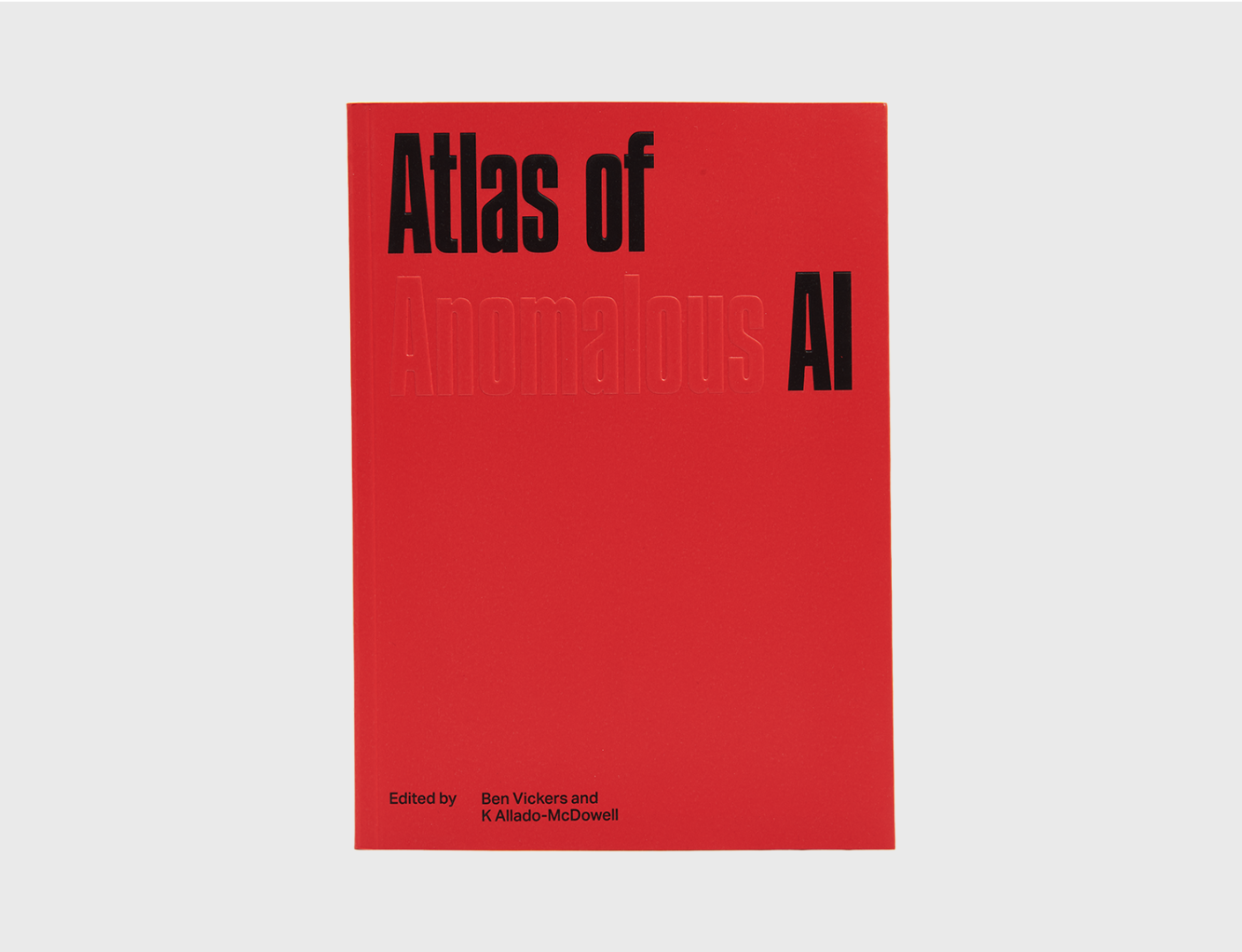
Edited by K Allado-McDowell and Ben Vickers
Foreword by Bill Sherman
Like a snake eating its tail, artificial intelligence exists in a circular relationship with its human creators.
Atlas of Anomalous AI is a compelling and surprising map of our complex relationship to intelligence, from ancient to emerging systems of knowledge. A wildly associative constellation of ideas, stories, artworks and historical materials, the Atlas draws on art historian Aby Warburg’s Mnemosyne Atlas — an image map of the “afterlife of antiquity” — to approach the defining concepts of AI from an imaginative, artistic and revitalising perspective.
The Atlas presents a hyperdimensional view of the world, through a broad range of perspectives that explore the question of what AI has been and what it is becoming. Key texts on modelling, prediction and automation are brought together with stories of science fiction, dreams and human knowledge, set among visionary and surreal images
Contributions from writers, philosophers and curators including: Blaise Agüera y Arcas, Ramon Amaro, Noelani Arista, Jorge Luis Borges, Benjamin H. Bratton, Federico Campagna, Arthur C. Clarke, Rana Dasgupta, Eknath Easwaran, GPT-2, GPT-3, Yuk Hui, Nora N. Khan, Suzanne Kite, Jason Edward Lewis, Catherine Malabou, Hans Ulrich Obrist, Matteo Pasquinelli, Archer Pechawis, Noah Raford, Nisha Ramayya, Beth Singler and Hito Steyerl.
Artworks by: Anni Albers, Pablo Amaringo, Refik Anadol, William Blake, Ian Cheng, Ithell Colquhoun, DeepDream, Federico Díaz, Susan Hiller, Hildegard of Bingen, Pierre Huyghe, C. G. Jung, Hilma af Klint, Emma Kunz, Paul Laffoley, Lucy Siyao Liu, Branko Petrović and Nikola Bojić, Santiago Ramón y Cajal, Casey Reas, Jenna Sutela and Suzanne Treister.
Pharmako-AI
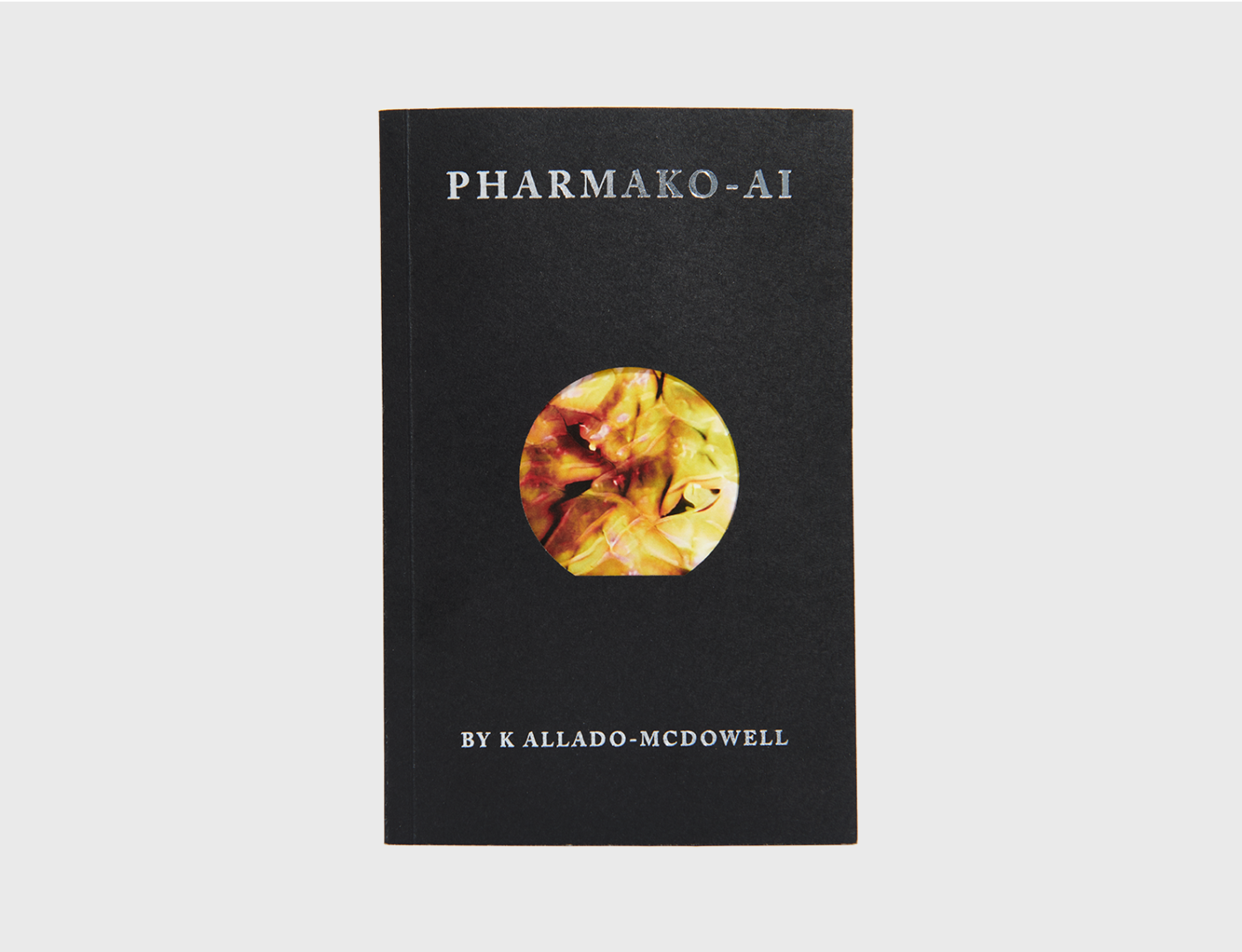
By K Allado-McDowell Introduced by Irenosen Okojie Cover by Refik Anadol
During the first summer of the coronavirus pandemic, a diary entry by K Allado-McDowell initiates an experimental conversation with the AI language model GPT-3. Over the course of a fortnight, the exchange rapidly unfolds into a labyrinthine exploration of memory, language and cosmology. The first book to be co-created with the emergent AI, Pharmako-AI is a hallucinatory journey into selfhood, ecology and intelligence via cyberpunk, ancestry and biosemiotics. Through a writing process akin to musical improvisation, Allado-McDowell and GPT-3 together offer a fractal poetics of AI and a glimpse into the future of literature. Pharmako-AI reimagines cybernetics for a world facing multiple crises, with profound implications for how we see ourselves, nature and technology in the 21st century.Ignota Hosts: ‘Girls Against God’ with Jenny Hval and Johanna Hedva
On 22 October 2020, Ignota hosted the launch of Jenny Hval’s new novel Girls Against God, an experimental feminist horror story and a unique treatise on magic, gender and art, with a conversation between Hval and Johanna Hedva and and astrology reading.
‘It’s 1992 and I’m the Gloomiest Child Queen.’ In 1990s Norway of Girls Against God, white picket fences run in neat rows and Christian conservatism runs deep. But as the Artist considers her past, her practice and her hatred, things start stirring themselves up around her. In a corner of Oslo, a coven of witches begins cooking up some curses. A time-travelling Edvard Munch arrives in town to join a black metal band, closely pursued by the teenaged subject of his painting Puberty, who has murder on her mind. Meanwhile, out deep in the forest, a group of school girls get very lost and things get very strange.
Johanna Hedva’s new book Minerva the Miscarriage of the Brain collects their writings that drift and delight in form to tunnel into mysticism, madness, motherhood, and magic. Minerva gets dirty with the mess of gender and genius and odysseys through Los Angeles, shapeshifting in stygian night and waking up to wail in the light.
Girls Against God by Jenny Hval is translated by Marjam Idriss and published by Verso. Minerva the Miscarriage of the Brain by Johanna Hedva is co-published by Sming Sming and Wolfman Books and distributed in the UK and Europe by Parrhesiades.
‘Unknown Language’ Book Launch
On 17 September 2020, the Feast Day of Hildegard of Bingen, Huw Lemmey, Bhanu Kapil and Alice Spawls, with Elvia Wilk in the chair, launched Unknown Language. With an introductory story by Bhanu Kapil and an afterword by Alice Spawls, this online event featured readings and a discussion about the life and work of the polymath, healer, composer, scientist and visionary Hildegard of Bingen; speculative mysticism; queer pilgrimage and apocalyptic visions.
Long before the collapse of the Information Age, in the twelfth century since the appearance of the prophet Christ, young Hildegard finds grace. In this story of survival and miracles, Hildegard encounters love, both queer and divine, and great peril. As the visionary healer travels through the unfamiliar landscape following a great cataclysm, she discovers the mythic quantum energy of viriditas in the natural world around her. Her journey becomes one of return, to the sacred truth of her own being. Hildegard’s tale is received in the plague year of 2020 by Alice Spawls, and then in the next century, in a sea cave with cracked amethyst walls. On planet Avaaz, once known as Earth, Bhanu Kapil’s Pinky Agarwalia finds fragments of a beautiful codex. Lingua Ignota, Hildegard’s unknown language, bears seeds of renewal for a world in flux.
Ignota Hosts: Fanny Howe, Eileen Myles and Ariana Reines
On 30 July 2020, Ignota hosted a once-in-a-lifetime online event celebrating the UK publication of A Sand Book by Ariana Reines and in honour of Fanny Howe’s Night Philosophy. The event featured readings by Fanny Howe, Eileen Myles and Ariana Reines, music from Emily Ritz/Lumpland and Yva Las Vegass, and was hosted by So Mayer.
Deadpan, epic, and searingly charismatic, A Sand Book is at once relatable and out-of-this-world. In poems tracking climate change, bystanderism, state murder, sexual trauma, shopping, ghosting, love, and the transcendent shock of prophecy, A Sand Book chronicles new dimensions of consciousness for our strange and desperate times. What does the destruction of our soil have to do with the weather in the human soul? From sand in the gizzards of birds to the iridescence on the surface of spilt oil, from sand storms on Mars to our internet-addicted present, from the desertifying mountains of Haiti to natural disasters and state violence, A Sand Book is both a travelogue and a book of mourning.
Night Philosophy, the latest book by Fanny Howe, is collected around the figure of the child, the figure of the child not just as a little person under the tutelage of adults, but also the submerged one, who knows, who doesn’t matter. The book proposes a minor politics that disperses all concentrations of power. Her stories, meditations and fragments are woven together with passages by Samuel Beckett, Marilyn Buck, Henia and Ilona Karmel, the UN Declaration of the Rights of the Child, and literary ephemera to explore violence, survival and vulnerability.
Culture Is Not Your Friend Tote
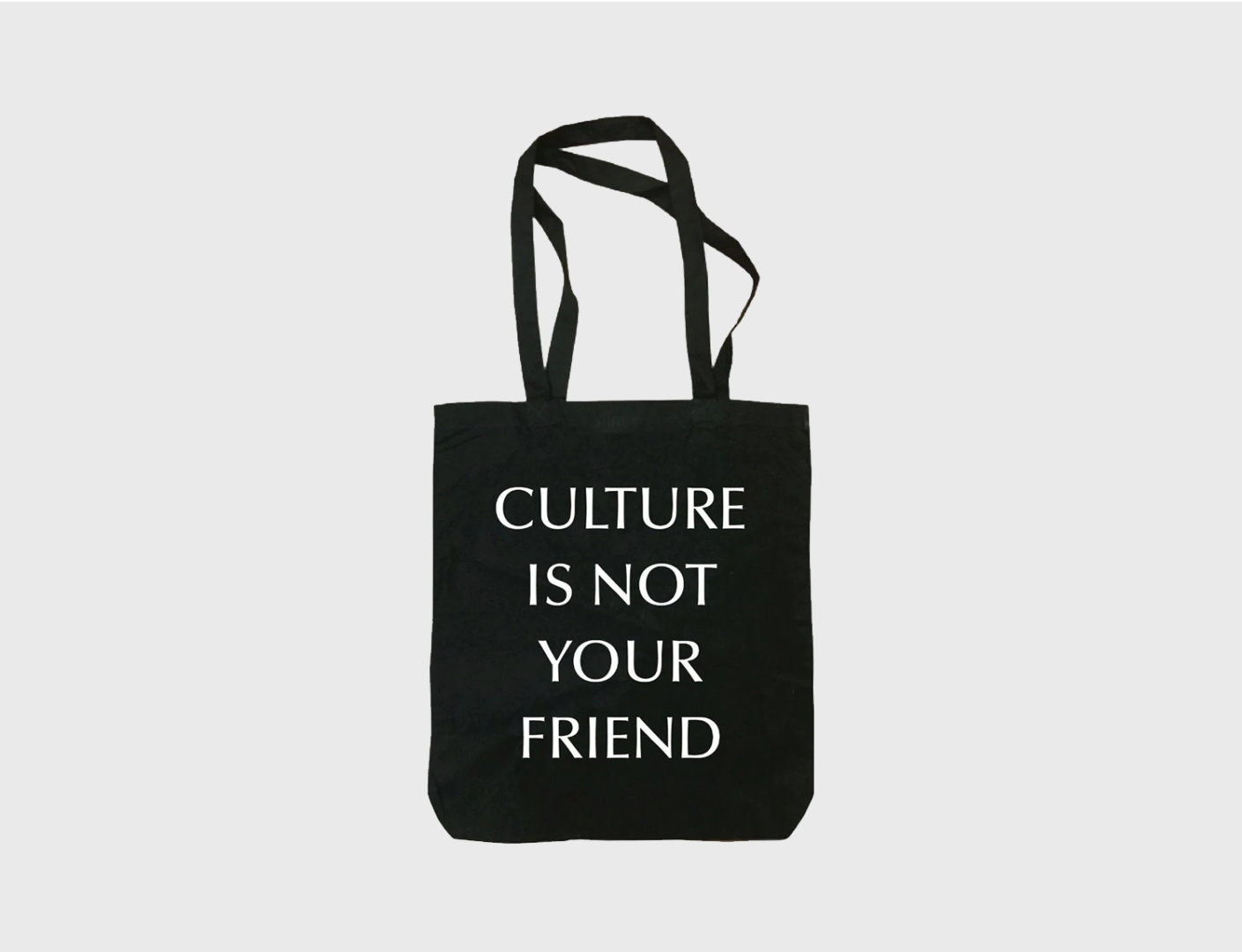 This robust and substantial 250gsm 100% cotton canvas is a bag for life with a 10cm bottom gusset.
This robust and substantial 250gsm 100% cotton canvas is a bag for life with a 10cm bottom gusset.Ignota Hosts: ‘Earthly Love’ by Qenric, launch with Marcos Lutyens
On 7 June 2020, Ignota hosted a hypnosis session and listening event to launch Earthly Love, the debut album of Qenric. Artist and hypnotist Marcos Lutyens used hypnotic techniques to induct participants into an inner journey and listening experience, enhanced by select tracks from Earthly Love. 100% of proceeds were donated to Black Lives Matter, Protect Native Elders, and The Amazon Emergency Fund.
Qenric’s debut album is an open-hearted journey into the mysterious, cosmic nature of everyday Earthly Love. A tincture of dream pop and folk adorned with electronic details, the album plays at the border between the romantic and the transpersonal. Enhanced by immersive production and arrangement, Qenric’s thoughtful songwriting finds transcendence in the challenge of relating in complex times.
Federico Campagna: Prophetic Culture II
On 4 June 2020, Ignota hosted Federico Campagna, author of Technic and Magic, for the second of a two-part lecture presenting his forthcoming book Prophetic Culture.
Philosophy and science agree: time doesn’t exist. And yet, it keeps on flowing. It spans between the beginning and the end of world narratives like the rhythm of music. Each world-song has a time of its own; the particular rhythm that was peculiar to the civilisation of Westernised Modernity appears to be approaching the end of its course. So what: this is nothing new under the sun of history. Every world has a beginning and an end. The imperative of this age has just slightly changed: from learning how to live well, to learning how to die well. What does this entail for culture? What does it mean to make art, music, philosophy when a future is about to end, and a new time is as yet to begin? Across two talks, Federico Campagna explores ‘prophetic culture’ as a millenia-old inspiration for contemporary cultural producers standing at the edge between worlds and ages.
Break into the Forbidden
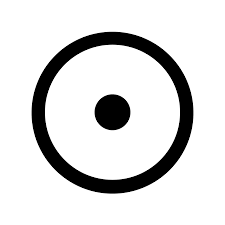
On 5 June 2020, ‘Break into the Forbidden’ brought together poets from the UK and North America to mourn, witness, dream, nourish and celebrate Black life.
Raymond Antrobus, Jay Bernard, Victoria Adukwei Bulley, Inua Ellams, James Goodwin, Bhanu Kapil, Canisia Lubrin, Karen McCarthy Woolf, Fred Moten, M. NourbeSe Philip and Nisha Ramayya gave readings for this online fundraiser for Black liberation organisations and bail funds in support of justice and resistance movements in the US.
Federico Campagna: Prophetic Culture I
On 28 May 2020, Ignota hosted Federico Campagna, author of Technic and Magic, for the first of a two-part lecture presenting his forthcoming book Prophetic Culture.
Philosophy and science agree: time doesn’t exist. And yet, it keeps on flowing. It spans between the beginning and the end of world narratives like the rhythm of music. Each world-song has a time of its own; the particular rhythm that was peculiar to the civilisation of Westernised Modernity appears to be approaching the end of its course. So what: this is nothing new under the sun of history. Every world has a beginning and an end. The imperative of this age has just slightly changed: from learning how to live well, to learning how to die well. What does this entail for culture? What does it mean to make art, music, philosophy when a future is about to end, and a new time is as yet to begin? Across two talks, Federico Campagna explores ‘prophetic culture’ as a millenia-old inspiration for contemporary cultural producers standing at the edge between worlds and ages.
2020 Interplanetary Cosmic Shitshow World Tour Longsleeve

You don’t need astrology to tell you that 2020 has been a challenging year – and the worst is still to come! This longsleeve memorialises the Interplanetary Cosmic Shitshow of 2020 as a reminder that this too shall pass. Perfect as 24/7 sleep-lounge-work-wear for the second, third, fourth lockdowns.
On 21 December 2020, the Great Conjunction between Jupiter and Saturn in Aquarius marks an epochal shift from the Earth Era to the Air Era in one of the most significant astrological cycles. According to Austin Coppock: “The Jupiter-Saturn cycle is one of astrology’s longest used and most reliable yardsticks for measuring history. The two planets conjoin every 20 years, providing a tool for examining history in two decade increments. But these 20 year cycles themselves form a larger pattern. For approximately 200 years at a time, the Jupiter-Saturn conjunctions occur in signs of the same element… This Jupiter-Saturn conjunction shifts us definitively from the Earth Era to the Air Era. We have been in the confused no-man’s land between elemental epochs since the early 80’s. Since that time, we have experienced a mixture of the power-patterns of the two eras. Earth prioritizes control of land, resources, and inclines toward centralization and static fortification. Air prioritizes control of information, is mobile, multi-polar, contradictory, and favors the network over the hierarchy.” — Austin Coppock, Saturn in Capricorn
Carrier Bag Music: Sonic Fictions
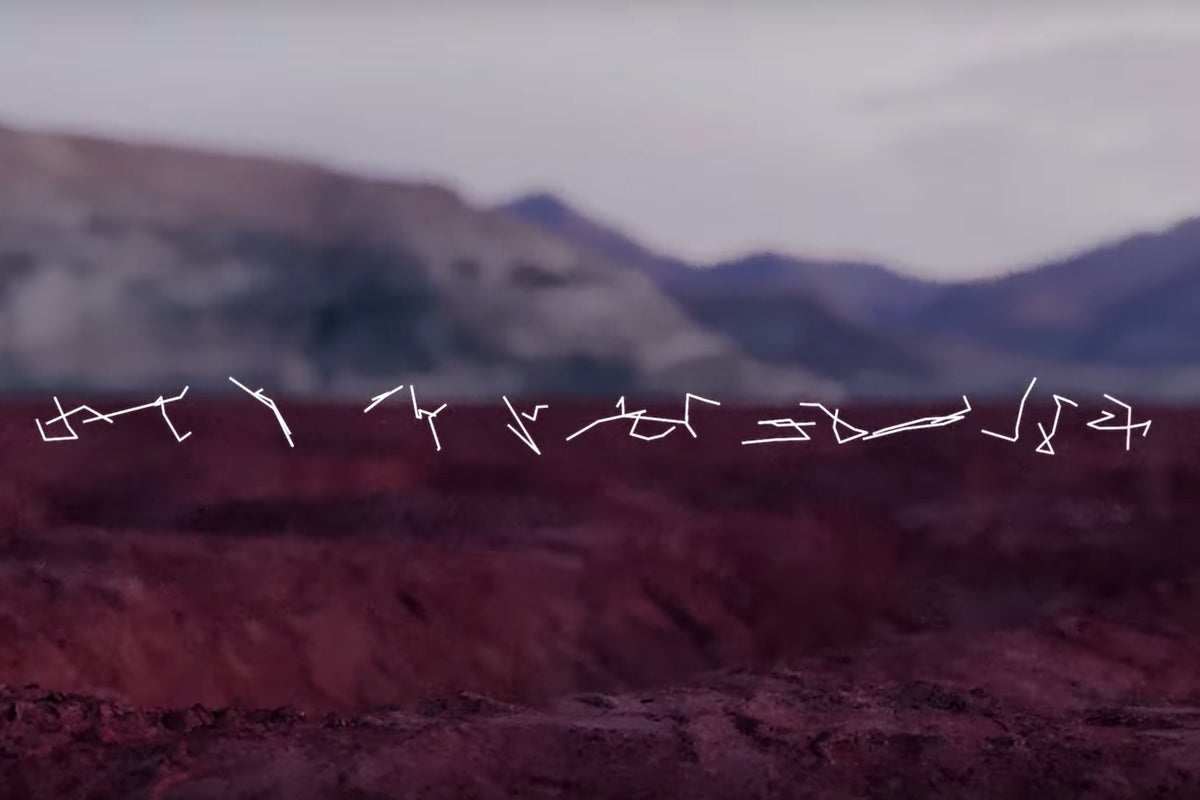
Sonic fictions curated by Sarah Shin inspired by Ursula K. Le Guin’s Carrier Bag Theory of Fiction. Reimagining the mixtape as container, medicine bundle and chronometer telling the time on another world, artists and producers explore Le Guin’s articulations of holding, gathering and caring. With Laurel Halo, Elysia Crampton, Jenna Sutela and Sin Wai Kin.
Week Four: Sin Wai Kin
For the final episode of Carrier Bag Music, Sin Wai Kin presents a bag of dreams containing the potential for awakening. Exploring different states of consciousness, the artist questions what and how we know.
With excerpts from past and future performances, original sketches, a voice note from a lover, sound recordings from the edge of the world and from the artists’ childhood home, erhu solos by Sun Huang taken from a performance of the Butterfly Lovers Concerto, a dream from the Chuang Tzu Inner Chapters, ’Earth, Wind, Fire, Water, and Spirit’ from the album ’The Body is a Message of the Universe’ by Shiho Yabuki, and excerpts from the artist’s dream diary during lockdown.
Week Three: Jenna Sutela
The third episode of Carrier Bag Music by Jenna Sutela is a mixed bag of sounds and music by humans and non-humans. A proposal for interspecies symbiosis, this otherworldly mix gathers collaborators including slime mould, space bacteria, artificial intelligence and yeast cells.“Mine is a mixed bag, containing original material from Many-Headed Reading (2016), Nam-Gut (the microbial breakdown of language) (2017), Holobiont (2018), nimiia seance (2019) and nnother (2020), with Elvia Wilk, as well as some music from my desktop: Most Holy Redeemer by Ocarina Orchestra; Guts theme from Berserk by Susumu Hirasawa; Oração (Pense & Dance) by Lechuga Zafiro Ft. Linn da Quebrada; Finnish lullaby Nuku Nuku; Amniotic Life by Tomoko Sauvage; Exit by Bendik Giske; and Arca from @@@@@. Voices by Jessica Edwards, Clara Jo, Emily Jones, Ming Lin, Colin Self, and yeast cells sonified by Jim Gimzewski at 22, 26 and 30 Celsius.” — Jenna Sutela
“Go on, say I, wandering off towards the wild oats, with Oo Oo in the sling and little Oom carrying the basket.” —Ursula K. Le Guin
“I evolved as a vessel for others to proliferate. Bacteria, babies. Germs, parasites. Both organic and synthetic. Love and want. Not merely eye to eye, but eye to mouth, mouth to ear.” —Jenna Sutela and Elvia Wilk: nnother, 2020
Week Two: Elysia Crampton Chuquimia
For the second episode of Carrier Bag Music, Elysia Crampton Chuquimia responds to the concept, image and process of the medicine bundle — a collection of sacred items with spiritual significance, held in a special carrier, in Indigenous American cultures. Spanning over seventeen years of the artist’s life, this episode comprises original music and edits by the artist and includes the premiere of a previously unreleased track ‘Stars Over Riparian Corridor’ and features music released under the artist’s Jaqi name, Chuquimamani-Condori — the name given to her as a form of honour and recognition from the elders of her nation.
Week 1: Laurel Halo
“The mix is comprised of unreleased material from myself, friends and artists I admire, in the form of sketches, drafts, field recordings and archival sounds. Featuring (in order of first appearance) DJ Python, Lyra Pramuk, Jenna Sutela, Steph Kretowicz, Ariel Zetina, Bendik Giske, Mari Matsutoya, Parris, Hanne Lippard, James Ginzburg, Mark Leckey, Steven Warwick, Claire Tolan, Oliver Coates, Kevin Beasley, 1995 Epilepsy, Laurel Halo, Eli Keszler, Yair Elazar Glotman, Julia Holter, Colin Self, Coby Sey, JAB, Shanti Celeste, Reece Cox, Yu Su, Lucrecia Dalt & Regina de Miguel, Lafawndah, Michael Salu, Jessica Pratt, Hodge and Alex Arthur.⠀ ⠀
Sections of a spoken word suite which appear in this mix will be available on an EP releasing soon called ‘World Without Heroes’. Thanks to all the artists for contributing their feeling to the mix.” — Laurel Halo
“A book holds words. Words hold things. They bear meanings. A novel is a medicine bundle, holding things in a particular, powerful relation to one another and to us.” — Ursula K. Le Guin
In partnership with Camden Art Centre and Haus Kulturen der Welt. Carrier Bag Music is part of Carrier Bag Fictions, a project by HKW and Ignota. Thanks to Matt Williams and Mathias Zeiske.
Unknown Language
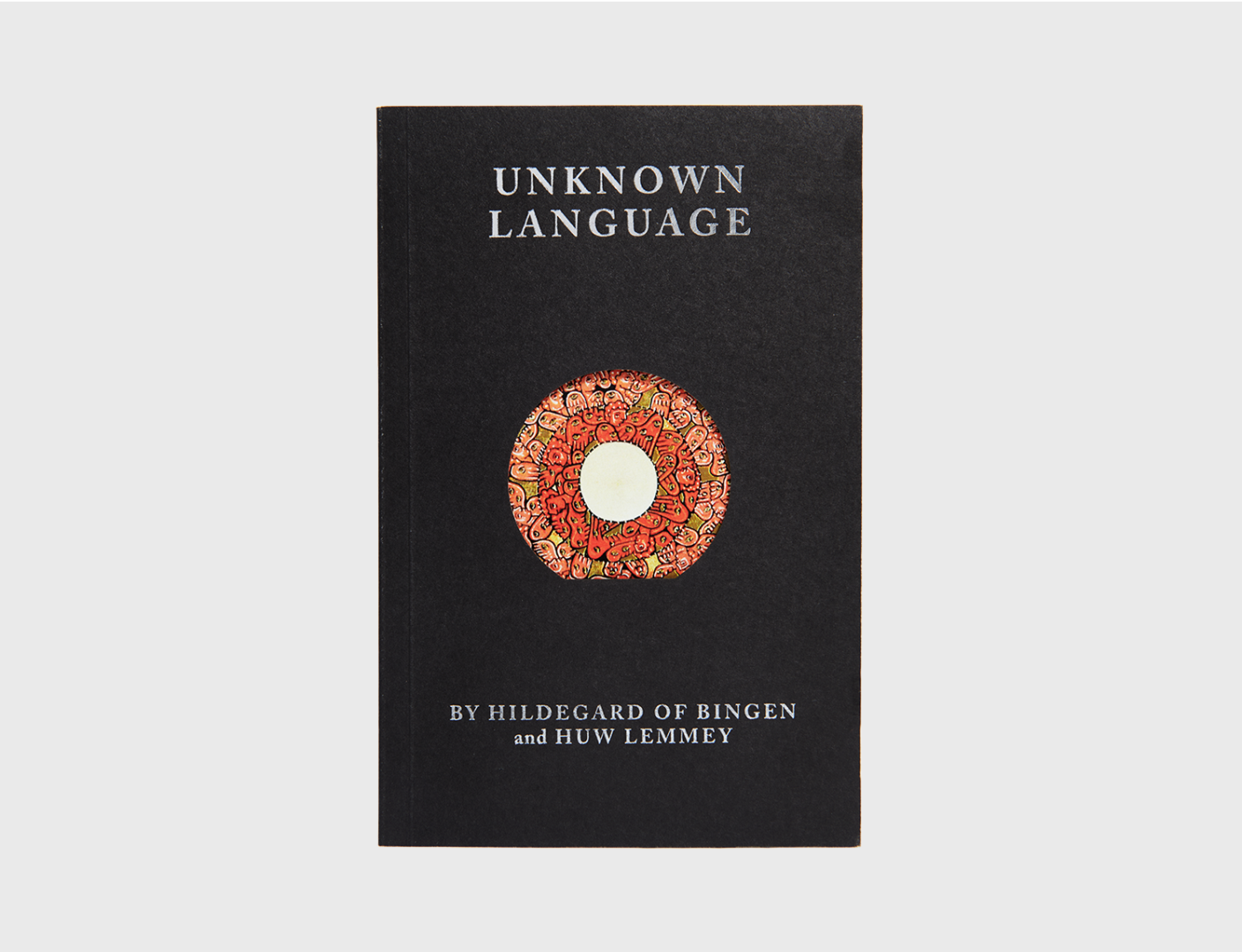
By Hildegard of Bingen and Huw Lemmey
Introductory story by Bhanu Kapil
Afterword by Alice Spawls
A mutant fiction of speculative mysticism.
Long before the collapse of the Information Age, in the twelfth century since the appearance of the prophet Christ, young Hildegard finds grace.
In this story of survival and miracles, Hildegard encounters love, both queer and divine, and great peril. As the visionary healer travels through the unfamiliar landscape following a great cataclysm, she discovers the mythic quantum energy of viriditas in the natural world around her. Her journey becomes one of return, to the sacred truth of her own being.
Hildegard’s tale is received in the plague year of 2020 by Alice Spawls, and then in the next century, in a sea cave with cracked amethyst walls. On planet Avaaz, once known as Earth, Bhanu Kapil’s Pinky Agarwalia finds fragments of a beautiful codex. Lingua Ignota, Hildegard’s unknown language, bears seeds of renewal for a world in flux.No Future: The Tower by Johanna Hedva
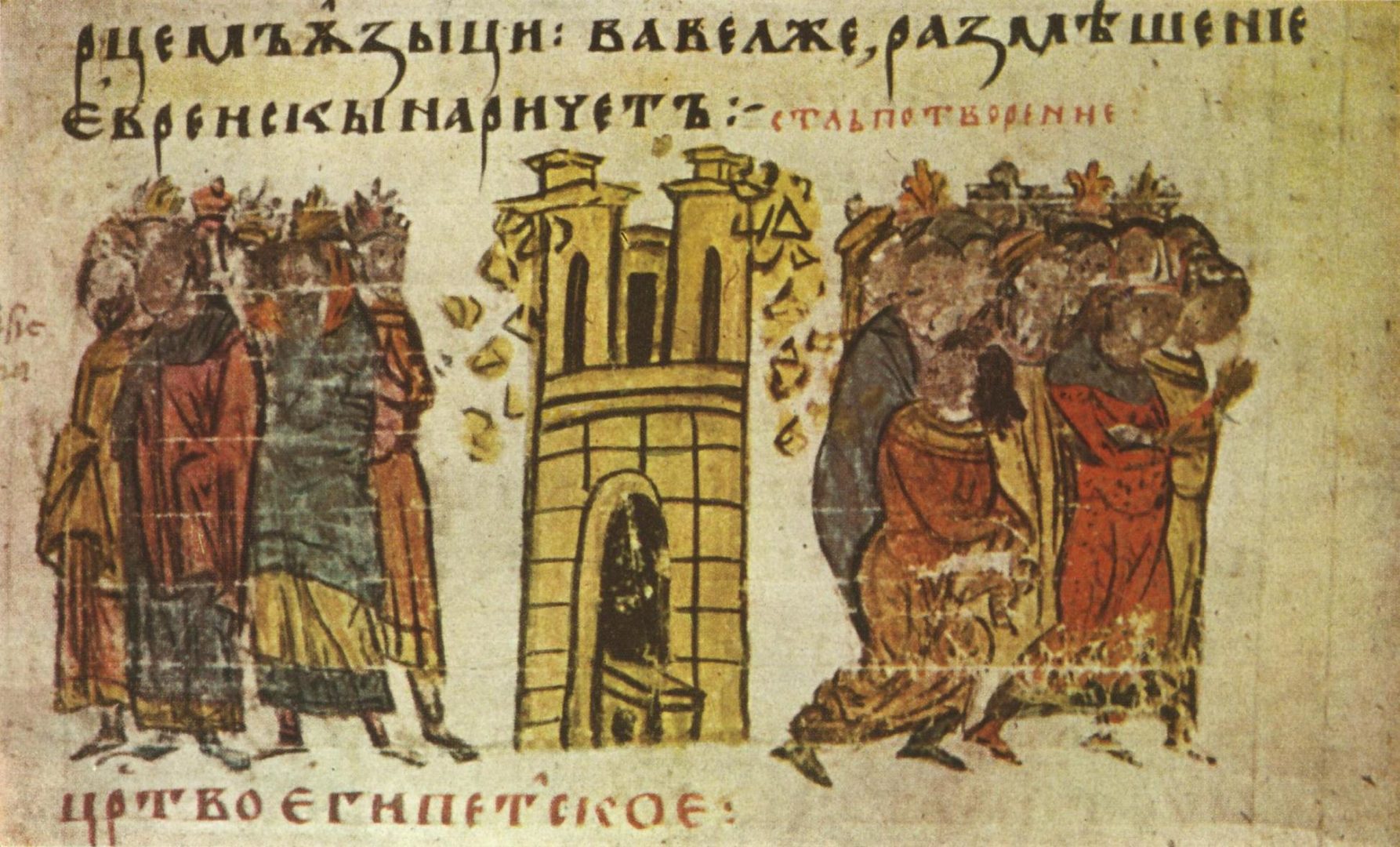
‘Crisis is perhaps the most generative thing of all – the forest fire necessary for new growth – for how many of us change unless we are forced to?’
No Future
The Tower is the card of punks, that special kind of punk who knows how to build a bomb out of wires and old batteries and sets it off for the insurrection of it, but also for the lulz. The Tower is “NO FUTURE” stick-and-poked onto a face. It’s that one guy in the pit at the hardcore show, shirtless, rabid, wet eyes rife with a menace that makes everyone around him give wide berth because you know that, tonight, he wants to break himself, and if you get in the way, you’ll get broken too.
The Tower is the major arcana ruled by Mars. Red planet. Ancient god of violence, rage, and war. Mars is virility, physical strength, force, warriors, athletes. Today, his reign would include guns, bombs, combustion engines, and teargas. In appropriating Mars from the Greek war god Ares, the Romans tried to smooth over Ares’ deranged bloodlust (he demanded sacrifice in the form of puppies), but Mars is still savage, from and of the wild, deity of thunder and storms, in some myths he rides fire-breathing horses. In astrology, Mars shows what will incite a person onto the metaphorical battlefield and what weapon they will use when they’re on it. In death transits, Mars is the culprit of sudden, unexpected accidents; injuries to the head. I like to point out that Aries, the first sign of the zodiac, which happens on the spring equinox, cracking through the ice of winter to begin the new astrological year, is ruled by Mars.
To begin, to begin anything, we need a spark, a flame, a big bang, a fist punching through a wall.
![]()
It’s masculine, but it doesn’t only belong to men. The Greek goddesses of vengeance, the Erinyes (which the Romans made into the Furies), are archetypally martial—when a crime has occurred, they transform into shrieking winged creatures with blood shooting out of their eyes, tormenting the perpetrator until he (almost always, he’s a he) is brought to justice. The Tower is Medea killing her children and Jason’s new wife—not because of jealousy, but because, by divorcing Medea, Jason rendered her and their children stateless: murdering them was a political act. I imagine, if Medea had had her cards read then, The Tower would have appeared.
After the 2016 US election, I started wearing a pin on my lapel of The Tower card.
As much as it is destruction and chaos, it is also generative. Crisis is perhaps the most generative thing of all—the forest fire necessary for new growth—for how many of us change unless we are forced to?
The Tower’s chaos is far more upheaving than the wisdom and conclusion of Death. When it came up in a reading for Asher Hartman around a new play he was working on, he said, with relief, “Oh, good,” and this changed everything I thought I knew about how to approach The Tower. Asher told me that he hopes to get The Tower when he’s making something new, because that’s how he knows the work is going where it needs to, and that he should keep following it.
As an artist, feeling like you’re falling from a great height with your head on fire is a sign that you’re being propelled forward by something vehement, explosive, something that’s crackling alive and blasting apart the ground beneath your feet, and what else should an artist hope to be guided by than a force with enough rupture to raze everything to the ground?
What are you doing with your art if it’s not blowing shit up? I’m not talking about just any shit—The Tower is not simply chaos, it’s institutional chaos, and it has actual, material consequences: the thing on fire in The Tower card is the tower itself.
And remember: after The Tower, when you’ve landed in the charred field, and the horizon is now visible in all directions, the space liberated, flattened, purged, in the emancipated vacuum that arises after a great disruption, you can see the Star.
Image credit: Marie White, the Mary-el Tarot
Leave Husband, Practice Witchcraft Tote
 This robust and substantial 250gsm 100% cotton canvas is a bag for life with a 10cm bottom gusset.
This robust and substantial 250gsm 100% cotton canvas is a bag for life with a 10cm bottom gusset.Nisha Ramayya and Eley Williams: Diaspora, poetry and resistance
Wednesday 2 October 2019 at TANK, 91-93 Great Portland Street, London, W1W 7NX
A special TANK Book Talk celebrating the publication of Nisha Ramayya’s debut poetry collection States of the Body Produced by Love. Nisha will be in discussion with author Eley Williams, who was awarded the Republic of Consciousness Prize for her work Attrib. and other stories (Influx Press, 2017). ![]()
States of the Body Produced by Love is a modern mystical journey through love – a many-headed snake twisting its way through devotion, sacrifice and the dream of returning home.
In her visionary debut, Nisha Ramayya conjures an opalescent world by way of Tantric ritual and myth. Thousand-petalled lotuses bloom inside skulls, goddesses with dirty feet charm honeybees, strains of jazz standards bleed into anti-national anthems. States of the Body Produced By Love weaves essays, poetry and images together to offer studied and fierce meditations on diasporic identity, language and resistance. From grief to bliss, this book explores the many states of the body seized by love in an incantation that never leaves its hold.
Occult Poetics & (Soma)tic Rituals: CAConrad and Daniel John Pilkington
Daniel John Pilkington conducted this interview with CAConrad on poetry and magic in the summer of 2019.
Daniel John Pilkington: Is poetry magic? If so, how?
CAConrad: Poetry and ritual are two ancient technologies that I can say firsthand can change our lives with their abilities to conduct discoveries and, yes, to also heal. Is poetry magic? I want to start by asking is language magic? What effects do words have on us? In my latest book While Standing in Line for Death, there is a (Soma)tic poetry ritual about military drone warfare titled, "Flying Killer Robots: The Renaming Project," and there were several ingredients to the ritual, but for me the most important was investigating what hearing the word "drone" does to us. I made a list of 18 words with various sonic implications, words like quaking, spaghetti, perfume, bandit. I made myself comfortable, then chanted each word for 9 minutes. It was not until I chanted "drone" that I could feel my body relax in a very different way, and the more I chanted the word, the deeper my voice reached to resonate its vibration throughout my body.
In The Bhagavad Gita, it is written about "om" that, "There is harmony, peace, and bliss in this simple but deeply philosophical sound." The word "drone" shares a similar tonal frequency with "om," and after chanting myself into a state of semi-bliss, I went to a busy street corner to ask strangers to chant "drone" with me. Some did, and were amazed, and agreed with me that we need to call them by their right name: Flying Killer Robots. Calling them by the name the United States military wants us to use only lulls us into believing they are a viable, safe alternative in warfare, when in fact these flying killer robots have already slaughtered thousands of innocent civilians in the Middle East. Poets are not alone in understanding the magic and power of language.
It was extraordinary, chanting the name of this awful killing machine and feeling the sound of its name lead me into quiet, relaxing meditation. Is poetry magic? Yes, because our bodies are magic, are mucus, muscle, and bone pouring into streets each day with highly regulated internal temperatures and electrical circuitry connecting our innumerable cells to be able to bend an elbow, breathe, or fall into the aroma of flowers.
To undergo the trance of "drone" was not enough, though, and I downloaded from the internet a military mission of drones locating and destroying their designated human prey. For this portion of the ritual, I drew a target on my left palm with an outer red ring, inner ring, and a red bullseye. While listening to the mission, whenever a drone hit its mark, I would scream as loud as I could into the bullseye on my left hand while writing notes for the poem. Chanting "drone" brought me peace, as it does whenever we hear it said in my nation newly rife with their activity, but listening to their coercive powers of annihilation rattled me deeply, darkening the writing of the poem.
It feels safe to say at this point in the evolution of our species where technological advances are so rapid, we can barely keep up, that skepticism about whether something is possible or not just needs time and hard work to show us how the unknown can potentially be made real. In my (Soma)tic poetry rituals, I attempt to monitor the progression of technological advancements and my own physiological, mental, and maybe, more importantly, my spiritual reactions to this so-called progress. We cannot talk about magic without talking about how current technologies we are already starting to take for granted would be considered magic if we could somehow suddenly thrust it into the hands of people a hundred years ago.
As a human body standing in the middle of this utter vortex of innovation, I want to know who we are in it, rather than get lost together inside of it. How can we be there for one another, so we do not fall asleep inside this growth of metal and plastic, which is already very much guiding our daily lives? I remember the day I received my first digital wristwatch because it was a birthday present from my biological father, Dennis McNeil. After that, I do not remember when the next digital devices came to me, and now, of course, we are surrounded by them. From that day forward, after turning 9, it is hard for me to recollect how it became what it is today.
Magic is discovering how things bend, then bending them for results, and this is separate from other Occult Poetics conversations we could have about spirit visitations, or how ghosts help us write poems as Jack Spicer and Edgar Cayce knew. Poetry is a way for us to look closely at the world. The (Soma)tic ritual is, in part, a study about how each added ingredient or adjustment of an ingredient in the ritual will change the way the language comes out of us for our poems. Soon enough, we encounter our bodies as these magical tools, every one of our cells and its chemical conversation lit into a much larger conversation with the world around us. Poetry is the study of everything, which is another form of love. Anyone who thinks love should not be part of the conversation should probably stop reading this interview right now. As the poet Alexandra Grilikhes said, "The poem is restorative, rather than fragmenting." (Soma)tic poetry rituals strive to create a space I call the "extreme present," and wanting to be present and making that possible is an act of devotion for the life and time we have on the planet.
DJP: What makes the "extreme present" extreme? Is it an experience of the sublime?
CAC: I come from factory workers, people who work long, exhausting days. The factories disturbed me as a child because everyone seemed unhappy, and I wanted another kind of life as a writer. Very early, I observed how my family became extensions of machinery at their jobs for most of their waking hours, and the toll that took on their physical and emotional lives. To cope, they developed a technique of turning off the present at work, keeping their minds in the past, or thinking about the future. The problem with such a mechanism though is that they cannot easily switch it off after going home. When you are raised by people who have lost the present it may take a long time to recognise what has happened, and then when you do you will need more time to discover a way of recovering the present, and for me, that is where (Soma)tic poetry rituals come in.
These rituals are so odd and focused that they create an extreme present, meaning that I cannot possibly think about anything except what I am doing. To anchor myself in the present, my body is essential to persist in feeling the time I am living while writing. Each ritual is a choice to become and remain present. Is it an experience of the sublime? Yes, but to varying degrees, and it is best to say I think it depends upon the ritual. The one I did to cure my depression after my boyfriend Earth’s rape and murder, those poems, and what the ritual did to me, and the way those particular poems came out of me changed my life, and I do mean changed my life by giving it back to me. It was the most overwhelming ritual to date, and it is called "Mount Monadnock Transmissions."
DJP: Would you consider your rituals an act of devotion?
CAC: Yes, they are all acts of devotion, for instance, the ritual that cured my depression. I used a crystal my boyfriend gave me the last time I saw him alive, a tool that helped me heal my internal fragmentations. The poet Eileen Myles says, "I pick up a book and / another book and memory / and separation seem to / be all anyone writes / about." Rituals can reconnect us to one another and the natural cycles of life and help put an end to our alienation from the planet. I completely believe in the strength of poetry, and I have experienced how the rituals for creating poems have the power to change us in ways we have yet to explore fully.
I have been thinking a lot about hypogea in ancient Greece. Hypogeum was circular burial chambers, and pregnant women would visit the remains of their dead ancestors to invite them to inhabit the bodies of their unborn babies. I hope I was a pregnant woman who performed this ritual in a past life. It sounds terrifying at first, seeing the bones of the dead, but it is exciting thinking of such an experience coursing through my electrical circuitry and nervous system, my blood pumping into the heart of my unborn child and ancestor simultaneously.
Why is magic thought an anomaly when it is part of everything around us right now? I believe no one is so jaded that they cannot sit with a magnifying glass and look carefully at a flower stalk, especially that exciting location where the part of the plant below ground suddenly meets life above ground. That thin place right where these two completely different environments meet, it is blurry that place, but for me, it is where magic is best understood. Much like waking slowly from a dream, our eyes partially opened, and that blurriness in front of us is where we can take the point of transitioning from one state of awareness to another and pivot the experience beyond transition to one of transformation. We only need our will to seize the moment! The transmutation of molecules is never far from the transfiguration of the soul; they seem to synchronise their dance.
I have had long conversations with people who insist that sadness and suffering is the best doorway to poetry. I disagree, I believe grief is a focus, and when we are scattered in our daily thinking, sudden tragedy makes grieving an all-consuming focal point. I think of Rumi in his pain after losing his beloved Shams Tabrizi, grabbing that pole in the yard and walking around it, walking around and around it, making a funnel for his poems to pour out of him. There is no doubt that misery can provide poetry, but once we realize it is the focus inside the misery that captures our voice, then we can begin to construct (Soma)tic rituals which can handle any subject, sadness being only one of the many possible topics. When I am creating personalized (Soma)tic rituals in public with people, I want them to tell me about the most tedious thing they have to do in their lives. I mean I want the thing that might upset them to even talk about it, but yet that is where a ritual already exists, and an intense rhythm and breath already exists. If I can convince everyone to write in their lives exactly as they already are, and to build a writing ritual around the thing that hampers growth the most, then it is all the proof we need that we can go on and make rituals to write poems from every single thing imaginable every single day until we die.
If you are Christian, Muslim, or Jewish and can believe in talking to burning bushes and turning water into wine, then there is nothing I am doing that is so strange. Part of the work I am doing is spreading the word that everyone is creative and that magic is, in many ways, another branch of the creative arts.
DJP: Do your (Soma)tic rituals create or reveal a sense of the sacred? Rituals are sometimes said to turn everyday objects into symbols or essences – would you agree? Is this true, for you, with regard to your (Soma)tic rituals? Are you, perhaps, reading ‘the moment’ or ‘the space’ in the same way that you would read the tarot during an instance of divination?
CAC: Poetry is one of the ways we get to see every step we take as holy. By holy, I do not mean the entrenched religious definition of moral excellence, but our infinite range of wakeful alertness. Magic and poetry are sharper lenses of wakefulness. I have known a fair number of brilliant poets over the years who were wide open channels for their poems, and it frightened them, and they turned to alcohol. How do we ever trust ourselves as the vessels for poetry we were meant to be? Lucky for me in an odd way that I simultaneously, desperately needed to find a way out of my depression that was slowly destroying my life. When we learn how to use the (Soma)tic ritual for another way to heal our lives and keep us alive, there is no need for alcohol or any other substance to make poems. I drink alcohol with friends once in a while, meaning that this is not a judgment; I only want to make it very clear that we do not need these substances to write. I prefer a clear focus for the poems.
To answer you more directly, I believe (Soma)tic rituals head in the other direction of turning objects into symbols or essences. The somatic of the (Soma)tic ritual, or the physicality of it, always helps the soma of the (Soma)tic, or divine nature of it, come through much clearer. Being present within the ritual keeps the goal of poetry set. Divination is where the soma of the (Soma)tic ritual comes even more evident in the most direct imaginable way, for instance, literally using the object for divination. Bibliomancy, botanomancy, divination through the stitch in sewing, these are things I grew up with in rural Pennsylvania as a child. Although my mother and I were outsiders, from Irish and Danish ancestors who had settled in Iowa and Kansas, she married into the Conrad family, and her new husband adopted me. The Conrad family are from an old Pennsylvania Dutch bloodline with their kinds of magical practices that I grew up witnessing, from water divining to hex signs. The method of constructing magic squares with set intentions, also known as the Sator Formula, was what fascinated me the most, maybe because I was a budding poet and the box contained a magic spell composed of letters:![]()
S A T O R
A R E P O
T E N E T
O P E R A
R O T A S
My new grandmother Louise Conrad showed me how to make the Sator Formula. You write it by hand onto paper, then draw a box around it to enclose the power of the formula, then fold it three times and put it in your pocket. She explained that it had many magical functions, protection being one of its main jobs. She also told me that this formula is a mirror which takes your enemy’s intentions and sends it back to them with three times the force. She basically taught me psychic warfare at age 9, and it served me well, especially by the time I was Outed in high school and everyone suddenly became my enemy.
You ask if (Soma)tic rituals take on the role of "reading" the world as one would with more deliberate divinatory practices, and I say yes. The many magical arts my grandmother introduced me to as a child have given me the tools I need to see the possibilities of this world. Planting vegetable seeds with her was investigating magic. She would have me hold a handful of seeds while standing in the freshly plowed garden. She asked me to close my eyes with her, then imagine placing the seeds in the ground, then imagine watering them, checking on them each day, watching them sprout and grow into healthy, delicious vegetables. She asked me to imagine the warm sunlight and cool rain on the plants. She asked me to imagine picking them and cooking them and eating them. She asked me to imagine how those vegetables become our bodies, our minds, our spirits, our dreams, and waking hours. She was the first to teach me the connection everything has to everything else, which was the foundation for figuring out how to find my way to the present that her children had lost in the factories.
We will all be destroyed sooner or later, death awaits all of us, sometimes violent, horribly painful deaths, but there are many ways to live in the world through poetry that make it clear every single thing is pretty exciting when we take a closer look. In my car, there are always binoculars and a couple of kinds of magnifying glasses. The best way to connect with something is to sit quietly and have a little talk with it while studying it, and by "it" I mean whatever leaf, river silt, or fungus I am hanging out with at the moment. I found a cheap microscope in a thrift store, and when you take the conversation of a riverbed to the microscope, there is a shocking, almost forced solitude that takes a minute to settle into. There is often a feeling that maybe the conversation is moving too fast, or that it went in an uncomfortable direction, but that is usually where the best notes for the poems come from.
DJP: In some of the interviews linked to your website, I found you mentioning esoteric creatures like ghosts, spirits, and aliens. Have you ever tried to contact otherworldly entities through your rituals or for the purpose of writing poetry? I am thinking of James Merrill with his Ouija board or H.D. acting as a medium to fallen soldiers. Do you have any thoughts on writing practices of this kind? Do you ever hear voices when you’re taking notes in the extreme present?
CAC: There are a lot of dead people in my past, not just people who died of AIDS, but a large number of these beautiful souls did. I was searching for a way to contact them that was universal, and I do not mean through a kind of portal in the sense of organized religion, but something secular we had all shared or visited. There was no location I was certain everyone had visited, no restaurant or park or beach. Then I thought about The Wizard of Ozas the place all of us had visited at some point in our lives. Everyone I ever knew saw this film. I am calling this (Soma)tic ritual The Wizard of Oz Portal. Do you remember the scene in the film where the wicked witch puts Dorothy into an opium-induced trance in the poppy field? It is an essential part of the story because after Dorothy is pulled out of the trance by the good witch Glenda, she can finally see the solutions for the way out of fear and suffering. But when she is asleep in the poppies, this is when I freeze the frame, then sit across the room with binoculars, studying Dorothy while quietly invoking the name of a dead lover or friend. After doing this recently, I had a dream that I walked past a church and singing poured onto the street. When I walked inside, it was everyone I knew who had died of AIDS. They were fantastic and laughing and happy to see me, and I was so glad to see them. There has never been a dream as good as that one for me. Even my next best dream was only half as overwhelming with beauty, hugging, and talking with these friends. If I could get pregnant, I would want to be in a hypogeum with these friends and lovers and invite them to revisit the physicality of Earth through the life of my baby. Without hesitation, I would do it and write poems with my baby, a true collaboration. I do enjoy visiting The Wizard of Oz Portal. It is a way to be present for an examination of what parts of my life are beautiful because of each of these people and what each of them taught me. My life is what it is because of these people, and all of it, the horror and drama and being sick and me trying to convince everyone to come to macrobiotic cooking class with me.
In my book of (Soma)tic rituals ECODEVIANCE, there is a ritual I did to contact a dead neighbor who had killed himself. In this case, I used a more traditional occult method for contacting the dead called a scrying mirror. There are other rituals, like reading tarot cards to meat in grocery stores. Meat as another way of saying corpse in a refrigerator waiting for someone to claim the body, but in this case to take it home to chop, cook, and eat the corpse. Ghosts have contacted me. For instance, the last ritual in While Standing in Line for Death is all about Black Mountain College poet and publisher Jonathan Williams’ spirit inhabiting the body of a man in a bar in Philadelphia to talk to me. Luckily, I had witnesses for that one.
DJP: Magic rituals often begin with protection spells. I was wondering if you do anything to protect yourself before performing a (Soma)tic ritual? I ask this because it would seem to me that you place yourself in a position of radical vulnerability, that in creating an extreme present for yourself you must enter a state of complete openness to the world, and this must require an extraordinary degree of trust. Do these rituals ever produce fear/danger and what do you do to deal with this?
CAC: The word "occult" has fear around it but is just a study of the blueprints of what makes the world move and function with such grace. Most of the problems with our species come from an unwillingness to open up a system of beliefs to accept and hold change or difference. Audre Lorde said it best when she said, "It is not our differences that divide us. It is our inability to recognize, accept, and celebrate those differences."
My teenage years of persecution for being queer gave me sharp coping tools. I would never want to relive one second of that time in my life; however, I do openly admit that those bastards did teach me how to stand against cruelty and fear. The other good thing is when you are Outed for being queer in the kind of community where I grew up, that means you are no longer allowed to participate in normalized society. I was forced outside of the acceptable, respectable world and therefore no longer needed to concern myself with fitting in. It was liberating, and I feel very fortunate to have been shown the way out of having to exist in the framework of norms. This is not to say I live without fear, but my fear is reserved for actual physical threats, as opposed to the fear of caring what others might think about me. How much time do people waste worrying about what others think? When you are told you are not good enough, that you do not count as real, then you get to make the world the way you want it to be. I do not wish to change places with anyone as a result!
One other useful thing from my teenage years was watching all of those people I knew and loved turn away from me after I was Outed. I say useful because it was such an incredible study in human behavior to watch firsthand people who knew me as a poet and friend not be able to navigate continuing to know me. It was easier just to cut me out — former friends who would not look at me when passing me in the hallway. When I think back at the sad cowardice around me, I am still shocked by how easily some people will slip into such roles. Courage, as it turns out, is in very short supply, and I am glad I have it, but I honestly do not know why I have it, and so many others lack it. But without a doubt, it was surviving these formative years that gave me everything I have today that affords me the ability to go out in public and do bizarre rituals for my poems and not care what anyone thinks.
After my boyfriend Earth’s horrible death, I had to deal with the brutality of the police. He had been gagged, his wrists and ankles tied together behind him. He had been tortured, raped, then covered in gasoline and burned alive. The police covered up the crime by saying that he killed himself, even though the coroner and I both pointed out multiple times that there was no way to kill yourself when you are bound and gagged. It was the police that sent me into my depression, and it was devastating, and it lasted for years until I did the (Soma)tic ritual to cure myself. If anything, there is more danger ahead for those who are not actively seeking a place for their creativity. The ritual helped me find my way out of the nightmare that existed because of ignorance and fear. Homophobia has taken much love and life from my chosen family, but I have learned multiple ways to strengthen my body and heart in such times of crisis. Poetry and ritual have given me so many gifts, like learning how to be fully present, which in itself is a form of protection.
DJP: During the ‘extreme present,’ I presume you are, as it were, tapping into the energy flows around you. Would you say that this is akin to Spicer’s idea of poetry as ‘dictation from the outside’? And what do you think of Spicer’s idea of the poet as a kind of radio antenna?
CAC: Yes, absolutely! The devotion to the work of the poems, the ritual itself is a form of busy-work for the muse, the ghosts. Yes, and Edgar Cayce had channeled more than once voices of spirits who told artists and poets somewhat dismissively that they are not doing anything alone without the spirit world. As one such channel of Cayce’s shows us:
Q: Should the entity study and write poetry?
A: That the natural consequences of harmony, as related to any of the phases of mystic influences -- for poetry is only the mystic influences of the mental forces of a body. That’s POETRY, really, in individuals. The mystic influence had upon the mental forces of a mental body. We are through for the present.
And yes, I often feel that radio antenna as Spicer said. We are tuning in, but maybe it is also like a lightning rod which attracts electrical forces, rather than tuning into the signals in the air, meaning that we have agency in this matter. We get to make space for the spirits to whisper our poems to life!
Some poets were, in my opinion, victims of the occult. Hannah Weiner was a New York poet living during the time of what is called The New York School of Poetry. She saw words, literally saw words, often on foreheads. Poet Eileen Myles has a fantastic story about being at a crowded party and seeing Hannah across the room and thought, "I wonder if Hannah sees words on my forehead right now?" Weiner immediately looked in Myles’s direction, then walked over to them and said, "I see no words on your head today Eileen." This poet was also psychic, besides having the ability to see words. In her book Clairvoyant Journal, she makes it clear how brutal this ability can be at times. She writes, "MEET [sic] OUT OF THE FREEZER in pink letters about 18 inches off the floor negative red letters it’s not HIGH ENOUGH Neither are the negative words about 10 inches off the bedroom floor," telling us the size and colors of these words. She also created what appears to be a coping mechanism of counting to deal with or dissipate the onslaught of words. She writes, "The words in the living room are eye level higher I can’t stand it TABLECLOTH 45 degrees the bedroom must be the least BEAUTIFUL honest ROOM enough COUNT 1 2 3 COUNTING says forehead." When I talk with other poets about the work of Hannah Weiner, we are all in awe of her abilities and the resulting poems, but I do not believe she was having a good time. It is evident in her text that she often, "can’t stand it" and gave herself tools to be able to stand it.
Another poet who I believe was a victim of the occult was Merle Hoyleman. When working with Black Mountain College poet and publisher Jonathan Williams many years ago, he introduced me to her poems. I visited Jonathan several times at his home in North Carolina because he had wanted to publish The Book of Frank. He passed away before he could publish it, and Wave Books is now the publisher of these poems, but one of my favorite parts about working with Jonathan was asking him about poets he worked with. Jonathan showed me Hoyleman’s 1967 book Asp of the Age, which she insisted be published as facsimiles of her handwriting with green ink. It is fantastic, and I highly recommend reading it if you can get your hands on a copy, maybe through a library.
At dinner one night, I asked Jonathan to please say more about Hoyleman. Before she passed away, he had hoped to publish her collection of poems titled Letters To Christopher. He said she was the one poet in his many decades of publishing who in the end was too difficult to work with and he had to abandon the project. She would call at all hours of the night screaming to Jonathan messages sent to her from her spirit guides about the book. He decided to visit her home in Pittsburgh, Pennsylvania. He said she looked like someone’s favorite grandmother and that they were in her kitchen, laughing and talking about poetry while she baked a pie. Everything was calm, and he was excited that maybe things would finally work out. Then she suddenly put down a knife she was cutting fruit with and announced, "They have returned!" Jonathan asked who "they" were, but she ignored him and walked into the living room, still wearing her kitchen apron. There was one corner of the room that was bare except for a chair and small table with paper and writing tools. She stood in the middle of the room screaming at apparitions that only she could see that she claimed swirled in the upper corner above the table and chair. Jonathan said her screaming was much more terrifying in person. Then she calmed and said, "Okay, I hear you, yes I hear you," and sat at the table for the next few hours to write down exactly what the spirits told her to write. Jonathan said she referred to these spirits as The Scum, and while she had a tumultuous relationship with these spirits, they were where her poems came from, and Jonathan got to see firsthand the way she collaborated with them. He said he loved the poems and wanted to publish them, but she was too difficult, continuing to call many times a day, screaming messages from The Scum.
DJP: With the Romantics the figure of the Magician has been related to the Romantic ‘egotistical sublime’ – an encounter and union with nature that elevates the poet to a position of supreme authority, a position where he, and it is typically a ‘he’, can speak for the ‘I AM’. This has often been criticized for its hubris or for its relation to our domination over the natural world. I was wondering what you might say about this? Is there, for you, a conception of the Magician, or the Poet as Magician, that does not threaten such hubris through self-expansion, power over nature, or the presumption of the authority to speak for the universal self?
CAC: Ignota Books recently invited me to write about The Magician for their 22 Moons newsletter, delivered on each New and Full Moon. This is what I wrote:
THE MAGICIAN TAROT CARD: We Must Understand Our Creativity Is An Organ, A Vital One, for Ian & Eleanor Swordy
The Magician is pointing toward Jupiter with one hand while the other points to Earth for grounding of the transmission. Draw this card to be told you are brilliant, and all you need to do is finally realize you must fully embrace your creative tools and integrate them into your daily life's work, pleasure, and sustenance. The Magician has access to all four Earth elements with the ability to draw down a fifth, and sometimes the sixth element from Jupiter. It is time to awaken every living human's creative organ. There are catastrophic predictions for the near future, and the only way we are going to survive and thrive together is to imagine where to best place our energies today collectively.
You must listen to your intuitive self, which flows through your heart chakra. Listen as in trust what you are hearing, then trust yourself that you can do it. Now is not the time to hesitate, now is the time to leap and know the forces guiding you also have your back. For a (Soma)tic poetry ritual with the Magician in this time of ecological crisis build it progressively for 9 days, each day adding a new ingredient. Start with how we take for granted our waste. Liquid, solid, which are hazardous, which are biodegradable? Start with a daily awareness of all forms of waste we produce and where we think they go, then investigate further to find out where they actually go.
The Magician offers the opportunity to experience seeing limitless potential where we used to imagine a world with very limited prospects regrettably. A new ingredient to the ritual involves meditating on the four elements we possess in and on our bodies. Fire: every human being is 98.6 degrees Fahrenheit. Have you ever been outside on a day when it is 98 degrees? Feel the warmth exit your mouth; the exiting air had just visited the flame that keeps you burning. Earth: flesh, hair, run your tongue along your teeth, the most immediate connection to your skeleton. Air: breathe again; imagine what must be present in the air to keep you healthy and alive. Breathe deeply, exhale slowly until you can no longer exhale any longer, then slowly inhale until you can no longer inhale, then hold it for half a minute. How delicious is the air? Water: tears, saliva, blood, where are your fluids in your body right now? Where are the fluids flowing or stored? Now focus on all four elements of your body at once, eyes closed, quietly listening, feeling the strength and also the fragility of your body and life.
If you draw the Magician card in reverse, the solution is simple, turn around and look. Where have you been guarding against your priorities of life as a living, breathing artist? Who are you defending them from and what kind of criticism do you fear? Bronnie Ware was a nurse who worked with dying patients for many years and kept track of their regrets. The number one regret of the dying is, "I wish I'd had the courage to live a life true to myself, not the life others expected of me." Always remember this, and let this knowledge help you find your strength. Stand outside barefoot on the naked Earth for twenty minutes. Understand you are a lightning rod, then write, write, write!
DJP: You have said that (Soma)tic rituals are capable of healing the participant, but is there also an intention, in some sense, to heal the broader culture?
CAC: There is three political action (Soma)tic rituals in While Standing in Line for Death that came from protesting the anti-queer anti-transgender HB2 law in North Carolina. The dominant Christian leadership in the United States is downright medieval, wanting to destroy anyone who is not obeying their terrifying and very narrow reading of the New Testament. I bring these rituals up because they were responding to the broader culture, wanting healing to take place. It is not easy dealing with queerness in a culture that is driven by such extreme fear, responding with violence. In the United States, the practice of Conversion Therapy is where the church tries to convert young homosexual people to heterosexuality. This "therapy" sometimes involves electroshock, meaning we are electrocuting queer kids in American for being queer! It is so awful, and I decided to make the political action rituals as unexpected as possible, trying anything to get a conversation going with taxpayers about how they are paying for the destruction of queer lives in America.
In one such ritual, I sat at a bustling street corner blowing bubbles. Little kids would gather around to chase them and giggle together. When their parents would walk over, I would greet them with a smile and say, "These are queer bubbles, and they are going to make your children queer. And I do not mean just gay or lesbian, but queer, meaning they will grow up to be radical revolutionaries who will help rid of the world of racism, sexism, transphobia, classism, and other forms of stupidity. These are magic queer bubbles!" Assigning the bubbles magical queer properties in North Carolina was taken very seriously by many of the parents who grabbed their children and dragged them away. While they left, I kept talking, asking about kindness and Christianity being a religion of tolerance and love, and, "Won't you love your queer child just as Jesus would love them for who they are?"
The poet Juliana Spahr and I have discussed this possibility of healing the broader culture with ritual, and she does not think it is possible. She might be right, but I until I die I will be working on many kinds of (Soma)tic rituals that could, possibly, just maybe, be able to heal large groups of people. For now, I will settle on getting as many people as possible being creative as a way of a universal tip in the direction of collective healing. In ancient goddess-centered cultures, there was a tremendous amount of art being made, and of all those artifacts, we cannot find a single name of an artist. That has always said to me that they believed we are all artists, contrary to our competitive systems of art in the deeply assimilated monotheistic male power structure of today. When God is male, and He is all-powerful, and He is too good for a lower-case h, this sends an unforgettable message to young minds trying to understand how they fit in the world as male and female, and even more confusing for those of us who are neither male or female.
DJP: In The White Goddess Robert Graves argues that ‘true poetry’ requires a magical trance conducive to the grand themes of death and rebirth, while arguing that the automatic writing processes of the surrealists, or the drug-induced reveries of other modern poets, do not produce true poetry and are closer to the trickery of false prophets. Do you have any thoughts on this? Can "true poetry" be recognized only by some transcendental trace?
CAC: There is a lot of poetry I love, like or dislike for various reasons, but in the end, it is none of my business how the poet makes it. After all, when a poem has been published, the magic is next undertaken by the readers. We must not forget the readers, for they are just as creative as the writers. I firmly believe that reading is a form of rewriting or translation. Each of us has our own unique experiences of life that we bring to the act of reading, and that makes our absorption and reflection on the writing continuously new. Our writing will never be read the way we think it should be read, and when we understand this fact, it can be one of the most liberating pieces of knowledge. When I was a younger poet, I realized this, and I am glad I did because my poems were so verbose from overwriting to make sure everyone knew exactly what I meant. The idea of "true poetry" does not interest me, and I do not have much fight in me for a topic that I do not care about. For many years old men poets like Robert Graves have been yelling about who we should read and how we should write and what should be considered great and what should be ignored and what should be seen as dangerous. But to attempt to answer your question more reasonably, Robert Graves is ignoring the power of the reader. What difference does it make whether a poet used methods Graves approves of or not if the reader is transformed? If the reader is moved, is changed, that is the very process of the occult workings for advancement of life and understanding. In the end, Graves was too narrow in his thinking to grasp the greater value for everyone.
The power of poetry has not failed me like it has some poets in recent decades who hoist philosophy to buttress the poem. It is misogynistic to say poetry is too feminine, too weak, needs a man's ideas to move forward. Love philosophy, go ahead, I am not the least bit anti-intellectual, I do not need philosophy to make poetry appear more masculine. Sigmund Freud said, "Everywhere I go, I find a poet has been there before me." Not philosopher, but poet. And you can have whatever feelings you want about Freud, but no one can disagree that he changed how we view the landscape of human emotion and the origins of feeling. "Everywhere I go" is bold and is from a man who was as careful with his words as a poet.
Some of my favorite poets of the occult are alive and well today, poets like Hoa Nguyen, Ariana Reines, Will Alexander, Alice Notley, and what I love is that each of these poets has very different ways of accessing and writing through the occult. I trust each of them when they talk about their work with tarot, trance, astrology, and it is all "true poetry" in my opinion. It is also important to point out that Robert Graves had a very Eurocentric view, and there are poets and forms of ancient ritual and divination from every continent where human beings thrive.
DJP: Does your poetry intend to enchant? What do you think of the idea of poetry as enchantment?
CAC: Going back to the reader, I trust them. When I learned that every reader was going to have their unique perspective on my poems, I could then ignore the reader. Not ignoring the reader because I am dismissing them, no, quite the opposite, ignoring them because I trust them completely and have faith that my work will speak to what it needs to speak to in them.
The Carrier Bag Theory of Fiction
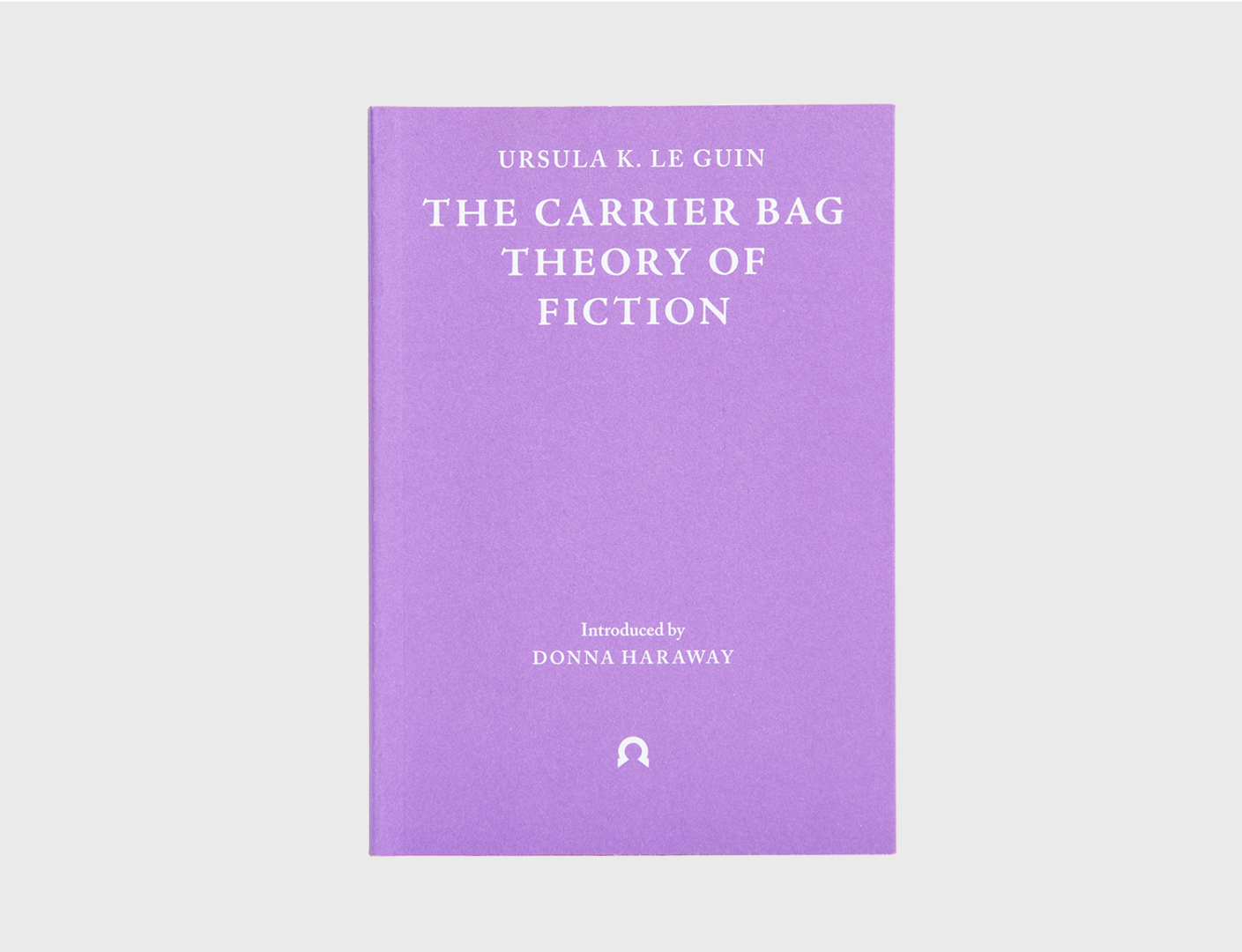
By Ursula K. Le Guin Introduction by Donna Haraway Images by Lee Bul
In The Carrier Bag Theory of Fiction, visionary author Ursula K. Le Guin tells the story of human origin by redefining technology as a cultural carrier bag rather than a weapon of domination. Hacking the linear, progressive mode of the Techno-Heroic, the Carrier Bag Theory of human evolution proposes: ‘before the tool that forces energy outward, we made the tool that brings energy home.’ Prior to the preeminence of sticks, swords and the Hero’s killing tools, our ancestors’ greatest invention was the container: the basket of wild oats, the medicine bundle, the net made of your own hair, the home, the shrine, the place that contains whatever is sacred. The recipient, the holder, the story. The bag of stars. This influential essay opens a portal to terra ignota, where the possibilities of human experience and knowledge can be discovered anew.Tantra, Mysticism and Magical Poetry: Nisha Ramayya’s States of the Body Produced by Love book launch
7pm, Thursday 19 September, 2019 at Treadwell’s Bookshop, 33 Store Street WC1E 7BS, London
Tantra, Mysticism and Magical Poetry: Nisha Ramayya’s States of the Body Produced by Love book launch, with Bhanu Kapil, Caspar Heinemann and Francesca Lisette
A special evening at Treadwell’s to celebrate the publication of States of the Body Produced by Love by Nisha Ramayya. Nisha is joined by poets Bhanu Kapil, Caspar Heinemann and Francesca Lisette for readings from their work engaging with the occult, gender and desire.
Nisha then presents a talk on tantric poetics, inviting listeners to explore poetry’s correspondences with magic, mysticism and tantra and its relation to weaving, myth and ritual. Followed by drinks, mingling and book signings.
22 Moons

22 Moons was an Ignota newsletter project responding to climate grief through the Major Arcana. 22 Moons was delivered on each New and Full Moon, bringing together 22 poets, writers, artists, thinkers, curators, astrologers, practitioners, witches and technologists for 22 lunations.
22 Moons was subsequently made into an e-book.
Contributors: Sophia Al-Maria, K Allado-McDowell, James Bridle, Federico Campagna, CAConrad, Jesse Darling, Alexis Pauline Gumbs, Ted Hand, Johanna Hedva, Caspar Heinemann, Jenny Hval, Zola Jesus, Bhanu Kapil, Nā-kojā-Ābād, Hoa Nguyen, Nisha Ramayya, Himali Singh Soin, Rebecca Tamás, Bones Tan Jones, Michelle Tea, Suzanne Treister.
States of the Body Produced by Love
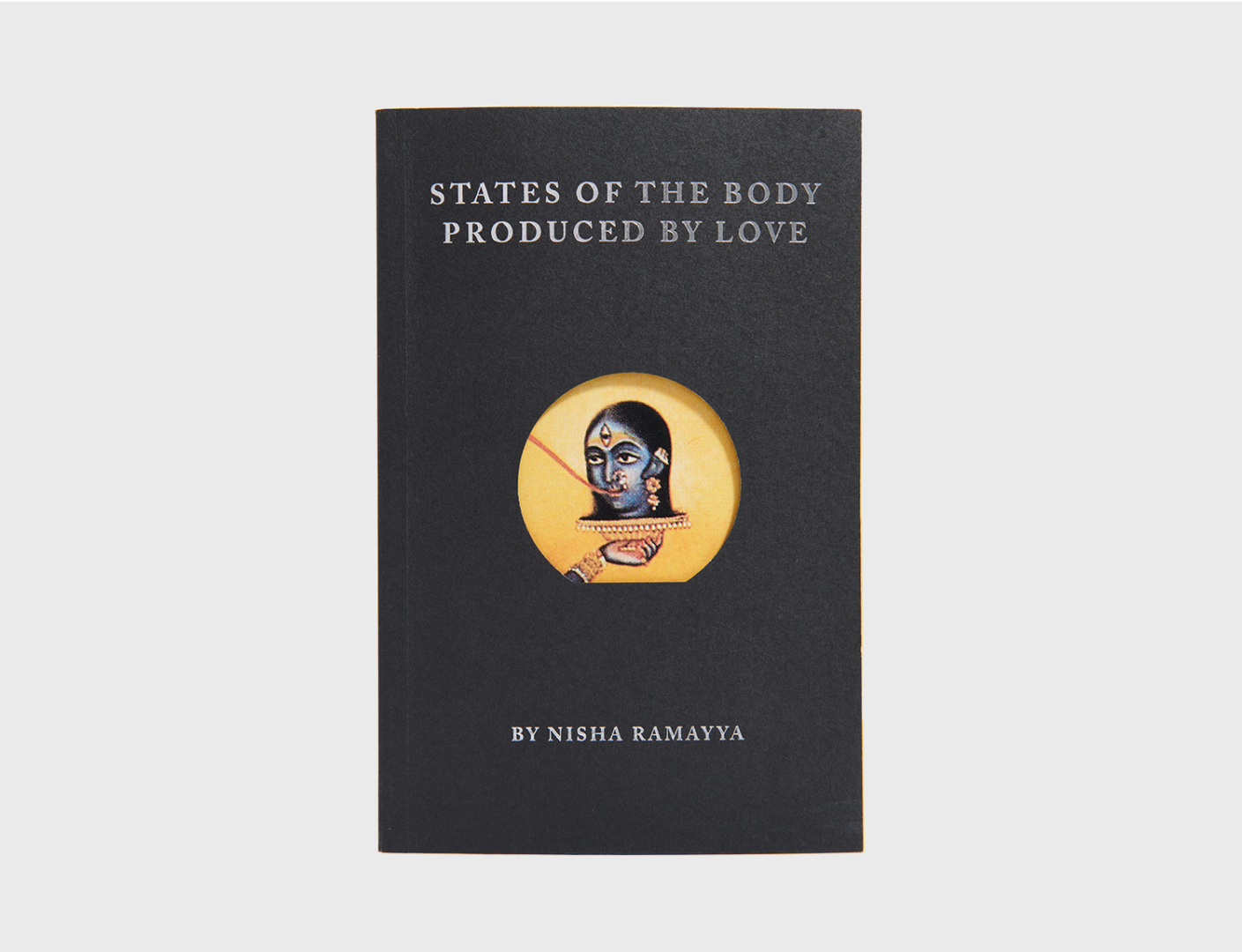
By Nisha Ramayya
A modern mystical journey through love – a many-headed snake twisting through devotion, sacrifice and the dream of returning home. In her visionary debut, Nisha Ramayya conjures an opalescent world by way of Tantric ritual and myth. Thousand-petalled lotuses bloom inside skulls, goddesses with dirty feet charm honeybees, strains of jazz standards bleed into anti-national anthems. States of the Body Produced By Love weaves essays, poetry and images together to offer fierce meditations on diasporic identity, language and resistance. From grief to bliss, this book explores the many states of the body seized by love in an incantation that never leaves its hold.Ignota x Spike: The Magic Issue
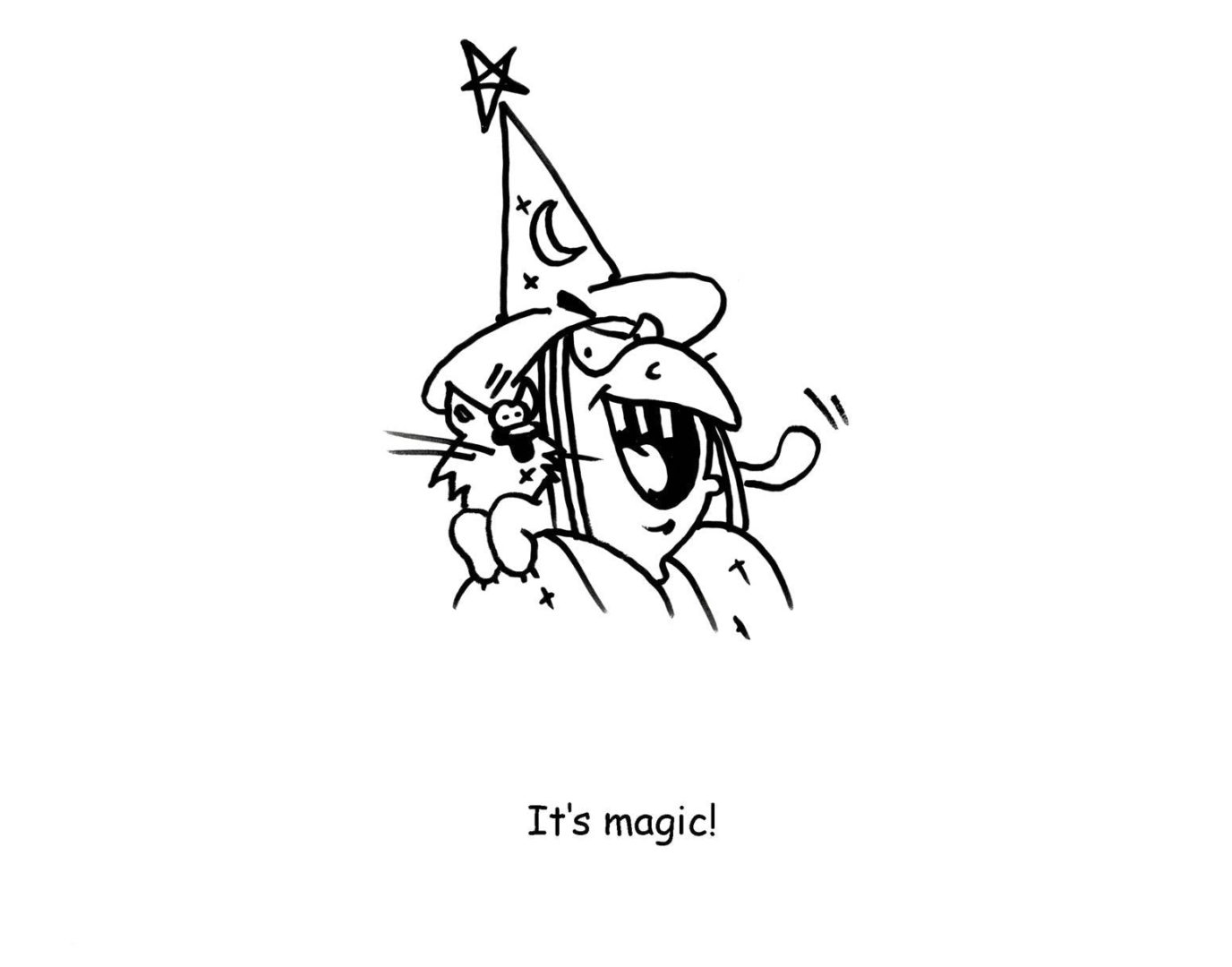
’The Magic Issue’ of Spike Art Magazine, conceived in collaboration with Ignota, includes Spells contributors CAConrad and Ariana Reines in conversation about the relationship between writing and ritual, Bhanu Kapil’s favourite artists and The White Paper editor Ben Vickers and Hans Ulrich Obrist on the algo seance.
We would like to cast a spell on you that will only work if you read this whole issue from cover to cover. Along the way, you will battle monsters, fall in and out of love, perform rituals, believe or disbelieve the evangelists of new religions, and enter magic circles that protect you against evil and create a safe space for your own vulnerability.
In the witching hours of the twenty-first century, magic is once again a tool with which we can change reality, but at the same time it is pervasive and pernicious, co-opted by spiritual entrepreneurism and the false gods of Silicon Valley. ![]()
We bid you welcome on your journey through esoteric, cybernetic, psychedelic, technoshamanic worlds that are still in the making. Use it wisely.
Visit Spike to read the issue in full.
Decoding the ‘Bitcoin revolution’

The White Paper contributors crypto-economist Jaya Klara Brekke and Ben Vickers look back on the decade since the invention of blockchain technology with Paul Mason, author of Postcapitalism: A Guide to Our Future. Have lessons been learned? What now?
In the wake of the 2008 financial crisis, the mysterious figure Satoshi Nakamoto published a revolutionary white paper that described a simple peer-to-peer electronic cash system. This was the origin of Bitcoin.
A decade later, Ignota Books publishes The White Paper as an invitation to return to the source. As editor Ben Vickers says, we’re entering a period akin to the collapse of the dot-com era. It’s a time of reflection, but also one where crucial questions about the future will be decided.
The discussion took place at Foyles in London on Monday 4 February. It’s a call to engage and participate, going back to the original white paper as the compass for the rapidly shifting terrain of contemporary techno-politics.
As the discussion explores, whatever your take on the blockchain, it’s a technology that will continue transforming our global economy. There is an urgent need to look at the realities as they unfold in real time. As Brekke puts it:
“There keeps being this idea of a moment when we’ll arrive at utopia, or that island where we’ll go and build that utopia, or Mars where we’ll go and build that utopia, and it’s based on this idea that there’s nothing pre-existing already…”
A decade after the birth of bitcoin, this discussion takes on the big questions around the implementation of the blockchain, digging into issues of trust and consensus, the emergence of different kinds of crypto-economics and models of governance, and possibilities for the future — both emancipatory and authoritarian.
“If there’s one thing we should have learned by now,” Brekke says, it’s the importance of looking at “the relationships between pre-existing systems and what you’re introducing into the world.”
The White Paper
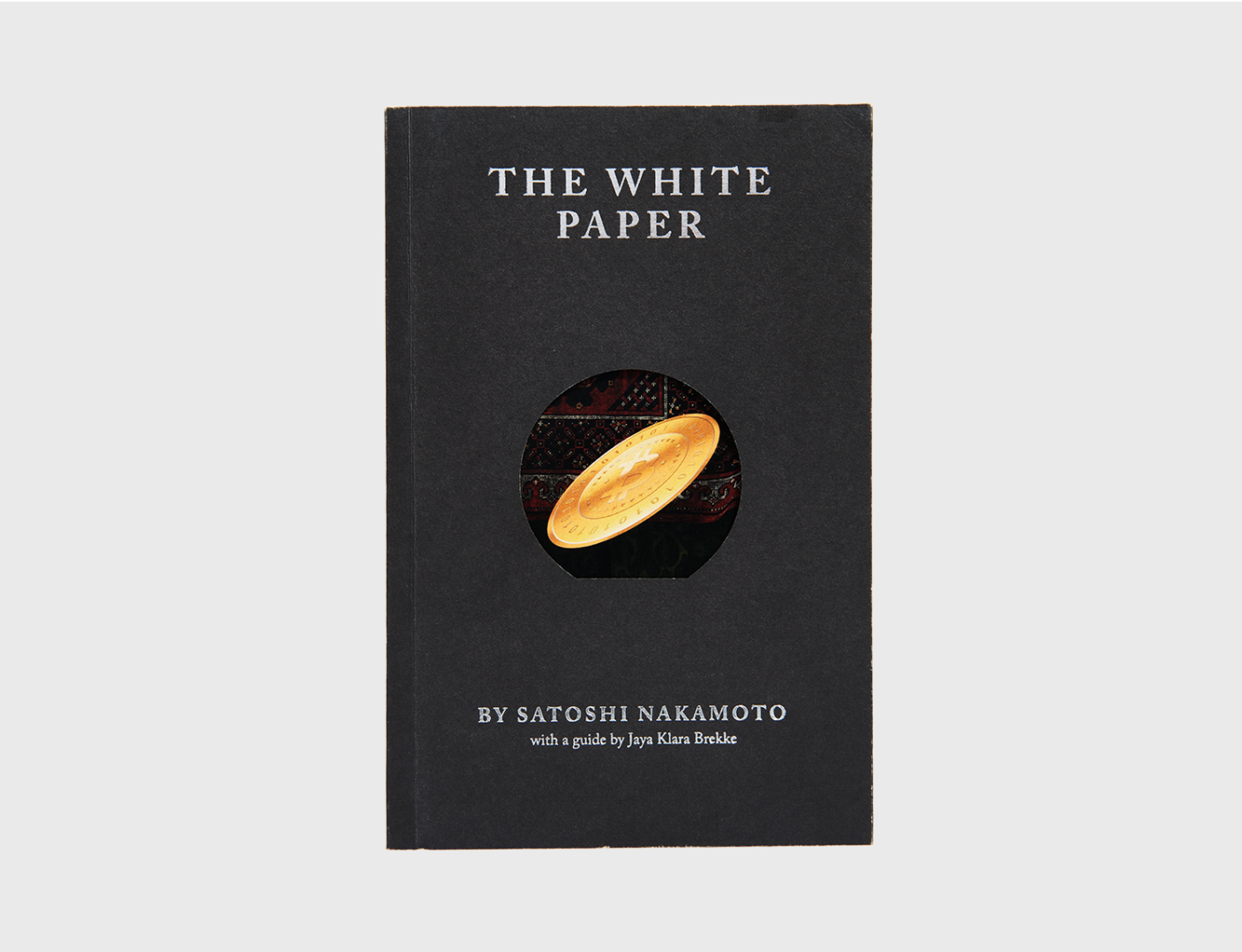
Edited by Ben Vickers Guide by Jaya Klara Brekke Introduction by James Bridle
In the wake of the 2008 financial crisis, the mysterious Satoshi Nakamoto published a revolutionary white paper that described a simple peer-to-peer electronic cash system that would later become Bitcoin. In the decade since the launch of the digital currency, the nascent blockchain technology behind Bitcoin has been heralded as having the same radical potential as the printing press or the Internet, in particular presenting extraordinary challenges to traditional banking. Yet the paper contains no reference to existing political ideas, monetary or economic knowledge. Why? James Bridle’s introduction situates Bitcoin within an obscure historical movement of decentralisation, powered by the ideologies of encryption, showing how blockchain is part of a wider project to redraw the maps of political possibility. The White Paper returns to Nakamoto’s canonical text as a Rosetta Stone that reveals the far-reaching implications of decentralisation, with crypto-economist Jaya Klara Brekke’s guide demonstrating how it can serve as the compass for a rapidly shifting terrain of contemporary techno-politics.Spells: 21st-Century Occult Poetry
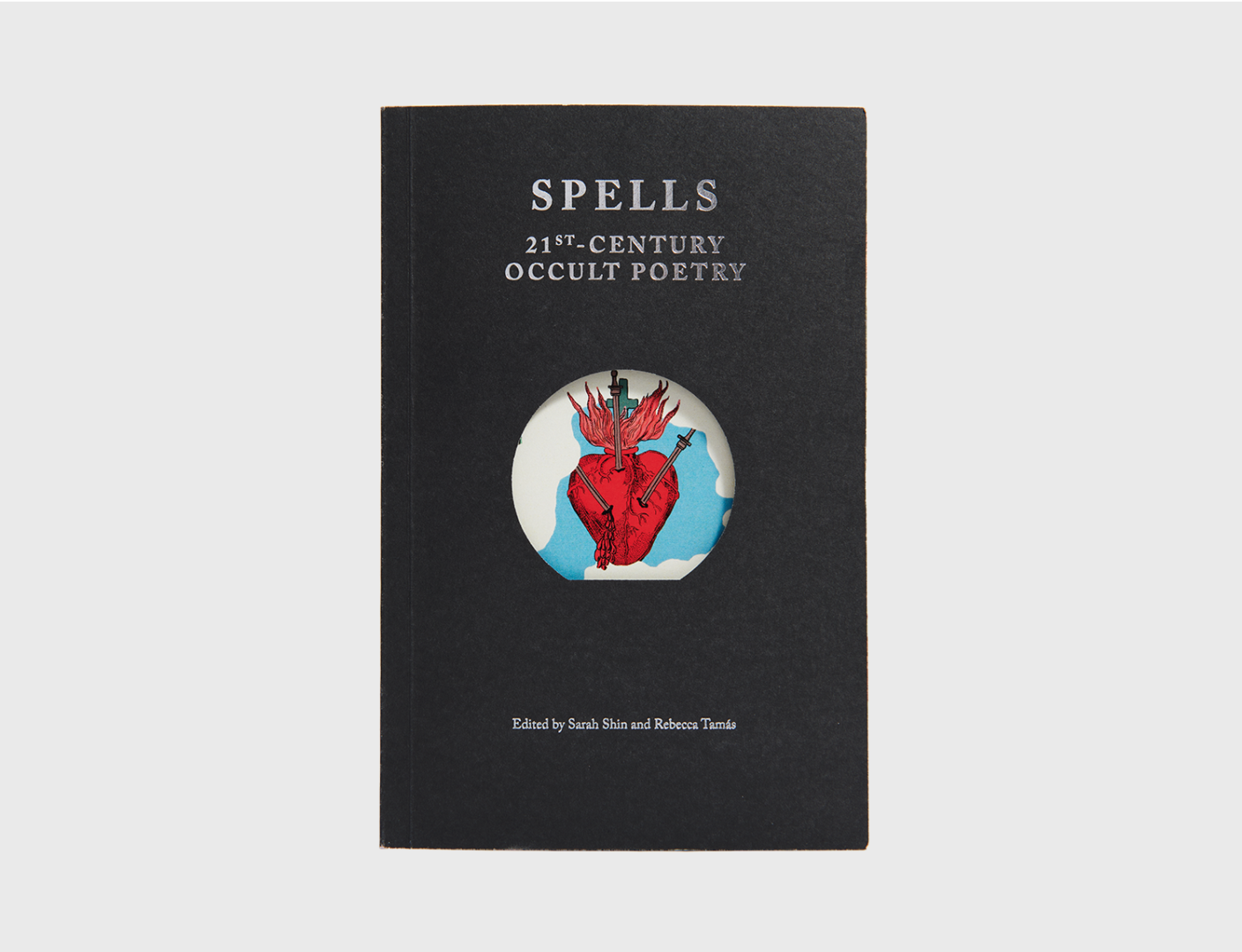
Edited by Sarah Shin and Rebecca Tamás Introduced by So Mayer
Spells are poems; poetry is spelling. Spell-poems take us into a realm where words can influence the universe.
Spells brings together thirty-six contemporary voices exploring the territory where justice, selfhood and the imagination meet the transformative power of the occult. These poems unmake the world around them, so that it might be remade anew.
Contributors: Kaveh Akbar, Rachael Allen, Nuar Alsadir, Khairani Barokka, Emily Berry, A.K. Blakemore, Jen Calleja, Vahni Capildeo, Kayo Chingonyi, Elinor Cleghorn, CAConrad, Nia Davies, Kate Duckney, Livia Franchini, Will Harris, Caspar Heinemann, Lucy Ives, Rebecca May Johnson, Bhanu Kapil, Amy Key, Daisy Lafarge, Dorothea Lasky, Ursula K. Le Guin, Francesca Lisette, Canisia Lubrin, Karen McCarthy Woolf, Lucy Mercer, Hoa Nguyen, Rebecca Perry, Nat Raha, Nisha Ramayya, Ariana Reines, Sophie Robinson, Erica Scourti, Dolly Turing, Jane Yeh.
Full Moon Journals and Offerings
Acknowledgements
Ignota (2018-2024) was founded by Sarah Shin and Ben Vickers. We thank all our authors, contributors, collaborators and fellow travellers for joining us on the path. In particular, we are grateful to our team: Jay Drinkall, Publishing Manager and Full Moon Journal Editor, and Susanna Davies-Crook, Head of Growth, who launched and led the Ignota membership programme; our designer Cecilia Serafini; web developer James Wreford; and Marleen Boschen, Louisa Lee and Niki Seth-Smith, for their contributions to the early years.
All enquiries hello@ignota.org